

FREE Vol. 18 No. 9 (1) • June(1) 2011 • www.indianlink.com.au • FORTNIGHTLY SYDNEY Level 24/44 Market St, Sydney 2000 • GPO Box 108, Sydney 2001 • Ph: 18000 15 8 47 • email: info@indianlink.com.au Sydney • Melbourne • Adelaide • Brisbane • Perth • Canberra YOUR SAY The pros and cons of carbon tax Don’t tax our breath Price on pollution Say Yes to carbon tax Taxedalreadyenough Science settled: No tax No carbon tax I say yes! We love climate action Indian Link Radio 24/7 on the net Log on to www.indianlink.com.au Indian Link 24/7 Radio 18000 15 8 47

2 <> JUNE (1) 2011 INDIAN LINK

JUNE (1) 2011 <> 3 NATIONAL EDITION

4 <> JUNE (1) 2011 INDIAN LINK
INDIAN LINK
PUBLISHER
Pawan Luthra
EDITOR
 Rajni Anand Luthra
ASSISTANT EDITOR
Sheryl Dixit
Rajni Anand Luthra
ASSISTANT EDITOR
Sheryl Dixit
MELBOURNE
Preeti Jabbal
CONTRIBUTORS
Gaurav Pandey, Manpreet Kaur, Dinesh Ramanan, Vidya Muthanna, Pallavi Sinha, Drishti Nanwani, Sai Narayan, Ritam Mitra, Noel G deSouza, Roy Lange, Dilip Jadeja, Chitra Sudarshan, Malli Iyer, Sandip Hor, Geeta Khurana, Thomas E. King, Rani Jhala, Malavika Santhebennur, Nancy Sood, LP Ayer

ADVERTISING MANAGER
Vivek Trivedi 02 9262 1766
ADVERTISING ASSISTANT
Drishya Sharma 02 9279 2004
GRAPHIC DESIGN AND LAYOUT
Indian Link Design Department
Indian Link is a fortnightly newspaper published in English. No material, including advertisements designed by Indian Link, maybe reproduced in part or in whole without the written consent of the editor. Opinions carried in Indian Link are those of the writers and not necessarily endorsed by Indian Link. All correspondence should be addressed to
Indian Link
Level 24/44 Market St, Sydney 2000 or GPO Box 108, Sydney 2001
Ph: 02 9279-2004 Fax: 02 9279-2005
Email: info@indianlink.com.au

All fair in love and war
August is turning to be quite a busy month for the Indian community in Sydney. 15th August is a defining day in the Indian calendar. On this day after over 200 years of British Raj, India achieved independence and the day is marked as a public holiday in India. Celebrations take place, not only in India but amongst the Indian diaspora worldwide. In the United States, Bollywood stars are paraded as Marshals for the yearly celebrations, (Preity Zinta in 2010, Shilpa Shetty in 2009, Deepika Padukone in 2008). The community unites and the occasion is used to showcase India’s unity in these countries.
Sydneysiders this year will be offered two choices to celebrate the 64th anniversary of India’s freedom. By the stroke of midnight on 15th August, two fairs would have taken place within a time span of seven days and a distance of less than 15 kilometres between the two venues.
The United Indian Associations Inc (UIA) would be celebrating its annual India Australia Friendship Fair on 14th August at Sydney Olympic Park. A dazzling venue which gained importance when Australia conducted the 2000 Olympics, the fair is the highlight of UIA’s yearly activities. With over 15,000 people in attendance, the occasion is celebrated with festivity and gives a chance for the community to
BY PAWAN LUTHRA
get together. Funds collected from the entrance monies and stalls, after costs, are used to support other UIA activities during the year, such as its various annual programs, and for operating their Parramatta offices, besides building up funds for an India House.
This has been UIA’s dream for a number of years and year in year out, the grand vision of India House drives the India Australia Fair preparation. What is unclear is the level of success which has been achieved towards realising this goal. UIA, which is an umbrella body of various Indian associations in Sydney, has no legal requirement to share their financial strength with the community at large. Perhaps as a show of solidarity with the community, the UIA can learn to adopt such transparency. This will have the potential of rallying the community towards the cause of an India House. This year, the newly formed Council of Indian Australians (CIA) has also decided to stage an India Day fair, a week before UIA’s fair. On 7th August, those who cannot wait for the celebrations for India’s independence to begin, can join the festivities at
Parramatta Park. While some see it as a blatant attempt to steal UIA’s thunder, it is also an opportunity for the local Indian Australian community to have a choice for the celebrations for the future.
Both groups will chase the same stall holders, sponsors, attendees and yes, the same politicians. While it is another sign of a community divided within itself, it also is a chance for both UIA and CIA to showcase what they can each offer to the community. It is often when one is challenged, that the best is brought out.
Over the longer term, it will be difficult for either organisation to stage these events to massive scales as they fight for funds from the same sponsors and public. Only the fittest will survive. Meanwhile to all Indian Australians in Sydney, the message can only be: enjoy the options of two weekends of fun and festivities, courtesy the UIA and CIA. While some will talk about the unity in our diversity, we also do showcase a large diversity in our unity.
JUNE (1) 2011 <> 5 NATIONAL EDITION www.indianlink.com.au EDITORIAL
What’s On
SPIRITUAL
Chinmaya Mission Programs
Sun 8 June to 14 Aug Free meditation classes at Chinmaya Sannidhi Ashram. Sat 2 to Sun 3 July Teenage camp
“You Ask, He Answers” at Chinmaya Sannidhi Ashram.
Sat 9 to Sun 10 July Guru Poornima family camp “Happiness Here and Here After”
Mon 11 to Mon 18 July 7.30pm to 8.30pm. Free public talks
Dakshinamurthi Stotram by Brni Sujata Chaitanya.
Fri 15 July Guru Poornima Pooja at Chinmaya Sannidhi, 7.30pm to 9.00pm.
Fri 29 to Sat 30 July Local youth camp
“Step Up and Meet the Infinite”
Fri 12 to Sat 13th Aug Ladies Retreat “ Madhurashtakam : Discovering Your Inner Beauty”
Classes with Br Gopal Chaitanya
Fri 27 May 7.30pm to 9.00pm (fortnightly) Srimad Bhagavatam classes. Text covers two main questions of life: How to live in the world happily and how to leave this world happily?
Details Banu on 9675 7647
Sun 29 May 2.30pm to 3.45pm (weekly) Bhagavad Geeta classes. Text covers the purpose and goal of life, is there a next life, what is real love and more questions. Details Lakshmi on 9644 7978
Sun 29 May 1.00pm to 2.30pm (weekly) Youth classes. 18 to 30 years. Text covers preparation of the Youth for Great success. Answers questions such as What is right thinking? How to lead a successful, happy and fulfilling life? Details Feneil on 0416301077
Starting in June/July, Friday mornings
Tulsi Ramayana and Thursday mornings
Dakshinamurthy Stotram
Details Chinmaya Sannidhi Ashram 02 8850 7400 or visit www.chinmaya.com.au
Gayatri Mahayagya
Sun 12 June 9:00am to 12:00 noon. Collective prayers for world peace and
harmony. All World Gayatria Parivar Australia invites you for 9-Kundi Yagya on the auspicious occasion of Gayatri Jayanti. Also features book stall, exhibition presentations followed by Mahaprasad. Participation is free.
Details Neeraj Ram 0405 777 539
Guru Purnima Celebration
15, 16 and 17 July Manav Dharam
Society of Australia announces a three day discourse on Hanuman Chalisa by Mahatma Suvidhya Baiji of Haridwar, India on the occasion of Guru Purnima. Venue: Casula Community Hall, Ingham Drive, Casula. Details Subodh 0404 468 276 or Sanjeet 0432 682 275.
FUNDRAISERS
Bollywood and the Jewels of Bengal
Sun 24 July 4-7pm Avijit Sarkar and musicians of Jazba band present a music concert in aid of the Australian Hindi Indian Associations Senior Citizens Group. Details Avijit Sarkar 0425 275 883.
Bollywood Golden Melodies
Sun 19 June 1:00 pm North Shore
Band Baajaa presents a fundraising show for Indian Seniors Group at Seniors Leisure and Learning Centre, Epping. Details Vinod K Rajput 02 9943 0523 or vindodkrajput@hotmail.com
Yaadon Ki Baarat
Sat 20 August 5:30 pm Vijay Jogia and Daxa Chauhan present a charity music night in aid of RAIN seniors group. Also featuring Bhangra, DJ music by Mayank and Dandiya Raas. Details Rita Devmurari 022897665 or sdevmurari@hotmail.com
SENIORS
Chatswood
Sri Om Care is opening a new Day Centre in the Lower North shore, between Chatswood and Artarman.
Indian Link Radio 24/7

Seating limited to 20. Details Jay Raman 0410 759 906.
Pennant Hills
Mon 27 June 11am-2:30pm. Sri Om Care is opening a new Day Centre of Seniors at Pennant Hills. 25 members only. Operative on second and fourth Mondays of June. Opening session will be inaugurated by Chairman HH Sri Om Adi Sakthiyendra Swamigal. Details Jay Raman 0410 759 906.
SAMAAA-CareConnect Workshops
Wed 8 and Thurs 16 June 10:00am1:00pm. South Asian Muslim Association of Australia (SAMAA) and CareConnect are organising workshops on aged care issues. The workshops include talks by experts and representations by aged care providers. Brunch will be provided. Register Ivy Yen 02 9830 8905. Details Syra Buksh 02 8824 6435 or www.samaa.org.au
MISC
SBS Photo Competition
Take a picture of what Australia means to you and upload it onto the SBS My Home Website to be in the running for a D3100 14 megapixel Digital SLR camera and a Twin Lens Kit. Last date 23 June. Details sbs.com.au/chinese or Claudine Ellis 03 9949 2113.
2011 Young Writers Competition
The Transcultural Mental Health Centre is calling for creative writers aged between 12 to 24 years across NSW to enter TranSCRIBE. The theme is ‘Half Way Home’. Last date Mon 1 August. Entries are to be emailed or uploaded to the TranSCRIBE website. Details www.dhi.gov.au/tmhc/transcribe
Sakhi Sangam
24 July Sydney Sakhi Sangam will be held at the Croatioan Club. 921 Punchbowl Rd (Cnr Canterbury Rd), Punchbowl. Details Nandini Thadani
A bit more dignity, please!
It has been a matter of great pride that Sydney University awarded two distinguished prizes to two outstanding scientists from India within the last 6 months. Dr Vandana Shiva was awarded the Peace Prize and Dr APJ Kalam received his 41st honorary doctorate in Engineering. Despite the corruption and bureaucracy which drives many intellectuals out of the country to build fame and fortune for the western world, India is not short of geniuses who outshine their contemporaries globally. Dr Kalam is a fine example, who rose from his humble beginnings to become a rocket scientist without any foreign
02 9181 2204, Sushma Ahluwalia 02 9894 0070.
National Leadership Development Weekend
Fri 1 to Sun 3 July Sikh Youth Australia has organised a weekend designed to provide young Sikh adults with inspiration and practical skills with the help of high profile international facilitators, at Elanora Conference Centre, 19A Wesley Street, Elanora Heights, NSW 2101. Details email events@sikhyouthaustralia.com
TLC-CLAN Course in Community Legal Assistance
Toongabbie Legal Centre (TLC) has initiated a project to identify and train members of local communities in the procedures and protocols of the local court so that people who are unable to obtain assistance from the Legal Aid Commission or pay for private lawyers can take minor matters to court. This training will equip you to navigate through our legal system and beyond, and give you the tools to support disadvantaged and vulnerable people facing our legal government system. Training will be conducted over two Saturdays by experienced members of the legal profession and further follow up courses will be provided to ensure participants have an understanding of the Australian legal system. Details www.tlc.asn.au
Sanskrit School event
Sun 19 June Sanskrit Language School Bala Samskar Kendra & Sydney Veda Patasala will celebrate their annual day at Ermington Community Centre, Ermington from 3.00 pm to 5.30 pm. Details Akila ramarathinam 02 88147016.
Compiled by Radhika Bhatia (Year Ten, Abbotsleigh Girls School) as part of her week-long work experience program with Indian Link
qualifications or experience. I wish that in my lifetime, the Indian government will actively and wisely address the issue of brain-drain.
SDr Kalam equally received honour and affection from the academia and the Indian community. We are very grateful that Consul General gives us the opportunity to meet with visiting dignitaries which we must respectfully accept as a privilege. However, during the reception felicitating Dr Kalam, the most disappointing experience was the senseless attempts of photo sessions by our country folk. It was embarrassing and even threatening when he was pulled and pushed by the crowd eager to get close to him for a photograph with him, which in the end, seemed meaningless. Finally, security was called in to control the crowd. Dr Kalam, India’s former President should have the status of a sovereign. He should be an inspiration and a role model well beyond flashing a picture taken with him by fluke.
Shailaja Chaturvedi Penrith, NSW
6 <> JUNE (1) 2011 INDIAN LINK
Subscribe to Indian Link Radio for $9.95 each month. 24 hours, 7 days Indian Link Radio Minimum 12 months subcription, $50.00 refundable deposit
Saturday 9th July 2pm on site
• 4.5 rooms • Double Garage • Two bathrooms
• Separate laundry outside • Timber floors
• 510 m2 land area with two street frontages
• New kitchen with new gas stove
• New paint internal and external
• Can earn extra income up to $1300.00/week, last ten years running registered family day care.

• All the rooms have A/C units with inverters
• Footsteps to Station and shops • No Through road
• Completely rewired – electrically safe
• Instantaneous gas hot water unit- hot water never runs out
• Gas cooking and two gas points for internal gas heater
• House is in the Strathfield Girls High School catchment area


JUNE (1) 2011 <> 7 NATIONAL EDITION
INSPECTION DATES AND TIME 11/06 12.30 to 1.30 pm 18/06 12.30 to 1.30pm 25/06 12.30 to 1.30pm 02/07 12.30 to 1.30pm
17 Smallwood Ave, Homebush


8 <> JUNE (1) 2011 INDIAN LINK

JUNE (1) 2011 <> 9 NATIONAL EDITION
To tax or
About carbon tax
‘Carbon tax’ has become the Labor Party’s watchword, and the Liberal’s bugbear. So what exactly is the background behind the debate? Here are some facts that put the issue into perspective, and could possibly help us decide on what’s best for Australia.
The government plans to tax the carbon pollution caused by burning fossil fuels, including coal and petroleum. A carbon tax puts a price on the carbon released when fossil fuels are burned, and this includes the cost of the environmental damage caused.
Taxation of liquid fuels and coal takes account of both their energy content and carbon dioxide emissions, and also emissions into the local environment that have adverse health effects.
With such a tax, businesses will be forced to develop and use technologies that reduce carbon emissions. These could be in the form of fuel-efficient cars and renewable energy sources. Individuals too, will have to consider their use of fossil fuels, including the cars they buy and the appliances they use.
But emitters will be the hardest hit, as using carbon-based fuels would eventually cost more than reducing their use of fossil fuels.
With a price on carbon, the government will tax each tonne of carbon pollution released when fossil fuels are burned. The carbon price is a tax rate set by the government; the Gillard government is yet to finalise this price.

The Australian government’s proposed tax on carbon emissions has led to widespread debate about the viability of the measure. To add to the confusion, the charge and counter-charge between the government and the opposition have sent conflicting signals to the country.
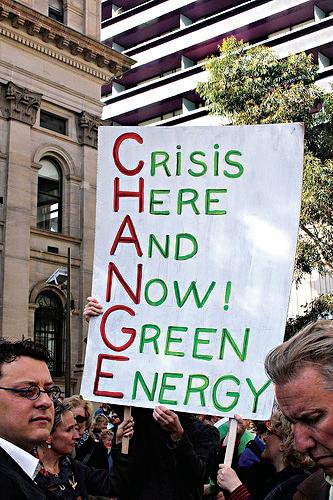
Even supporters of the move are concerned that the initiative may fall victim to political complexities. On the other hand, sceptics have been arguing that the proposed move will hurt the country’s economic growth.
Indian Link sought to gauge the mood of the Indian community on this contentious issue, and as expected, opinions differed. While many termed the introduction of carbon tax as a positive step, others seemed to question its merits. Here are some of the responses.
Say no to carbon tax!
It’s hard to believe anything that politicians say these days. Four days before the election last year, Prime Minister Julia Gillard had declared that “there will be no carbon tax under the government I lead”. But as soon as it was clear that the Greens held the balance of power in the Senate and had a crucial role in Julia Gillard getting “The Lodge” in Canberra, the Labour Party and their first female Prime Minister backstabbed Australia and announced that they would support the carbon tax.
This will bring Australia to a complete halt. Just think about the present situation. Our electricity bills have doubled in the last four years and will undoubtedly increase further even without a carbon tax. Add a carbon tax and it will be impossible to use any electric appliances in future. Then there is the case of rising petrol prices. Next is your all-important grocery bill. The price of raw food in Australia is one of the highest in the world, and it has been increasing faster than inflation. The carbon tax will undoubtedly push grocery prices through the roof.
We are already paying some of the most expensive mortgages and taxes in the world. All of us are affected by these increases. Some of us have cars and
mortgages, but almost all of us pay income tax and buy groceries. A further tax without any extra source of income is just pure insanity.
What is even more evident is that unlike GST that John Howard introduced, the carbon tax would not be a constant figure. It will very likely start from a low price and will continue to move upwards. Labour party honchos like Greg Combet say that the government will compensate families with generous handouts, but does anyone really believe him?
What is the guarantee that the compensation by government would be enough to pay for increased expenses?
I’m not a climate change denier nor do I think pollution is all-natural. Of course, humans are playing their part too. But what I really don’t understand is how Australia can achieve anything by destroying its industries, economy and way of life for something that is supposed to be a global problem?
The latest figures show that the Australian economy is going backwards. The Aussie dollar is way too strong, and as a result key industries like mining are losing ground. We all know that the Australian economy heavily relies on the progress made by the mining sector. A small change in the Australian dollar is causing reduced growth in exports. Imagine what will happen when we will tell the rest of the buying world that now our exports are not only expensive due to a strong dollar, but we would also charge an extra carbon tax.
I don’t think I have to explain what will happen next. The time has come for ordinary people like us to speak up and tell the government that enough is enough. Say “No” to carbon tax before it’s too late!
Mark Sharma, Sydney
Yes and a hefty one at that
Climate change is certainly one of the most complex issues facing man-kind. Unfortunately whilst everyone is happy to acknowledge that, no one wants to be the first to move – be it to make energy cleaner, or to stop exporting “dirty” coal or to pay more for electricity.
And yet it is apparent that for us to really make a
COVERSTORY
Pro and anti carbon tax protests are becoming commonplace, Indian Link gauges the mood of the Indian community on the issue
Photo: AAP
not to tax?
difference, we can’t just sit on our hands and do nothing.
The Government’s proposed carbon tax has been great political capital for the Federal Liberal party which refuses to be constructive on any issue facing this country. The mother of all scare campaigns has been launched and if one were to believe it, the carbon tax will obliterate industry, agriculture and mining and turn Australia into a wasteland full of unemployed people. The “direct action” campaign of the Liberals is a big joke. Green army, planting more trees etc. – this is subjuvenile stuff that 7 year olds dream up!
The truth is that there needs to be a carbon tax and a hefty one at that. People are not going to change entrenched and wasteful habits or lessen their huge carbon footprints (one of the largest per capita, in the world) without punitive taxes and consequences.
Of course, vulnerable sections of society will and should be compensated – but, this fact is being conveniently overlooked by vested interests opposed to the tax.
This is not a tax that the Government is raising to spend – it is a zero sum game wherein all of us need to do our bit and change our way of life so that the planet can survive many decades of our past abuse.
On its own, the Labour Government would have been pusillanimous and rather avoided this issue, but the Greens have stiffened their spines and good on them!
Darshak Mehta, Sydney
Yes, as soon as possible
If I were to speak considering the economy, I’d say no as it might affect the mining companies and the economy is driven by them.
However, as a citizen of this country I feel that the tax should be applied as soon as possible. Globally, we are buying so much fuel to generate power. All this is affecting the climate very badly.
I think the carbon tax will make people more conscious of the climate and the need to protect it. I understand there is a political side to the story, but at the end of the day it’s a good measure which will help the environment.
Utkarsh Dubey, Sydney
For the sake of coming generations
The proposed carbon tax will benefit the country and the environment. I think we shall all play a part in ensuring that our coming generations can breathe in a better environment.
Its financial impact on people can be limited when it’s implemented on a wider scale. There is an urgent need to bring in such measures now, before it is too late.
We should also request other countries to tighten their carbon norms. The failure of the Copenhagen Summit tells us that we need to build a consensus on such issues.
Need for a cleaner world
It is a fact that we need to reduce pollution and tackle climate change, which has been proved as a factor destroying the world’s ecobalance. However, the only way we can produce food, use transport, build houses and make clothes is through methods that are polluting in themselves.
Navjeet Matta,
Sydney Education is the key
My biggest complain is that the government has not done enough to educate people about the need to implement the carbon tax. It is a difficult issue, and Prime Minister Julia Gillard’s flip-flop attitude has not helped. Many see it as a ploy to ensure Gillard continues to enjoy the support of the Greens. Other countries in the world are not doing it yet, because their economies don’t allow it.
Even if Australia implements it, emissions from countries such as China and India are not going to come down. So I wonder how much of a direct difference it is going to make globally. However, it is a positive step. If we manage to implement it, maybe other nations will be influenced to follow suit as well. So it’s not such a bad thing, considering how many natural disasters we see these days, which are related to global warming. I think common sense needs to prevail here.
Syed Kabir, Sydney
It’ll help us focus on cleaner energy
Carbon tax should be implemented without any further delay in order to reduce CO2 emissions. The disadvantage at the moment seems that the cost of living will increase for households by this tax, but in the long term, quality of life will improve in terms of having cleaner environment. Implementing the carbon tax
Continued on page 12
We need to switch to clean energy sources like wind, solar or geothermal power. Australia has the means and ability to support these new technologies and in time, we could become a clean superpower.
But the crux of the problem is that with our current economy, clean technology is much more expensive than the old, outdated technology that creates pollution. And this is why we lack the incentive to switch to cleaner technology.
Australia’s efforts to tackle pollution are falling behind other developing nations.
Australia’s emissions projections had increased by four percent since 2007 to 24 percent above 2000 levels by 2020, due to its surging resources sector.
Heavily reliant on coal-fired power and mining exports, it is one of the world’s worst per capita polluters
A carbon tax can be implemented by taxing the burning of fossil fuels like coal, petroleum products such as gasoline and aviation fuel, and natural gas in proportion to their carbon content.

 Photo: AAP
Photo: AAP
Continued from page 11
will also reduce dependence on coal energy and will pave a way for focusing on cleaner energies such as wind and solar energies, which have been underestimated and underinvested in till now.
Sanjay Goel, Sydney
Will not achieve anything
In principle I agree that there should be a carbon tax. Something needs to be done about the poor health of the environment. But a tax is not the solution. What the government’s proposed tax will achieve and how, is not clearly defined at all. Will it go towards R&D on alternate sources of energy, for example? Overall, I don’t think the carbon tax is going to achieve anything.
Shyamal Bhatia, Sydney
Carbon pricing an urgent necessity
Given the incontrovertible evidence that the planet is in danger as a result of excessive levels of carbon emission, I simply can’t wait to see a carbon pricing scheme in operation. The scheme, as it is conceived, is actually the second best but I am hoping that it will eventually lead to a full blown market-based pricing scheme such as the Rudd government’s ETS which derailed a year and a half ago.
I don’t buy into the argument that a carbon tax will impose an unacceptable burden on struggling families because the way the scheme is being constructed, there will be inbuilt compensation for low-income household. But even if this wasn’t the case, I am confident most Australians would accept the sacrifice as a cost of world leadership, pretty much as they are accepting the costs, both
Winners and losers
The tax will include the stationary energy, transport and the industrial processes sectors, but agriculture will not be included in the scheme.
By putting a price on pollution, we are aiming to make clean technology cheaper in the long run.
Governments, economists and business leaders around the globe agree that levelling the economic playing field by placing a price tag on pollution is one of the best ways to reduce pollution.
If it’s cheaper to produce clean energy than it is polluting energy, businesses will invest in solar, wind and geothermal projects across the country, thus creating new jobs within new industries.
But introducing the carbon tax would mean that goods and services that rely on carbon emission will become far more expensive.
Electricity in Australia comes from coal, so prices of electricity will increase significantly, thus affecting the common man.
A carbon tax could disproportionately affect low income groups, but this can be addressed by using tax subsidies to support these groups.
in terms of lives and money, of our participation in the Afghanistan campaign. Australia is proud of its reputation as a nation that punches well above its weight, and it is well understood that means making more than just a proportionate contribution to global projects.
Nor can I accept the you-go-first approach that wrecked the Copenhagen climate conference and is apparently supported by some of our short-sighted politicians; nor the puerile view that Australia need not act because any reduction it can achieve in carbon emissions will not make a jot of a difference to overall levels. That is not the stuff of leadership. Had that view always prevailed, we would not have fought side by side with other responsible nations in the World Wars or in Iraq and Afghanistan. We did that simply because morality demanded it.
I sincerely hope that the climate change committee will quickly reach a deal and get something moving.
Om Khushu, Melbourne

It will hit small businesses
Australia is home to some of the most beautiful natural environments on earth and it’s imperative to our economy that we protect these. The World Heritage listed Great Barrier Reef alone is worth about $5 billion to our economy. It is a precious natural icon and we are its guardians.
It is fair to expect that any tax will have to be passed on to the consumer. But the simple fact is that small businesses don’t need this. We have just endured the GFC, multiple interest rate rises and multiple natural disasters with lasting impacts in the business community. The consumer is already shying away from the retail market. For this to be followed up with an added tax adds insult to injury. The tax will hit small business in the hip pocket with higher costs for electricity and fuel, and that’s at a time when some businesses are struggling to stay afloat. Just walk down to your local shopping strip and see the number of ‘To Let’ signs. We need clarity on the carbon tax objective to reduce carbon pollution, but I’m concerned that the current proposal could be tainted by the political imperative to do a deal, rather than what’s best for the nation and the people. I’m not saying we should do nothing. We should do the right thing. The issue of climate change is something we need to get right because the cost of doing nothing is just as high.
Harvin Dhillon, Melbourne

Leading by example
This debate has been going on for some time now. Sadly, the carbon debate has been politicised in this country, instead of moving towards a consensus on the issue. It is true that coal is one of the primary pollutants, but it is also the golden goose for Australian economy. This tax will affect the mining sector. Having said that, in the long run, a viable solution to curb carbon emissions has to be found. Ordinary Australians, including the Indian community here, I believe, would not have a problem with paying a little for a good cause, and would look at the tax as doing their bit for a better environment. I think more than the tax, it is the way it has been handled that
has left us asking a lot of questions. By implementing the tax, Australia can send out a message that it is a responsible country which does not mind taking the lead in tackling issues of global importance. I think it will raise our standing in the world as a forwardthinking and responsible nation.
Lakshya, Canberra
Across the world
Finland introduced the world’s first carbon tax in 1990. Initially the tax exempted a few industries and fuels. In 2010, Finland’s price on carbon was €20 per tonne of CO2. Natural gas has a reduced tax rate, while peat was exempted between 2005-2010.
The Netherlands currently levies a general fuel tax on all fossil fuels. Fuels used as raw materials are not subject to the tax. Tax rates are based on both the energy and carbon contents of fuels.
Sweden introduced a carbon tax in 1991 and raised it prices on fossil fuels. It cut its carbon pollution by 9 per cent between 1990 and 2006.
India introduced a levy on coal producers in 2010, and is expected to raise $535 million from the tax, the first measure used by the subcontinent to reduce companies’ use of fossil fuels.
Norway began the tax on carbon in 1991; but its carbon emissions increased by 43m per cent per capita between 1991 and 2008.
Denmark’s tax came into being in 1992 and applies to all energy users, including the industrial sector. However, industrial companies are taxed differently depending on how and for what the energy is used, and whether or not the company has entered into a voluntary agreement to apply energy efficiency measures. Denmark’s per capita carbon dioxide emissions were nearly 15% lower in 2005 than in 1990.
Switzerland introduced a carbon incentive tax in 2008, including all fossil fuels, unless they are used for energy. Swiss companies can be exempt from the tax if they participate in the country’s emissions trading system. Overall, greenhouse gas emissions in Switzerland remained stable between 1990 and 2007.
Ireland’s tax on oil and gas came into effect in 2010 and was estimated to add around €43 to filling a 1000 litre oil tank and €41 to the average annual gas bill.
Costa Rica enacted the tax on carbon pollution in 1997, set at 3.5 per cent of the market value of fossil fuels. The revenue raised from this goes into a national forest fund which pays indigenous communities for protecting the forests around them.
Major global economies like the United States, Japan and the European Union are making ambitious, if not strong pledges to reduce emissions.
China, the world’s largest emitter, has already made considerable progress in reducing emissions.
12 <> JUNE (1) 2011 INDIAN LINK
www.indianlink.com.au COVERSTORY





JUNE (1) 2011 <> 13 NATIONAL EDITION
WA Citizen of the Year Award for Indian-Australian researcher
Professor Ralph Martins’ extensive research on Alzheimer’s has led to a new insight into the disease and its causes
BY SAI NARAYAN
An Australian researcher of Indian origin Professor Ralph Martins has been awarded the WA Citizen of the Year Award 2011 under the ‘Professions’ category for his work


The State’s premier awards were introduced in 1972 to recognise the contribution of outstanding individuals and service organizations. The 2011 recipients were announced at the 39th annual awards presentation dinner on Saturday 28th May 2011.
For more than a quarter of a century, Ralph has been a dedicated researcher and world leader in Alzheimer’s research, during which time he has been part of medical teams who have made a number of internationally recognised discoveries which have contributed not only to the understanding of the disease, but also to its early detection.
Ralph’s other discoveries include the genetic risk factors and lifestyle factors which contribute to the disease. On the back of this research, he has published more than 200 papers in peer-reviewed journals, including some of the most prestigious international journals such as the Journal of Biological Chemistry and the Journal of American Medical Association
Ralph continues to develop the clinical capacity of Western Australia with active links to his international peers who are at the forefront of the battle against Alzheimer’s disease
Through his leadership, commitment and tenacity Ralph has built, and continues to grow, a body of substantial and world-class research. He also continues to develop the clinical capacity of Western Australia with active links to his international peers who are at the forefront of the battle against Alzheimer’s disease.
For more than 20 years, Ralph has been the Director and Head of the Sir James McCusker Alzheimer’s Disease Research Unit, and is also the Foundation Chair of Ageing and Alzheimer’s disease at Edith Cowan University.
Ralph, who has previously been named Western Australia’s Australian of the Year 2010, shares Australia’s breakthrough research on Alzheimer’s disease with specialists in India. Currently he is collaborating with Dr. Jacob Roy, President and Founder of the Alzheimer’s and Related Disorders Society of India (ARDSI).
ARDSI is involved in running Alzheimer-related clinics and research centres in India. He works closely with Indian researchers at the National Institute of Mental Health and Neuro Sciences (NIMHANS), Bangalore; the National Brain Research Centre, Manesar, Gurgaon; and with Dr. Benny Antony of Arjuna Natural Extracts Ltd, based in Kerala, with whom clinical trials will begin shortly in Australia to evaluate a novel formulation of the Indian herbal extract ‘curcumin’.
Ralph is also collaborating with Dr. Radha Murthy and her Nightingales Foundation, which is involved in understanding risk factors for Alzheimer’s disease in the Indian population. One of the projects he is working on is starting collaborative Alzheimer research centres in India in some of the major metro cities to work together with Indian researchers and scientists. As he says, “India is on the verge of an Alzheimer’s explosion of 100 million people affected by the disease in the near future and there is not enough government funding or awareness of the problem.”
Ralph was born in 1957 in Bahrain, in the heart of the
Middle East, to parents who hailed from Goa in India; his mother was a stenographer and his father an air traffic controller. As a Catholic, his parents found his education opportunities were restricted in Bahrain and so he was sent to a boarding school in Quetta, in the Baluchistan region of Pakistan, where he completed his “Senior Cambridge” secondary qualifications. Interestingly, to facilitate his frequent visits home, he was given a Pakistani passport (although he was never considered a Pakistani citizen).
It was his Catholicism that eventually led him to Australia, as there was no possibility for him to become a Bahraini citizen. He had an uncle who had migrated in 1960s; in June 1974, aged only 16, Ralph came to Perth and the rest of his family followed three months later.
While they had never felt quite at home in Bahrain or Pakistan, the family immediately felt at home in Perth. Ralph appreciates the choice, freedom and opportunities that Australia has given him. He was interested in science and medicine, but when he couldn’t get into medicine, he enrolled in biochemistry at the University of WA, where he met his Burmese-born zoologist/microbiologist wife Georgia, who now also works with the foundation. They married when he was 20.
Ralph went on to do research on the action of insulin on diabetics. “My mum had diabetes so that had driven me towards medicine,” he says. But it was Georgia’s father’s very different disease that ultimately determined his direction. “My father-in-law had Alzheimer’s, so I changed to neuroscience and started work with Colin Masters.”
On being asked how he felt about receiving the award, Ralph says, “I feel very proud of being West Australian and to get this award”. He acknowledges the McCusker family in standing behind his medical research and supporting him. Also acknowledging his wife’s support over the years, he adds, “Medical research is not a 9 to 5 job and can be very demanding”.
He believes the most important trait for success is self-belief and points out that many years ago when he started off with research into Alzheimer’s, there were many in Melbourne – then the ‘Mecca’ of medical research –who tried to dissuade him, but he was determined to go ahead. The success he has achieved is a testimony to his determination, self-belief and perseverance.
Ralph is recognised as a leader of research in Alzheimer’s disease. His team made the first significant discovery, showing that the beta amyloid protein that coats the brain is the foundation of Alzheimer’s. He has been instrumental in bringing to Perth new technology that makes it possible to determine if a patient has deposits of the toxic beta amyloid. He continues to work to develop an early diagnostic blood test and is of the opinion that an early diagnostic test is just five to six years away given the current rate of research is sustained. In his words, “I would like to have a blood test for Alzheimer’s just like we have a blood test for any other disease, and I’d like the disease to be detected at least 15 years before the onset of symptoms”. At the moment, by the time the disease is diagnosed, brain cells have already sustained damage which is often irrecoverable.
With lifestyle a surprisingly large factor in the onset of Alzheimer’s disease, Ralph suggests some basic warning signs GPs can pick up in their patients to get them onto a preventative course of action. Alzheimer’s risk factors include many of the usual suspects: lack of physical activity, obesity, high cholesterol, vascular-associated diseases (particularly type-2 diabetes), high blood pressure, and poor diet.
He says, “What’s good for the heart is good for the brain”. He recommends physical activity of around 30 minutes a day which includes a mix of cardio and weight training. His research has shown fish, turmeric and green tea to be deterrents against Alzheimer’s. He is collaborating with an Indian herbal product manufacturer to create an “anti-Alzheimer’s” pill which can incorporate all of these ingredients in a form that’s easy for the body to absorb.
According to him physical exercise is an excellent preventative strategy because it breaks down amyloids. However, the “use it or lose it” maxim (advocating stimulating and challenging the brain with mental activity) keeps the brains pathways strong but does not dispense with the damaging amyloids. He is actively involved in the St. Vincent de Paul organization (he is president of the Bentley
Ralph shares Australia’s breakthrough research on Alzheimer’s disease with specialists in India. Currently he is collaborating with Dr. Jacob Roy, President and Founder of the Alzheimer’s and Related Disorders Society of India
branch) and spends several hours a week volunteering and visiting the needy.
It is in work that he finds an enjoyable release: “It is more instantly rewarding, the joy of people being happy, just seeing their response, rather than doing research, which is a long road.”
Ralph is also an active member of Rotary International, and recently helped set up a micro-credit project in Kerala, India. Notwithstanding his international engagements, Ralph’s role as West Australian of the Year requires him to deliver about three lectures a week to local community organizations. “It’s busy, but it’s an enjoyable busy-ness,” he says. “In terms of raising the profile of Alzheimer’s and the work of neuroscientists, it has been a huge benefit.”
When asked about the projects he is pursuing actively for the future, Ralph mentions the collaborative Alzheimer’s research centres to be started in India, the anti-Alzheimer’s herbal pill collaboration with an Indian manufacturer and the development of an early diagnostic test as the most critical projects for him in the next few years to come.
Professor Ralph Martins is currently involved in a research group study on the impact of Alzheimer’s on Indian migrants living in Australia and is actively seeking healthy members of the Indian community aged 65 or above with perhaps some memory lapses, to come and participate in the research group. The contact details for anyone wishing to participate in the research group are Dr Amit Singh, Phone: 08-93866379
Email: amarjeet@astron.net.au
14 <> JUNE (1) 2011 INDIAN LINK
www.indianlink.com.au NEWSMAKERS



JUNE (1) 2011 <> 15 NATIONAL EDITION
The river of life flows on A poet at 76
Vimla Luthra migrated to Australia in 1993 at the age of 60. Soon after arriving here, she discovered that while Australia has a lot to offer younger migrants in relation to job opportunities and lifestyle options, for senior citizens it can be a daunting task to settle in their new home. Transport and the ease of commuting are a major drawback for seniors who are either thrust into the public transport system or are left at the mercy of their children or grandchildren to take them around. Vimla Luthra refused to let this limit her mobility and at age 61, with no prior driving experience in India, she embarked on a journey to get an Australian driving licence. This she accomplished and is said to be the oldest Indian Australian to pass her Learner’s driving test to become a full-fledged driver.
Fifteen years on, Mrs. Luthra set herself another challenge. She started writing poetry and set herself a goal to have a book of poems published.
She has always enjoyed reading and pursued different genres in literature. From Indian religious writers such as Kabir to Munshi Premchand; from Emily Bronte to Leo Tolstoy; from Vikram Seth to Salman Rushdie, Mrs. Luthra is a voracious reader. But what took her to the other side of literature, from being a reader to a writer, was when she heard of a competition on Indian Link Radio. In this competition, wellknown Sydney poet Abbas Raza Alvi gave listeners the starting line for a poem, and then invited them to write a poem for which he would compose a tune and then release a CD.
When she heard about the competition, a spark was lit within Mrs. Luthra.
“I thought that I should try my hand at poetry,” she told Indian Link
She penned her first poem at 75 and now at 77, Ms. Luthra has just released her maiden book of poetry called Jharna (Stream)
The book was launched at AHIA’s monthly senior citizens get-together at Westmead during the Sydney Writers Festival. The afternoon organised by Abbas Alvi, was a celebration of senior achievement.

“Mrs. Luthra is an inspiration to all of us in Australia,” said Mr. Abbas, addressing the hundred-odd people gathered at the launch. “At her age, to actively start writing poetry and then publish such a gem of a collection is indeed the mark of a person who has a true love for literature”. In her speech, Ms. Luthra acknowledged the inspiration and encouragement offered by Mr. Abbas in bringing together her maiden poetry venture.
“I am also grateful to my family, especially my son Rajan and nephew Saurabh, who were my sounding boards when I was writing these poems,” she said.
“Poetry allows me to express my emotions and gives me an opportunity to share my experiences with other people,” she added,
Business For Sale 85K Goodwill + Stock
Well established large Indian Fashion Store with attached Beauty Parlour with a great reputation. In a superb location (close to the train station) in the western suburbs near the Parramatta and Seven Hills area with large Indian, Sri Lankan and Fijian population
Long term lease with very low rent Selling due to family reasons
Genuine enquiries only Call 0469897739
describing her newfound passion for writing.
Congratulating Mrs. Luthra were leading figures in the local Indian community including AHIA-Seniors group co-ordinator Rakesh Sachdeva, Dr Sami Syed from AMU Alumini, GOPIO’s Harry Walia, Gunjan Tripathi from Hindi Samaj, Anuj Kulshreshta from Hindi Gaurav, IABBV Hindi School’s Mala Mehta, Shubha Kumar from India Club, Seniors Group Hornsby’s Dave Pasi, and Mira Raheja and Jay Raman from Seniors Group, Liverpool.
Chief Guest Dr. Ursula Rao from University of New South Wales spoke in perfect Hindi as she congratulated Mrs. Luthra. Reflecting her thoughts about Mrs. Luthra and Jharna, she said, “What I liked about the poems is their experimental
character. They come from a hybrid space of a diasporic experience. Mrs. Luthra very effectively put into words how it feels living between the worlds, being and feeling Indian while also being at ease in the new surroundings, in fact, very effectively functioning in these new surroundings. So yes, I think she is a wonderful example of an elderly lady not resting, but keeping her mind active and sharing very effectively her outlook on life.”
Jharna will be on sale for $5 at all AHIA senior citizen gatherings and through friends and family. All monies collected will be donated to AHIA senior citizen’s fund to facilitate their various activities.
Your chance to have a business in India
Experienced, Successful Network Marketers who are looking for a Ground Floor Opportunity with a large, debt free, International Company soon to launch into the Sub Continent. This Company is present in 19 countries. Only one product, no warehousing, health beverage. We are looking for 3 leaders.
Must be Ambitious, Hard working, Honest and Teachable. Give me a call. I am 79 years old
I am only looking for people who are genuinly seeking 'their Big Chance' in life and are prepared to work hard to get it.
Free sample of product given to all who attend the interview
Call Helen on 0414461673
16 <> JUNE (1) 2011 INDIAN LINK
www.indianlink.com.au SENIORS
Vimla Luthra at the launch of her book Jharna with Ursula Rao and Abbas Raza Alvi


JUNE (1) 2011 <> 17 NATIONAL EDITION
The grace of Guru
A Sydney tribute to the Great Sage of Kanchi
BY DINESH RAMANAN
American theologian and hymn writer William P Merrill once said famously, “There is nothing in the world so much like prayer as music is.” It was this message that the Global Organization for Divinity (GOD) wanted to drive through to the community, on the 21st of May.
In the shape of a unique musical concert by Sathur Krishnan Ramarathinam, the event was designed to celebrate the life of, and commemorate the teachings of the Great Sage of Kanchi. The blessings of the Great Sage echoed in the air as the North Ryde School of Arts was brought to life, music and colour to a packed room of around three hundred people.
Before the actual concert itself, an engaging presentation gave us a brief summary of the life of the Great Sage. Jagadguru Sri Sri Chandrashekarendra Saraswati Swamigal, or more commonly and lovingly known as “Periyava” was beckoned by spirituality at a very young age. It is said that his father once took Periyava, a then curious young child, to a well renowned astrologer. Totally mesmerized by the greatness he saw in the boy, the astrologer declared, “The whole world will fall at the feet of this boy”.
After his eventual renunciation of the world around him and the graduation to a Swami, Periyava spent the rest of his life traveling around India, spreading the good words of the ancient scriptures and educating the masses about the true meaning of religion.
His life and his journey were aptly portrayed by the songs performed on the night, telling us both the beautiful story and the meaning of his messages.
Right from the very first note of the very first song, like bees in springtime, the audience was captured by the music. The violin sang, the mridangam never missed a beat, and Krishnan had the crowd in the palm of his hand as he painted tales of joy and sorrow and touched the hearts of everybody with his soulful performance. Recently back from a half-year long stint in India where he completed a Master’s Degree in Carnatic Music and performed at over thirty concerts, Krishnan looked confident and poised as he hit every note with absolute perfection. He showed incredible
in Sree, making it look terribly easy. His pre-main was Sri Kanchikamakotipeethastithe in Saveri. This piece, first rendered by the great MS Subhalakshmi, was a song specifically written as a tribute to the Peetam and the Great Sage. Krishnan chose Nidichala sukama in Kalyani as his main and the pinnacle of the concert came when he delivered a breathtaking set of swarams and korvai to finish the piece.
Krishnan was accompanied by two extremely gifted musicians, with Kranthi Kiran Mudigonda on the violin and Bala Sankar on mridangam. Kranthi Kiran’s combination of slick licks and long notes provided a fantastic harmony and fullness to the melodies. He stole the moment during his solos as heads nodded in appreciation of the timing. According to many, the violin is indeed one of the most difficult instruments to master and there is only a fine line between glory and disaster. Kranthi Kiran was well on the right side and hats off to him for that. Bala, of course, needs no introduction in the Carnatic music circle. Now an internationally acclaimed artiste, the gentle, poised manner in which he pounded the beats and the fills not only gave the concert the ideal backbone musically, but kept the audience enthralled throughout the show. He capped off the concert with a brilliant solo, following the main piece.


Periyava walked the length and breadth of India in an attempt to bring peace and unity amongst the masses. He stressed the importance of spiritual transformation for this to occur and in particular the chanting of the divine names of the lord as one of the easiest paths. The concert concluded with the whole crowd joining in singing of the Hare Rama, Hare Krishna mahamantra and Maitrem Bhajate, a prayer for peace and unity composed by Periyava and famously rendered by MS Subalakshmi at the UN congress.
GOD was founded in 2007 by the devotees of Sri Sri Muralidhara Swamigal. Swamiji, inspired by Periyava’s message, has taken to propagating the Mahamantra as the easiest means of bringing spiritual transformation and universal peace.
One of the many good things to take away from the night was the presence of a wide demographic. In particular, the concert attracted many youngsters and made sure our rich culture is preserved and highly appreciated.
As for Krishnan, the future looks splendid. And three hundred and fifty people agreed that night as they gleefully sang Hare Rama, Hare Krishna along with this future star of Carnatic music. One can only look forward to more such extremely memorable nights.
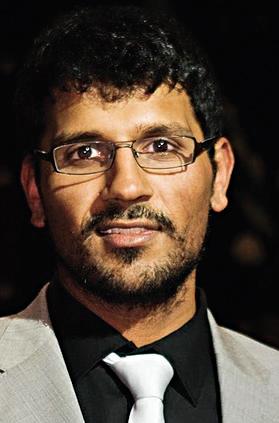
For more information on GOD events which include regular Bhagavatam Study Groups and Nam Kirtan Bhajans, visit www. godivinity.org.au or email contact@godivinity.org.au
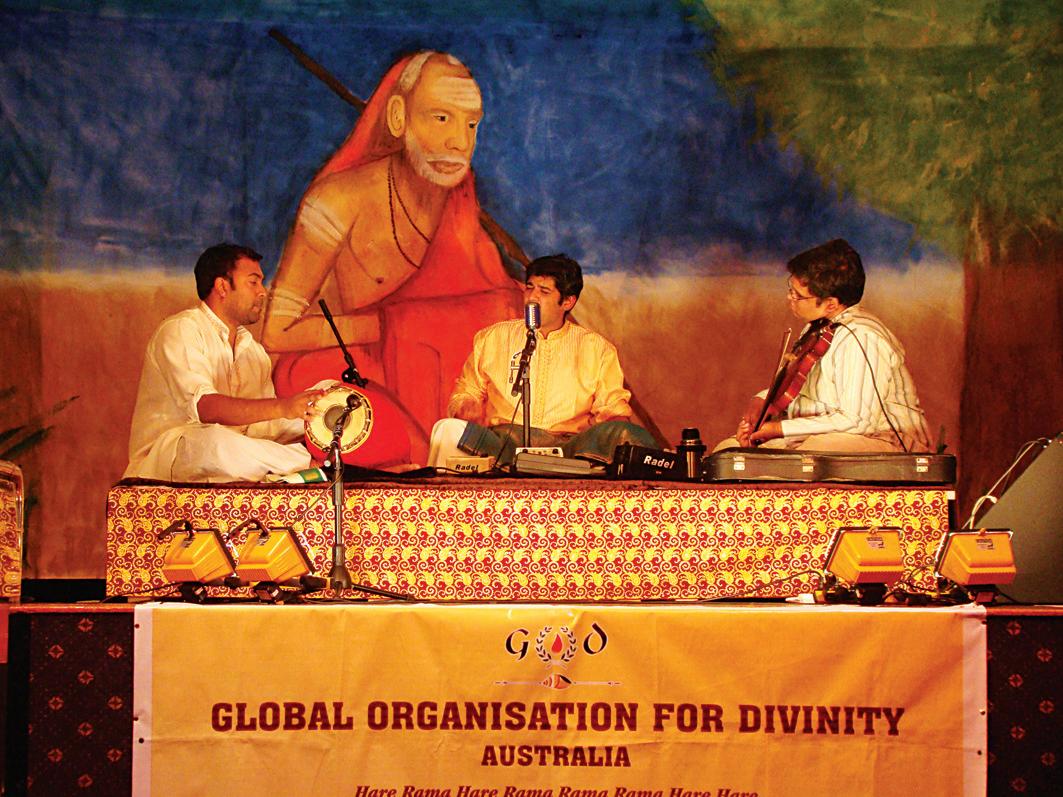
18 <> JUNE (1) 2011 INDIAN LINK
STAGE www.indianlink.com.au
Photos: Sujatha Natarajan, Chiranth Wodeyar

JUNE (1) 2011 <> 19 NATIONAL EDITION
The hope of Nepal’s tortured girls
Anuradha Koirala has helped rescue more than 14,000 girls from the clutches of sex slavery
BY VIDYA MUTHANNA
for Women and Children before she opened her own home to victims of sex trafficking in 1993. Her tireless work has brought her international acclaim in the form of many awards including the CNN Hero of the Year in 2010; the Global Peace Festival Award in 2010; the Queen Sofia Silver Medal; and the United Nations Women’s Organisation Prize.
At a public interaction on May 29 at Cabarita in Sydney, she spoke about the
highest mountains in the world, including the world-famous Mount Everest, but it also harbours a dark secret: girls as young as seven are trafficked and sold to brothels, after being kidnapped by somebody known to them, either a relative or a neighbour, often on the pretext of getting them a job in the city. Poverty is the main reason, but the real factor in sex trafficking is gender inequality, Anuradha said. “Girls continue to be considered inferior to their male siblings and many don’t go to school as education for sons is prioritised over daughters.”
She said: “Once these girls are taken away, it takes about three days to cross the border and reach Calcutta in India. To calm them they are often drugged, and by the time they wake up, they are already in a brothel. They are often starved for days when they do not agree to have sex with customers. They are raped and tortured if they continue to resist. These girls are forced to stay in the brothel until they repay their debt, which includes the price the brothel owner had to pay to buy them. When we rescue these children they don’t even know how to walk, as they lose the balance of walking.”
Anuradha also spoke of children who are trafficked out of Nepal into the Middle East to be used as camel jockeys in the popular sport of camel racing. Even babies and toddlers are subjected to cruellest means to help win these races, and the children end up either seriously or fatally injured.
She then showed the audience images of young women dying of AIDS; young girls living cramped attics; and girls with broken limbs caused by jumping from the windows of brothels in which they were imprisoned.
Many of the girls find themselves across the border in brothels in India, including Mumbai’s infamous Kamathipura area, the city’s red light district, where they are held in the infamous “Cages of Mumbai.” The most disturbing images were of the brothels themselves, which are not fit
for any human to live in. She also noted that almost all the girls in Kamathipura eventually contract AIDS.
Ms. Koirala was asked if the parents of the girls rescued took them back home. “When we bring the girl back we inform the parents and as all parents would, they come running and crying to take their children. But we don’t let the child go home till we find and prosecute the trafficker. This sometimes takes a few years. Then the case goes on in the court. After the case is over, then only do we let the child go home. During
The foundation has rescued over 14,000 Nepalese girls and young women, many of whom were sold across the border to brothels in India.

the child’s stay she is trained in different skills and we also give them micro-credit loans to resettle them. A parent never disowns their child because they never sold them, these children are kidnapped,” she explained.
“Trafficking is a shame to humanity and everybody talks about human rights, but what about the rights of these young girls? What would you do if your daughter was kidnapped one day? How would you fight?” she stressed.
“For evil to happen all it takes is for good people to look away,” the host of the evening Kamal Sharma said and added, “a thousand years of darkness can be driven away by one candle, and we see the candle in Anuradha”.
Let’s not ask what we can do to help Anuradha, but let’s ask how we can help. In this dark world of incredible suffering there is love, kindness, goodness, and hope, thanks to people like Anuradha.
To see the work done by Anuradha Koirala or make a donation visit www.maitinepal.org.
Before you lodge your application, be sure to check the track record of your migration agent. At AVMCS, we have been successfully helping people like you for over 18 years, involving thousands of successful applications. We know the rules and guide you professionally all the way. No wonder, AVMCS is the first choice of people who want the best value for their money and efforts. Remember, there is no substitute for experience.

20 <> JUNE (1) 2011 INDIAN LINK
Anuradha Koirala – often called Nepal’s Mother Teresa – is the founder of Maiti Nepal, a foundation that has rescued more than 14,000 Nepalese girls and young women from the clutches of sex
www.indianlink.com.au PEOPLE
IMMIGRATION. THERE’S NO SUBSTITUTE FOR EXPERIENCE. 95 Wigram Street, Harris Park, NSW 2150 Tel: 02 98939606 Fax: 02 98912872 email: info@avmcs.com.au web: www.avmcs.com.au Contact Sanjay Deshwal on 02 98939606 or 0412 462 344 RMA 96 83 692 AUSTRALIAN VISA & MIGRATION CONSULTANCY SERVICES
Position Vacant: Administrator
Working in an established company, you will be responsible for day to day administration duties of a small office. This is a full time position with future career progression for the right candidate. Hindi speaking is a definite advantage for the right candidate.
Salary dependant on experience.
COMPANY
We are a young, dynamic and innovative company. We are looking to expand our team within a busy small office environment.
OPPORTUNITY
We require a customer focused, self motivated and proactive individual to join our team as an administrator. Experience is vital, with at least 3 years local Australian administration experience a minimum requirement.
To be successful in this role you will be a great team player with a strong work ethic. You will also be prepared to take on additional tasks and will have great attention to detail. In return you will receive outstanding training and gain a wealth of experience with a friendly, successful team.
RESPONSIBILITIES
• In and out going phone calls
• Confirming contracts with customers
• Accounts – receivables, payables and invoicing
• Data entry
• Making and checking spreadsheets using Excel
EXPERIENCE
• Previous history in an administrative role and office environment is essential

• Proficient in Microsoft Office including Word, Excel and Email programs

• Knowledge in MYOB (ideal but not necessary)
Please email a cover letter telling us more about yourself and your salary expectation, along with your CV to cvsydney1@gmail.com. Only successful candidates will be contacted.
JUNE (1) 2011 <> 21 NATIONAL EDITION
Colouring their world
A riveting and thought-provoking short film by a debut director explores the paradoxes that exist across cultures, in a new film festival
BY PALLAVI SINHA

Vijay Boothalingam is one happy and excited filmmaker. His debut film The Traveller is one of the movies nominated for Best Film, currently screening at the annual Colourfest Film Festival (CFF) in Sydney, Brisbane and Melbourne. The CFF showcases short films created by culturally diverse film-makers from around Australia.
Written and directed by Vijay who now lives in Australia, The Traveller is the spiritual and emotional journey of an Indian couple who provide refuge to a stranger one night. Set in suburban Sydney, the short film has a superb screenplay and cast, with direction is

time. After 15 years in Australia, he finally got his first break.
“Last year I came across an opportunity by Metro Screen who were supporting film-makers to make short films, and submitted the script I had written. Of the 200 applicants, I was one of the 11 whose script was accepted and I had the chance to make my first short film,” he says.
considering going to India and working with a director there,” says an optimistic Vijay who is happy to have had the opportunity to showcase his talent.
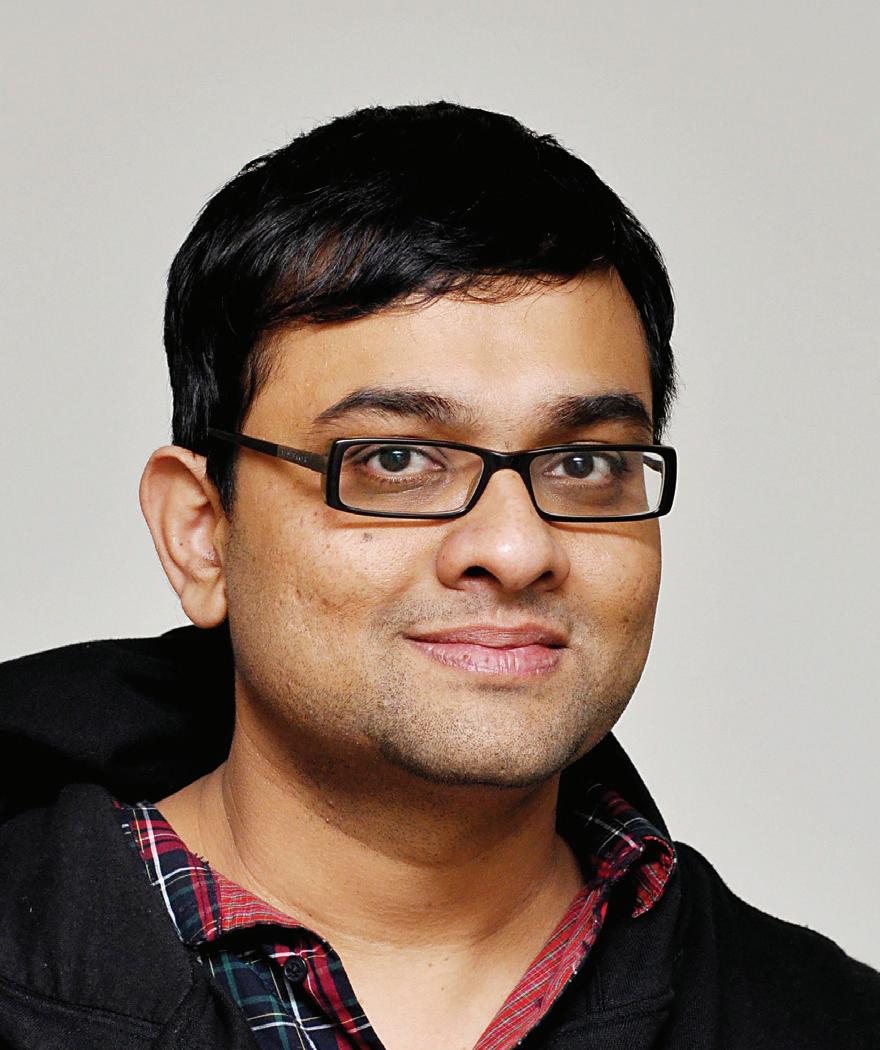
And has the exposure to the Colourfest Film Festival (CFF) helped?
reminiscent of the brilliance of M. Night Shyamalan. Apart from being deeply passionate about films and film-making since childhood, Vijay comes from a family of film-makers, which could well explain his talent at direction. “My late grandfather in India used to be a film producer, who introduced Hema Malini into films in the 1960s,” he reveals. Although Vijay was interested in film making when younger, he didn’t have the chance to do something about this yearning at that
The Traveller is Vijay’s debut film and its basic theme is about absolution. “I wanted to make a film which shows common ideas that we share as humans. I wanted to project themes like crime, tolerance, absolution and forgiveness which are common across cultures, and bind us together as humans,” says Vijay.
Metro Screen provided some funding, offered good mentorship and training. But it was the support from his family that helped push the project through to completion.
“CFF
“My wife produced the film, so she was instrumental in making sure we could cast people and get the right crew on board. The film was shot over 3 days and filmed in Sydney. My family and my wife’s family supported us all the way,” says Vijay.
So how did he manage with the tight schedule, especially as he juggled full time work and making the movie? The debut director has managed to balance work commitments with his creative pursuits, but admits that it hasn’t been easy.
“It was a challenge!” he says. “Film-making is not something you can pursue as a full-time career option, unless you make a hit film. Though the Australian film industry is fabulous and they create wonderful films, it’s not as massive as Bollywood or Hollywood. There also seems to be limited funding for films which have ethnic themes; however there are always opportunities for people who want to make films”.
The audience response to The Traveller has been so positive that it has encouraged Vijay to study Film & Media production at the University of Technology in Sydney.
“I’m working on a feature script at the moment and some more short film scripts. I am seriously
“Yes, certainly,” says Vijay enthusiastically. “The CFF is a very unique festival. It’s a dream come true, and I’m really proud that my film got selected to be showcased, because I don’t think there are many festivals that support culturally diverse film-makers. CFF is a growing festival and provides recognition that there are a lot of ethnically-themed films that people don’t get to see in some of the more popular film festivals like Tropfest,” he adds.
Despite Australia’s immense diversity with people here originating from over 230 countries and speaking over 300 languages, it is rare to see ethnic faces on TV or in films. The advent of the Colourfest Film Festival (CFF) in May 2010 was dedicated to the works of culturally diverse Australian film-makers. Now in its second year, the CFF reflects the reality of contemporary Australia represented through Indian, Chinese, Vietnamese, Samoan, Spanish, Iranian, Arabic and Greek stories; with the shared values, trials and tribulations faced by its ethnicities presented to the wider community. According to the founder and director of CFF, Sri-Lankan born Australian Gary Paramanathan: “I founded Colourfest out of disappointment at the lack of cultural diversity on Australian TV and film, and the discovery that there are many film-makers of diverse backgrounds producing works that are beautiful, relevant and needing to be seen. I wanted to set up an avenue to share these stories with the broader Australian community, so we can move to an open and accepting place for all communities to live and love Australia.”
For Vijay, this is just the beginning of a journey into the heart of film-making in Australia, and although the trip will be hard, there’s no doubt that it promises to be an immensely rewarding one.
22 <> JUNE (1) 2011 INDIAN LINK
“I wanted to project themes like crime, tolerance, absolution and forgiveness which are common across cultures, and bind us together as humans”
Vijay Boothalingam
is a growing festival and provides recognition that there are a lot of ethnicallythemed films that people don’t get to see in some of the more popular film festivals like Tropfest”
www.indianlink.com.au ARTS
Vijay Boothalingam
A scene from The Traveller, a film by debutant director Vijay Boothalingam
Vijay Boothalingam
“We always make our travel arrangements through Ram World Travel for its excellent service and best price!”

ONE STOP SHOP FOR:
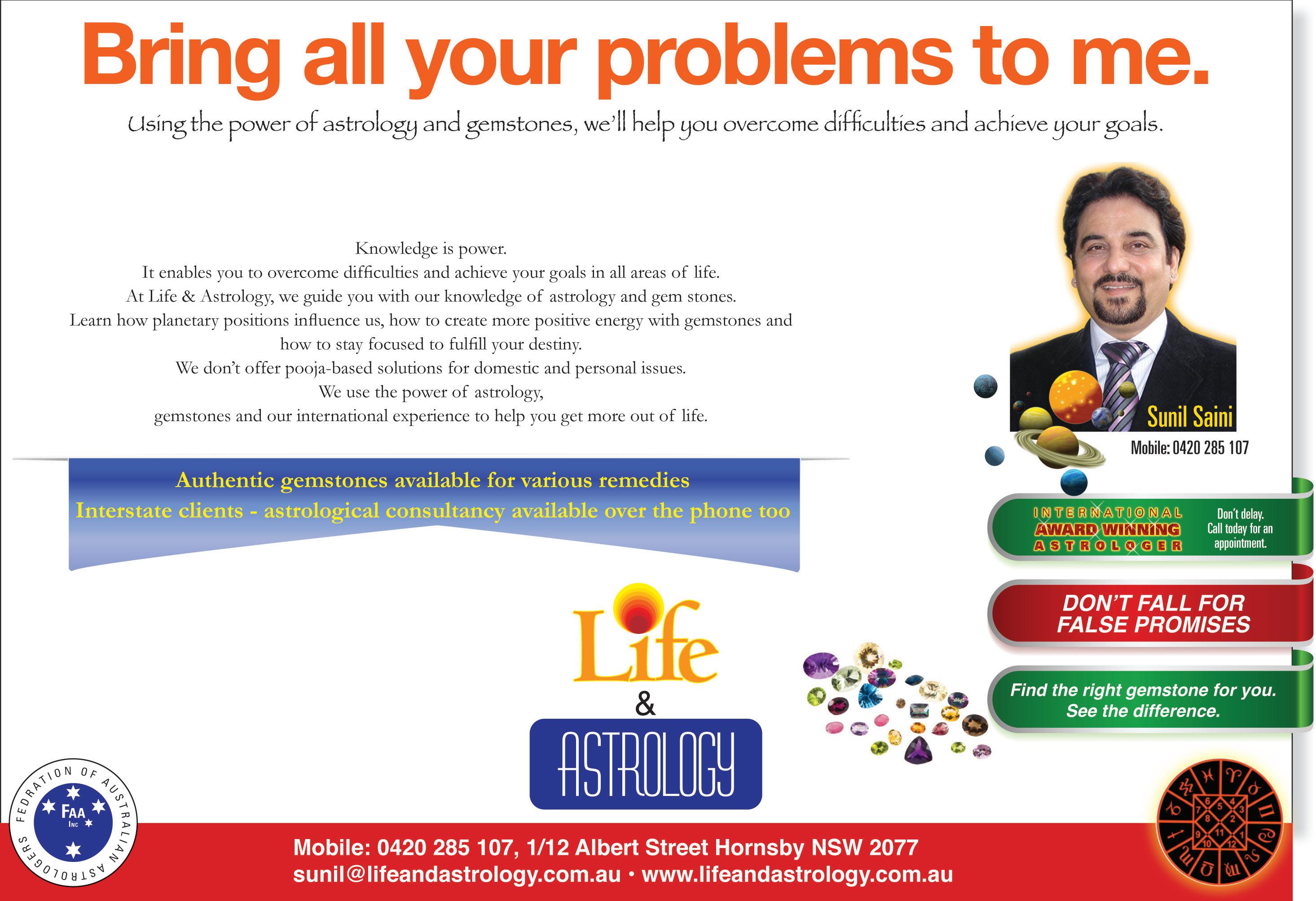




JUNE (1) 2011 <> 23 NATIONAL EDITION 5/32, York Street, Sydney, NSW 2000. Tel: (02) 9262 1661 Fax:(02) 9262 1217 Email: ram@ramworldtravel.com.au Web: www.ramworldtravel.com.au
Competitive international airfares to all parts of the world *Special airfares to Indian sub-continent *Package and tailor made tours to India and Nepal
packages to all parts of the world
the World Airfares
accommodation, car hire and guide services
Insurance
DAILY DEPARTURE
*
*Holiday
*Round
*Hotel
*Travel
*
TOURS OF INDIA FROM: $975 P.P (ask for color brochure)

24 <> JUNE (1) 2011 INDIAN LINK

JUNE (1) 2011 <> 25 NATIONAL EDITION
International student ambassadors help raise Brisbane’s profile as multicultural city
Brisbane has always been known as a Multicultural City. It is a city that welcomes everyone who has potential to grow and contribute to its multicultural society. Different languages can be heard walking along its streets and in short the whole world can be seen in Brisbane in terms of having people from different nationalities. Recently, a true and real picture of cultural diversity in Brisbane was seen at the Lord Mayor’s Multicultural Round TableMasquerade Ball. People from various nationalities showed their presence there, clad in their traditional dresses.
For the last five years, the Lord Mayor’s Multicultural Round Table has been hosting the event to raise funds for the projects of the Round Table. It has raised more than $100,000 so far to explore, facilitate and implement strategies to grow Brisbane’s Multicultural Business sector. This year, the Lord Mayor Councillor Graham Quirk, in conjunction with the members of Lord Mayor’s Multicultural Round Table invited multinational people to join them at an exclusive fundraising event. The event was held at the Victoria Park Golf Complex this year.
Brisbane International Student
Ambassadors from Brisbane Marketing did a great job in selling raffle tickets and masks throughout the night and played an important role in collecting money for the
charity. The Lord Mayor himself appreciated the work of all the ambassadors and happily posed for a group photo with them. These ambassadors helped in promotion of Brisbane among international students by sharing their experience through global networking websites by writing blogs and posting photographs etc.

Proceeds collected were contributed to the continuing development of multicultural projects in the city of Brisbane. Funds

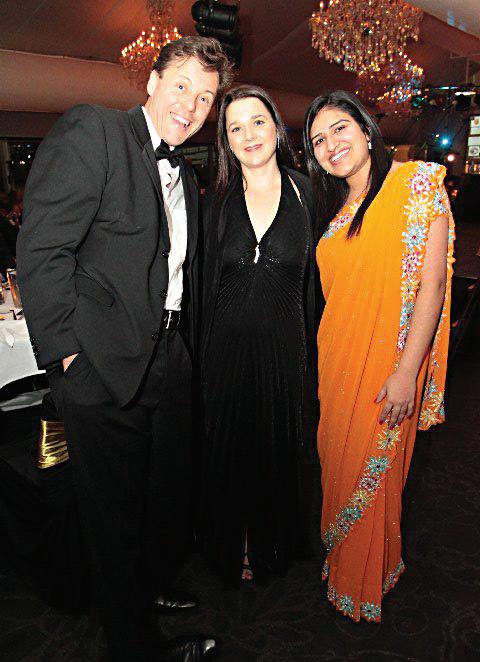
raised at the event are allocated to the Lord Mayor’s Multicultural Round Table Business Scholarship Program.
This program operates in partnership with Queensland University of Technology and Southbank Institute of Technology
In the past three years, new and emerging entrepreneurs have gained knowledge of and furthered their skills in business management.
The Lord Mayor admired the hard work
of people from different nationalities in Brisbane and thus awarded the Entrepreneur to the following winners: Mario Alfieri, Mario at the Dining Room (Italian), Elena Gosse, Australian Innovative Systems (Russian) and Wolfgang Kelke, King of Cakes (German).
Nanotechnology student
Nanotechnology, completing the course in
should be an inspiration to the youth within the Indian-Australian community. Currently doing his PhD with a full scholarship from the University of Western Sydney, Amninder was awarded the University medal for his dedication and commitment to his studies, and for his high grades. This felicitation is the most prestigious of its kind, and Amninder was one of 20 students awarded the medal, of a graduation class of approximately 4000 students. He has also been named in the Dean’s merit list for three consecutive years in 2007, ‘08 and ‘09.
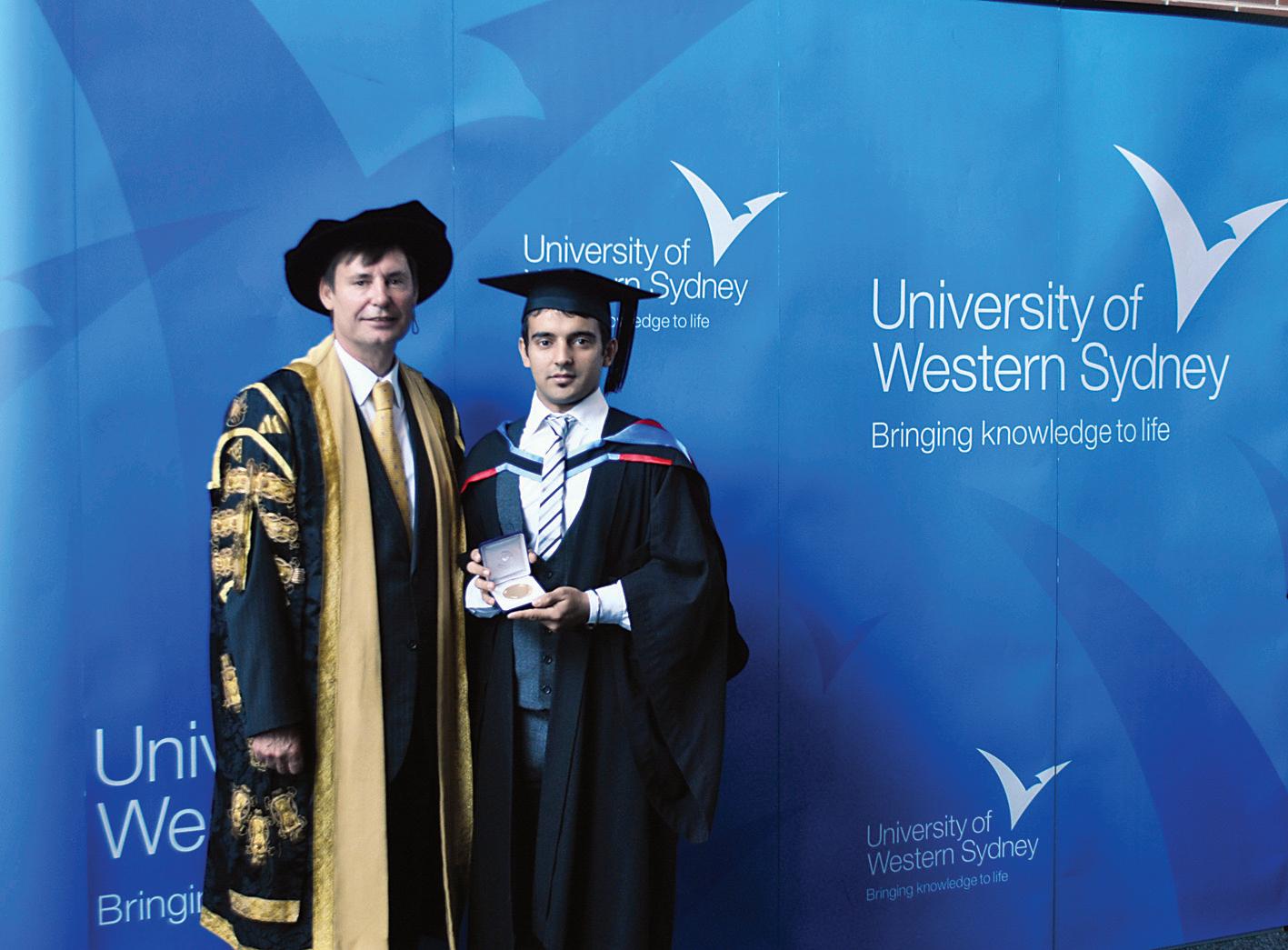
Amninder hails from Faizgarh village in Patiala, and he attended the Punjab Public School in Nabha, excelling dually in Mathematics and Biology. Amninder then
helping out the larger medical and science community,” says Amninder.
Fortunately for this young man, he hasn’t been subject to the problems students have faced in the past in Australia. Amninder claims that this is because Universities in Australia take good care of their students, ensuring proper inductions and helping students assimilate. It is mostly students from shonky colleges who get a bad deal, he says.
Amninder is keen to finish his PhD, and his next plans definitely involve India, where he feels the potential for growth is immense. “I am very happy in Australia and what I am doing right now, but a there’s no place quite like home,” he says.
Good luck to Amninder in his future ventures.
Sheryl Dixit
26 <> JUNE (1) 2011 INDIAN LINK
STUDENTS
Manpreet Kaur
Photos: Leong Ming En, Mohammed Badiul Islam
Astha la vista, baby!
A young lady proves that in the world of student politics, you need a sound progressive policy, an effective catchphrase and the desire to be the voice of your fellow students
BY DRISHTI NANWANI
Astha Rajvanshi, second year student at the University of Sydney, recently made her claim to fame, winning the University of Sydney Union (USU) elections and earning a place on the Union board. Astha talks to about her journey from being a regular Indian student trying to discover herself in a sea of students, to sitting on the USU board as a director.


It all began when Astha ran for the union office in an attempt to become more involved in student life. She started university in 2010, feeling a little unfamiliar and out of place.
“I think that anyone who feels as though they have something to say or offer to student life should definitely give getting involved a try,” says Astha.
“I’ve heard many students say that they don’t have time to run for elections because of their demanding degrees, but people
“(The union elections) taught me a lot about student politics and more about the university in general, but I also learned a lot about myself and my capabilities” Astha
just don’t know enough about the election system. It was an experience unlike any other, and I would definitely encourage other young university students to run for future elections,” she adds.
The USU is one of the largest in the state and Astha has always admired their work. By running for office, she could add her contribution to the student experience.
“I built strong bonds with my campaign members, and the process of the elections tested my strengths and weaknesses. It taught me a lot about student politics and more about university in general, but I also learned a lot about myself and my capabilities,” she reveals.
The university has a tradition for all candidates to use a catchy campaign slogan, so putting a spin on classic Arnold Schwarzenegger, Astha made her name more memorable with “Astha La Vista”, that proved to be quite a hit at campus.
The election process involved Astha nominating herself and writing a policy statement which had to be seconded by ten people. Next came the long and challenging process of campaigning, involving posters, T-shirts, talking to people and essentially creating a name and an image for herself on campus. Next was the candidate soapbox, a public interview where students could ask the candidates questions about the campaign.
“I had to fill a quota of approximately 700 votes in order to run. It took up a lot of time and it was a challenge to juggle the campaign and my studies at the same time, but it was an experience unlike any other,” she says.
Astha’s policies cover many areas of the student experience at the university, with a focus on humanitarian and social justice. Her vision involves the induction of a charity officer.
“The USU implemented a strategy to support an official charity yearly. However, there is currently no-one looking after this worthy initiative, nor is there enough level of student involvement,” she says. “By implementing a charity officer to handle this department, we can encourage more people to get involved.”
Some of Astha’s other policies include added support of students by implementing a student-run volunteer program for Faculty study sessions, which would enable students to rely more on each other and have guidance and support all year round, as opposed to frantically forming study groups in the weeks leading up to the exams.
Having attended Mala Mehta’s IABBV Hindi School in Thornleigh for four years, Astha gained a sense of consciousness of the opportunities available, seeing the bigger picture as well the chance to increase her networking abilities and garner cultural support.
“Coming from an Indian background definitely proved interesting when running for the union, as I was the only Asian
• 497 Wentworth Avenue – Opposite Toongabbie RAILWAY STATION
• High Traffic area – Ideal for Indian Restaurant; Take-away or Grocery Shop
• Parking for 10 cars
• LOW rent – ONLY $400 + GST per week
• Flexible Terms Please call on 0449903600
candidate running this year,” she reveals.
Astha mentions a sense of division between the Indian students at university. “There were the ones who wouldn’t vote for me simply because I was Indian; and there were those that only wanted to vote for me because of my Indian background,” laughs Astha. “It was a real challenge trying to tap into all the different groups and forming a connection with them,” she adds. However, this young lady managed to create more cultural awareness to the groups on campus.
“As a part of my responsibility as a board member, in future I would like to see the gaps between international and domestic students bridged. Through more multicultural events, talks and student roles facilitated on campus, the voice of the diverse range of international students will be better recognized for greater inclusion and understanding of their contributions towards a vibrant student life,” says Astha.
At the start of the next semester in endJuly, Astha will be inducted as one of eleven new board directors. Her responsibilities will include looking after student services on campus, as well as handling the various
Despite trying times, Astha seems to have handled the challenges that have come her way with grace and determination, and is likely to do great things in her new role
student-run clubs and societies. The union has membership cards known as ‘Access Cards’ which allow holders to receive discounts at almost all food and retail outlets at the university, including in surrounding areas of Broadway and Newtown districts.
Despite trying times, Astha seems to have handled the challenges that have come her way with grace and determination, and is likely to do great things in her new role. This seems a great way to get involved in student life and leave behind a standing legacy at university, serving the student board and being the voice of one’s fellowstudents.
JUNE (1) 2011 <> 27 NATIONAL EDITION
Astha Rajvanshi
www.indianlink.com.au Shop in TOONGABBIE for RENT
RESTAURANT FOR LEASE Restaurant for lease in Five Dock liquor licence
premise. Great Location, Parking available Crockery and kitchen Equipment provided. Rent : $1300-$1500/week Serious Caller only 0430210324
approved for
Campaign for Hindi gathers momentum
The Indian community has stepped up efforts for Hindi to be included in the list of national languages
BY GAURAV PANDEY

The newly formed Australian Hindi Committee (AHC) has strongly argued for Hindi’s inclusion in the list of languages by Australia Curriculum Assessment and Reporting Authority’s (ACARA) list of foreign languages for Australian national language curriculum development.
In a submission made on behalf of the Indian community to ACARA – the body responsible for developing a national curriculum from Kindergarten to Year 12 –AHC has sought to address the criteria for the inclusion of a language in the national curriculum, stressing that Hindi meets all the requirements to make the list as a “first stage” language.
In what many in the Indian community see as a glaring omission, Hindi or any other Indian language failed to make it to the list of national languages in ACARA’s initial draft released for consultation and feedback from the public. Tara Chand Sharma, the coordinator of Australian Hindi Committee said that the omission means that Hindi’s claim as a language of global significance and culture was not recognised by ACARA. “It’s our responsibility to look after our interests and we need to make a decision today to support Hindi.”
AHC, in a media release, said it “strongly demands” that Hindi be included in the list.
“The long-term cost of not including Hindi, in terms of missed economic opportunities and emergence of Australian identity in the community of Asian nations, would be too high. We as Australians of Indian origin strongly urge ACARA to include Hindi in National curriculum in the first stage without losing crucial time,” the release said.
AHC appealed to the Indian community to indicate Hindi as the language spoken in their homes in the coming census as official policy decisions rely heavily on census figures. This, the release adds, will help in ensuring the census figures are a true representation of reality.
In the past, owing to a bizarre misconception among many in the Indian community that marking Hindi as the language spoken at their homes would bring into question their ability to speak English, many have done Hindi a disservice that’s reflected as a comparatively lower number of Hindi speakers in Australian census data.
Highlighting the fact that officials often cited “lack of demand” as the reason why Hindi was not being taught in schools, AHC appealed to parents to insist that the language be taught at schools and encourage their children to take up Hindi in the HSC.
AHC’s submission highlighted the global importance of Hindi, stressing that it is the second largest spoken language in the world
and that learning the language was in the long term strategic and economic interests of Australia, as by 2026 India would be one of Australia’s largest trading partners.

AHC also stressed that language is synonymous with culture and that IndianAustralians should be proud of their Indian cultural heritage as much as their Australian identity. The need for wider acceptance of Hindi is also accentuated by the increasing migration from India and other Hindi speaking countries such as Nepal and Fiji.
In a media presentation, Mr. Sharma said that the current provision of teaching Hindi outside the school hours during weekends through Saturday Schools of Community Languages and the NSW Community Language Schools program is inadequate as it involves unnecessary cost for parents and extra travel time for students.
Under the current proposal released by ACARA, Hindi does not find mention in any of the three stages of language development. The first stage, which implies that the language is taught during the normal school hours, currently includes Chinese and Italian; the former cited as “a national priority” and the “language with greatest range of learners,” and the latter as “the language learnt by the largest number of students in the primary years.” The second stage includes French, German, Indonesian, Japanese, Korean and Spanish; while Arabic, Modern Greek and

28 <> JUNE (1) 2011 INDIAN LINK
www.indianlink.com.au COMMUNITYSCENE
is also currently under way to put pressure on the administration.
Tara Chand Sharma

JUNE (1) 2011 <> 29 NATIONAL EDITION





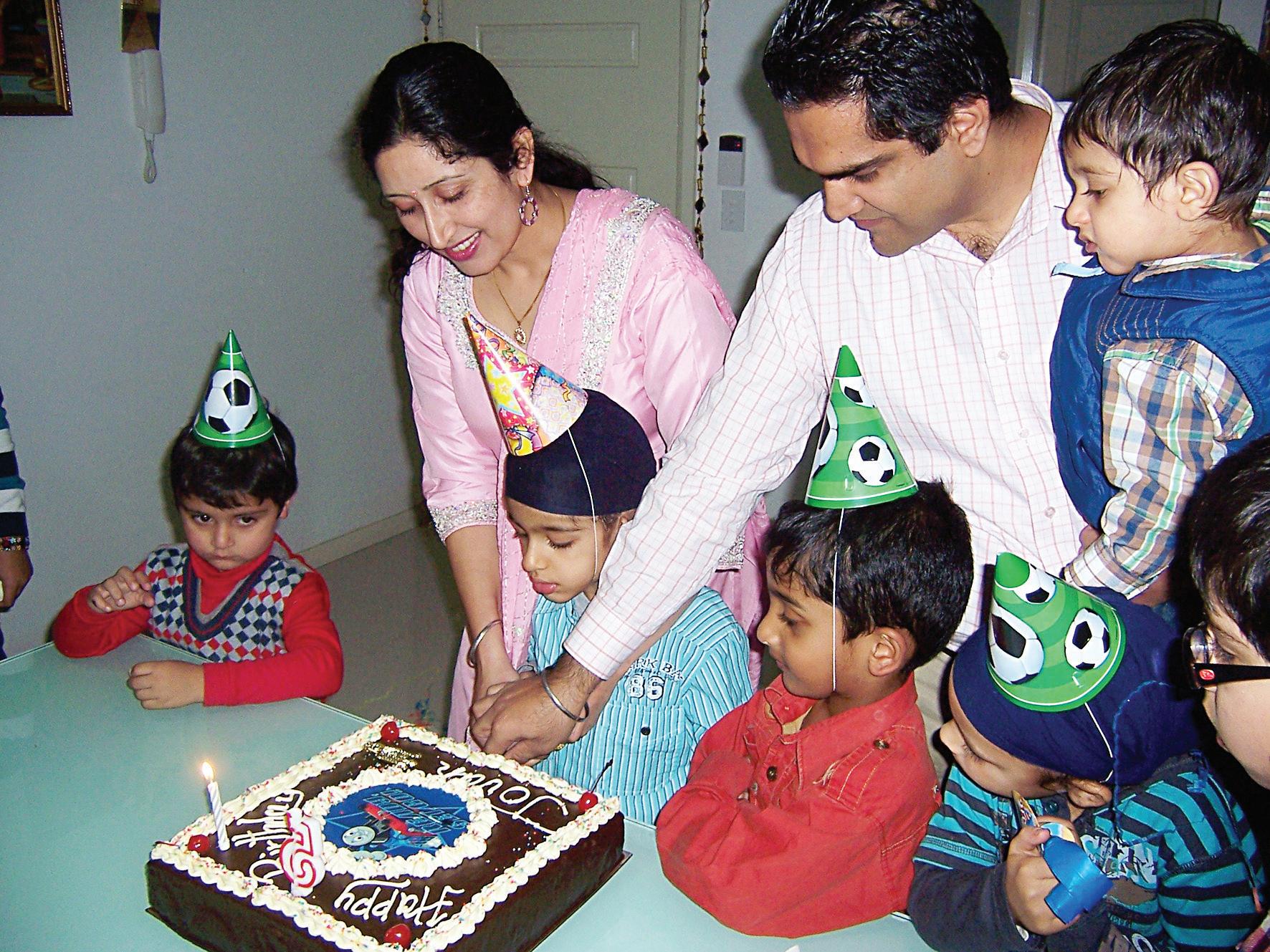


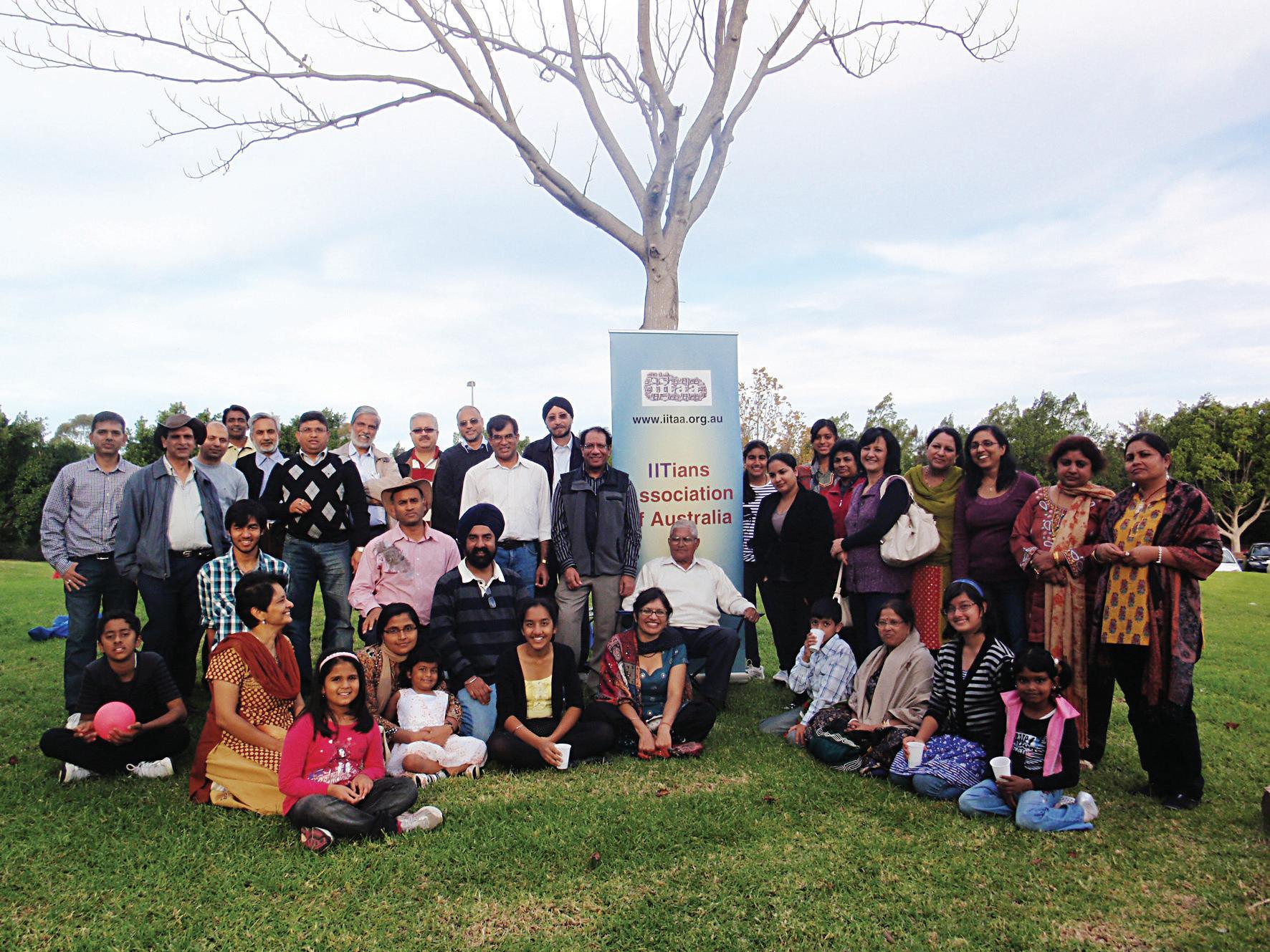

30 <> JUNE (1) 2011 INDIAN LINK www.indianlink.com.au THISMONTH People Places Parties Do you have a photo for this page? Email it to info@indianlink.com.au Jovan turns 5 A card from Nana and Nani: It’s Nikeeta Bhatia’s tenth birthday The IIT Alumni Association of Australia at its annual family picnic at Bicentennial Park, Sydney Olympic Park Sports Day at IABBV Hindi School Thornleigh, held in conjunction with NDTV’s Greenathon event and telecast on Indian television


JUNE (1) 2011 <> 31 NATIONAL EDITION











32 <> JUNE (1) 2011 INDIAN LINK
Indian American spreads sacred music’s peace message
From the ancient Moroccan city of Fez, an Indian American cultural and social entrepreneur is spreading the message of peace wafting from the Fes Festival of World Sacred Music.
The nine-day festival that began recently “has a peace making mission and was founded after the first Gulf War in 1994 when Faouzi Skali, the founder, felt that the world was polarising,” said India-born Zeyba Rahman.
Since then the festival has brought the finest multi-faith musicians and global audiences to Fez, a UNESCO designated World Heritage Site, according to the New York-based Asia and North America director of the festival.
This year’s festival, with the theme of Wisdoms of the World, has brought among others classical dhrupad singers Gundecha Brothers from India and Farid Ayyaz qawwals from Pakistan.
Considered one of the world’s most important festivals, the Fes Festival presents the highest calibre musicians representing their musical tradition from all over the world, said Rahman.
Senegal’s great vocalist Youssou N’Dour, Ben Harper from the US, Francoise Atlan the Algerian Jewish vocalist are among those showcased alongside many great, diverse, Moroccan sacred musicians all collaborating with the traditional Arab Andalusian Orchestra of Fez, led by Mohammed Briouel.
“My role is to bring the festival and its programmes to the attention of the world in a variety of ways to spread its message of peace, the importance of cooperation and tolerance so that peoples and cultures thrive together regardless of religion or race,” she said.
Named as one of seven heroes in the world for the Dialogue Amongst Civilizations by the United Nations, the festival has also been honoured with the Osseimi Prize for Tolerance, previously won by South African freedom leader Nelson Mandela.
All the concerts are held in stunning, historic settings inside the ancient walled city, Rahman said. Its current affairs Fes Forum, with the permanent theme of “Giving a Soul to Globalization” holds vigorous focused discussions on the most critical topical issues.
“Heads of state, grassroots activists, spiritual leaders, artists and intellectuals all come together here to explore solutions,” she said.
Sukanya Roy wins America’s coveted spelling bee crown

It was Roy’s third trip to the national spelling bee, and she had credited her past experience with keeping her calm and relaxed heading into the finals. She tied for 12th place in 2009 and 20th place in 2010.
Roy speaks Bengali and every summer travels to India to visit family. She hopes to pursue a career in international relations.
Roy is the ninth Indian-American in the last 13 years, a run that began when Nupur Lala captured the crown in 1999 and was later featured in the documentary Spellbound.
The winner will be awarded a $30,000 cash prize, a trophy, a $2,500 US savings bond, a complete reference library, a $5,000 scholarship and $2,600 in reference works and other prizes.
Anamika Veeramani had scored a hat-trick for Indian-Americans in taking the crown last year.
Roy was one of the six Indian AmericansSriram Hathwar, Arvind Mahankali, Prakash Mishra, Mashad Arora, and Dhivya Senthil Murugan - who made it to the last 13 in the finals.
The youngest finalist was 10-year-old Dhivya Murugan of Denver, who was born in India.
The spelling bee kids just keep getting better and better. Even words like chlorthalidone,” “dreikanter,” “renminbi” and “helichrysum” couldn’t sufficiently narrow down the field in the semifinals, which needed 95 minutes of overtime to whittle the competitors from 41 to 13.
The week began with 275 spellers. A written test and two oral rounds prior to the finals reduced the field for the semifinals.
According to the Scripps Spelling Bee’s website, this year brought contenders ranging in age from 8 to 15 years old from all over the world.
A remote French island reconnects with India
Tears flowed incessantly down dozens of cheeks as the Indian national anthem echoed for the first time in the history of Guadeloupe, a small island in the Caribbean Sea.
The occasion was as historic as the playing of the anthem itself. For the first time, an Indian minister had set foot on this island, which, despite its distance, has very historic and very vibrant links with India. Thus, it was hardly surprising that hundreds of Guadeloupeans turned out to greet Minister of Overseas Indian Affairs and Minister of Civil Aviation Vayalar Ravi when he arrived here on a two-day trip recently.
Guadeloupe is a small island of about 1,600 sq km in the West Caribbean Sea and is home to over 420,000 people. Of them, nearly 50,000 are of Indian origin, whose forefathers were brought to this distant land by the French nearly 158 years ago to work on the plantations. However, their links with India have been entirely cut.
Over the last century-and-a-half, the residents of Guadeloupe and its neighbouring Frenchruled island of Martinique, which is home to another 10,000 PIOs (people of Indian origin), have had absolutely no contact with India. French laws, at least till very recently, ensured that any cultural or social links that could have been handed down through the generations did not materialise, says Michel Narayaninsamy, a local businessman and president of the Global Organisation of People of Indian Origin (GOPIO) Guadeloupe.
GOPIO International, Ravi first inaugurated a memorial to the Indian immigration in Guadeloupe. The memorial is set on a farm where the first batch of plantation workers began work. Incidentally, this farm is now owned by a PIO family.
In his address at the inauguration of the memorial, Ravi praised the courage and tenacity of the PIOs of Guadeloupe, who, despite all odds, managed to maintain something of Indian culture and Indianness within themselves.
“I must congratulate all of you for the remarkable courage that you have shown in retaining your links with India, even after the passage of so much time and loss of all contact with India. Your community has also emerged from a very difficult period to a situation today where many of you are doing very well and have made us in India very proud of your achievements, which have come only through your hard work,” Ravi told the gathering.
He offered help and assistance of the Indian government, and notably his ministry, to ensure that the PIOs in Guadeloupe can regenerate their links with India and Indian culture.
“I would like to inform you that my ministry organises very focused programmes for the PIO youth all over the world where we take them to India for a complete discovery of India by travelling to various parts, meeting with various social, political and business leaders and this trip, I can say, firmly reconnects them to India. So I would urge GOPIO Guadeloupe to suggest names of such youth who can be part of this programme,” Ravi said.
Ravi also addressed a business meeting organised by the local chamber of commerce in collaboration with GOPIO Guadeloupe, where he invited the business community of the island to do more business with India, specifically in sectors such as food processing, agriculture, trading and infrastructure. He also expressed belief that Indian companies would also start investing in Guadeloupe once business ties were firmly established.
Ravi also honoured a notable PIO of the early 20th century, Henry Sidambarom, who devoted his life to fighting for the basic rights for the Indian community. Sidambarom’s father had come to Guadeloupe as a farm worker in the first few boats that landed here around 1854-57. Henry Sidambarom was born in Guadeloupe in 1863 and began his fight for the fundamental rights of the Indians in 1904. His battle was focused on the French granting French citizenship and hence voting rights and other fundamental rights for the Indian migrant workers, who had been treated as stateless persons till then in Guadeloupe.
Sidambarom’s grandchildren, who had come especially for the event, recounted his battle and how he had to face a court case for 19 years due to this. But finally, he won and the French administration was obliged to recognize the rights of the Indian community.
Ravi praised the courage of Sidambarom and asked his family and others to provide all the relevant information and photographs of his battle so that it can be included in the Museum on Indian Migration that his ministry is setting up. He also declared his support for the demand of the PIOs from Guadeloupe that a memorial in Sidambarom’s memory be erected at Karaikal in Puducherry, the native place of his family.
Indian origin artist goes to Venice Biennale
India-born London-based artist Nandita Chaudhuri has captured the horrors of the Japan tsunami and the psychological drift it has triggered among the millions of survivors on her canvas at the Venice Biennale 2011 recently. Chaudhuri is the only Indian to be directly selected by Venice biennale organisers as part of its international representation, though India is an official entrant at the event. She will be represented by Studio ArTe Carapostol.
Her artwork, “The Islands Have Shifted”, will be on display at the Scoletta of San Giovanni Battista as part of the biennale in the historic Italian town until November 27.
“When the islands shifted by a few inches during the Japan tragedy, I began to reflect on the fragility of the set coordinates. My new work, ‘The Islands Have Shifted’ have been inspired by the fragility of human and land mass when confronted by forces beyond control,” she said recently.
And just like the islands, which have been shifted by the once calm waters, so are human bastions; once gravitating and once repelling till the coordinates are finally set, Chaudhuri said of her work.
“In this series, I have used paint on canvas,” Chaudhuri said.
Chaudhuri is one of the biennale’s international group of artists from emerging nations whom the Venetian showcase promotes every year to lend voice to new talent from the developing world. She will exhibit with artists from 53 countries.
“I was invited to participate at the prebiennale show in Venice (held in May) at first and then through further shortlisting was invited to show in Venice during the biennale,” Chaudhuri said.
The artist, who brings British and Indian influences on her canvas to hammer a trans-national idiom, said “globalisation and technological revolution have brought in their wake rapid change, mixed influences and redefinitions”.
“I recently wrote a lengthy paper on the face of this evolution from the standpoint of localisation and the impact and how this was perceived or received by the West. Most certainly, there are points of intersection or cohesion and at other times noise,” she said.
There is always that endeavour to examine loss of national identity or purity against the backdrop of globalisation, she said.
“Indian contemporary art for its own sake is receiving substantial global attention largely due to market dynamics and for its equity,” she said.
The artist said, “Whether it was Indian contemporary art, Chinese, African or Brazilian art, there are always indigenous and historical references set alongside the present- day social and political climate and period”.
“References to our historical data creep back into works, traditional iconology, preference for warmer colours, and a certain metaphor,” Chaudhuri said.
Spelling tongue twister “cymotrichous”, Greek for having wavy hair, Indian American Sukanya Roy won the 2011 Scripps National Spelling Bee crown to retain the coveted honour for the community for the fourth year in a row.
Roy, 14, an eighth-grader at Abington Heights Middle School, Pennsylvania, said she knew as soon as she heard “cymotrichous” that she’d get the word right and win the championship.
“My heart started pounding, I guess,” she said. “I couldn’t believe it. It’s just amazing. It’s hard to put into words.”
“For starters, our ancestors, the plantation workers, were all made to adopt Christian names and were literally forced to convert to Christianity. They, of course, had no access to any Indian language training and soon they lost (knowledge of) all the Indian languages and today we can converse only in French,” Narayaninsamy said in Guadeloupe during Ravi’s historic visit.
During the visit, which was the outcome of persistent efforts by the PIOs of Guadeloupe for the last two years, assisted by GOPIO Guadeloupe and its parent organization,
“It will be a proud moment for India when we recognise our sons who have so bravely fought for the rights of their fellow citizens,” he told the meeting organised at the place where a statue in memory of Sidambarom has been built.
Ravi also promised the Indian community all assistance in learning Indian languages, dances and cuisine and also access to Indian television channels in order to revive their links with India. He also urged the PIOs of Guadeloupe to turn up in large numbers at the next edition of the Pravasi Bharatiya Divas, scheduled to be held in Jaipur in January 2012.
“There is often even some anxiety and noise. Discussions on integrity in art can only expand or touch on levels of mixed data. The technological revolution brings on its heel an onslaught of varied influences and a bombardment of information which has posed its own issues. A new language emerges, with a unique emerging hybrid made up of historical data and new data,” she said.
Chaudhuri holds an endorsement from the Royal Academy of Arts, London, which described her works as being trans-national with an exceptional confluence of British and Indian influences. One of her life-size installations, “Boogie Woo” at London’s biggest public art auction in history, “The Elephant Parade”, stood at Soho Square for three months.
India is an official entry at the Venice Biennale this year with an exhibition featuring four artists.
JUNE (1) 2011 <> 33 NATIONAL EDITION
IANS www.indianlink.com.au DIASPORA













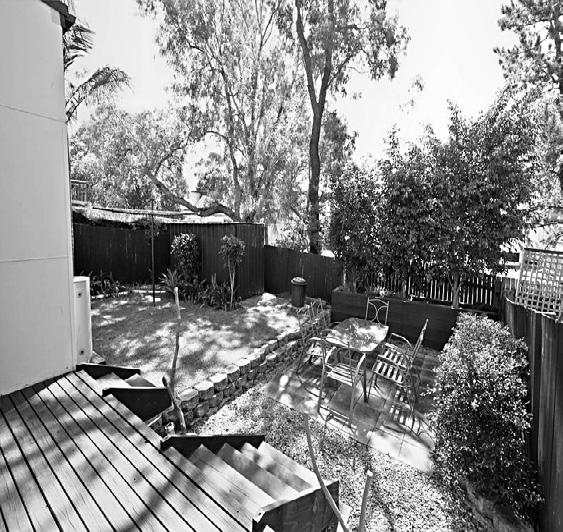







34 <> JUNE (1) 2011 INDIAN LINK
INCOME OPPORTUNITY BE YOUR OWN BOSS (FULL/PART TIME)




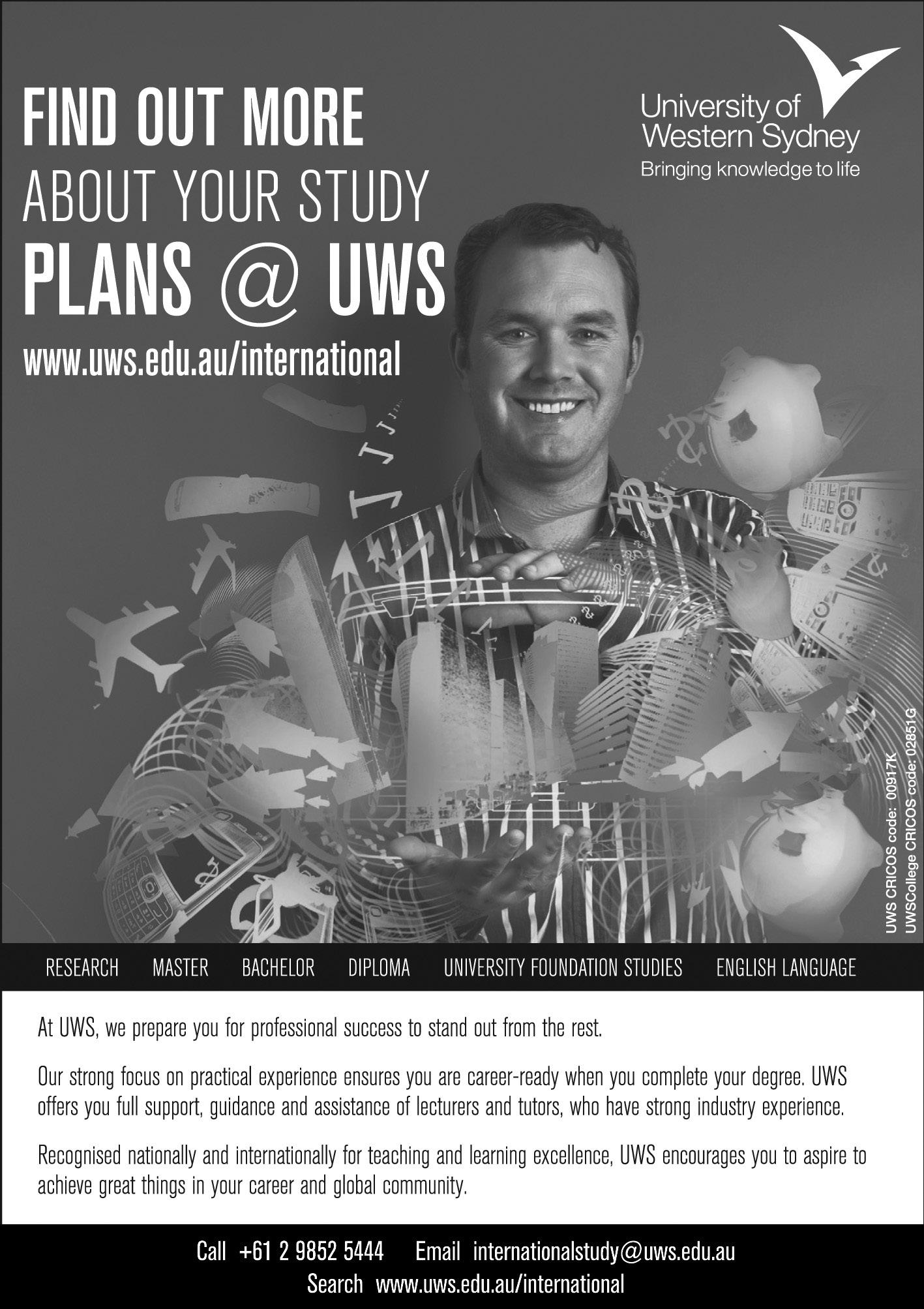
TO BE THE VERY FIRST PIONEER IN INDIA
A world class fast growing US company, International Industry Leader is going to launch Indian market in late 2011. We are looking for business associates with Indian background. Our professional team will help you to build up a very profitable business. If you are highly ambitious or have strong leadership qualities, you could be one of the key people we are looking to work with personally.

• This Company has achieved $5 BILLION sales in 6 years globally. No other network marketing company has achieved this level of explosive growth in history!
• One Simple Product – marketing a Revolutionary Healthy Drink – Scientifically Proven and created incredible health results for MILLIONS of consumers.
• Now close to 200 Million-Dollar Earners – with hundreds creating high sixfigure annual dollar incomes and thousands creating high additional extra income Part-Time.
• ONLY NOW launching around the world – INDIA is NEXT!

With less than $800 total start-up cost, you can potentially earn over $1,000 per week in first year. Income over $200,000 per year will be generated if you are willing to follow our success-proven system and work with us consistently for 3 years.
If you are open-minded, willing to commit, have strong desire to succeed and enjoy the result for the rest of your life, please contact us and discover how we can also help you create a serious additional income from this exciting, new financial opportunity today.
JUNE (1) 2011 <> 35 NATIONAL EDITION To arrange a meeting, contact:
Zan 0414 767 419 (English)
India clears deal with US for C-17s at $4.1 bn
India recently approved its biggest defence deal with the US for 10 Boeing C-17 strategic heavy-lift planes for $4.1 billion, in a major step to augment the capability of its air force to swiftly move troops and equipment over long distances. The cabinet committee on security, at a meeting in New Delhi chaired by Prime Minister Manmohan Singh, gave its nod for the deal to equip the Indian Air Force (IAF) with the aircraft.
“The cabinet committee on security approved the C-17 deal at an approximate cost of $4.1 billion,” a senior defence ministry official said.
The clearance comes over six months after US President Barack Obama visited India and announced that the deal was through and less than two months after Boeing and Lockheed Martin lost out in the $10.4 billion deal for 126 combat jets for the IAF.
The US Congress had approved the sale of the fully loaded aircraft for $5.8 billion under the Foreign Military Sales government-to-government route last June. However, since India is yet to ink a key military pact with the US, the aircraft might come without some critical communications equipment.
India is yet to sign the Communication Interoperability and Security Memorandum of Agreement (CISMoA), a pact mandated by the US law for the transfer of hi-tech military equipment to friendly countries.
The final contract is expected to be signed within a couple of months after India issues a letter of acceptance to the US government. The contract entails an offset clause under which Boeing will reinvest nearly $1 billion back in the Indian defence, internal security, aviation and related training sectors.
“The offset clause under the Indian Defence Procurement Procedure mandates ploughing back of 30 percent of deals over Rs 300 crore ($65 million). Though the final cost of the 10 C-17s will be over $4 billion, it will include training and other add-on equipment costs too and hence, the offset percentage will be calculated on the basis of the basic price of the 10 aircraft will be slightly over $3 billion,” said an official, familiar with the intricacies of the deal.
Obama, while addressing the media with Manmohan Singh in New Delhi last November, had said: “Today, I’m pleased to welcome India’s preliminary agreement to purchase 10 C-17 cargo planes, which will enhance Indian capabilities and support 22,000 jobs back in the US.”
The C-17 Globemaster III is capable of carrying a payload of 75 tonnes after taking off from a mere 7,000-feet airstrip. The four-engined aircraft can transport battle
tanks and combat-ready troops over 2,400 nautical miles without refuelling.
“The aircraft’s purchase is in tune with India’s aim to have swift power-projection capabilities in a region spanning from the Persian Gulf to the Strait of Malacca, seen as the country’s primary area of geostrategic interest,” a senior IAF officer said.
India is likely to opt for an additional six C-17s after the contract is signed for the first lot of 10 aircraft as the IAF is keen on increasing its heavy-lift capability, the officer added.
At present, the IAF has a dozen Sovietera IL-76 ‘Gajraj’ aircraft for heavy-lift roles and a medium-lift fleet of over 100 AN-32 aircraft, also of Soviet origin.
The US Air Force, to showcase the C-17s capabilities, had flown Obama’s security paraphernalia, including armour-plated cars and helicopters, on the aircraft. It had also brought the aircraft for India-US CopeIndia air exercise in 2009.
The biggest defence deal between India and US till date has been the $2.1 billion contract for eight P-8I Poseidon long-range maritime reconnaissance aircraft signed in January 2009.
The US had earlier bagged orders for six Lockheed Martin C-130J medium-lift aircraft for IAF for $950 million in 2008. The first of these aircraft was delivered in February. In January, India had placed a $647-million order with the US-based BAE for 145 M777 ultralight howitzers.
Boeing is also in contention for IAF’s requirement for 22 attack helicopters and another 15 heavylift helicopters. Both tenders are expected to be finalised by India this fiscal before March 31, 2012.
India receives combat management systems for Scorpene submarines
French shipbuilder DCNS has delivered two highly sophisticated combat management systems for the first two Scorpene submarines being built in India. The system forms the “brain” of the vessel.
DCNS India Managing Director Bernard Buisson told India Strategic defence journal that both the systems had been delivered to Mazagaon Docks Ltd. (MDL), which was
in the process of integrating the first one at present. There are about 20 to 25 French engineers assisting in technology transfer and work at MDL was maturing to mutual satisfaction.
The first Scorpene submarine, under the Indian Navy’s Project 75, will be launched end-2013 and commissioned in 2015. The second one would be a year later.
Buisson said that MDL was actually doing some work, at different levels, regarding all the six submarines under the project and that all the six submarines would be delivered by 2018.
MDL had built the hulls of first and second submarines, and begun work on the hulls of third and fourth submarines. Simultaneously, other systems were being tested and installed on them progressively.
Buisson said that DCNS has had technical discussions with the Indian Navy on installing air independent propulsion (AIP) systems on board the last two submarines. There would be a cost, but the AIP would increase the submergence of the vessels by three to four times, thereby making them hidden and more lethal.
The company was awaiting the navy’s response, as well as an order for the new line of six or more submarines under Project 75-I, all of which would be equipped with the AIP systems. DCNS had already responded to the Indian Navy’s request for information (RfI) in this regard.
Buisson said that DCNS’ AIP system was based on the MESMA steam AIP used on board all the French nuclear submarines. France as only nuclear-powered submarines and accordingly, proven for technology, he added.
Asked about local participation in the Scorpene project, Buisson said that DCNS was also talking to private shipyards as per the new Defence Procurement Procedure (DPP) and offset requirements.
“We are also in the process of finalising the selection of our industrial partners for indigenization of MPM (Mazagon Purchased Materials from other companies) items,” he said.
MPM items include pumps, valves, air conditioning equipment and various subsystems.
Pakistan war-gaming to counter India’s military plan

With the Indian Army perfecting a short but power-filled warfare doctrine intended against its western neighbour, Pakistan too is war-gaming a counter-strategy in an exercise that has been on for a fortnight, a few kilometres from its borders with India’s Rajasthan state.
The Pakistan Army’s Karachi-based V Corps launched the exercise a fortnight ago in the desert terrain between its Sindh and Punjab provinces that abut the Thar Desert around Sadiqabad, senior Indian intelligence sources said.
The war game, described by the Pakistan Army as a collective summer training exercise, will be completed soon and is primarily focussed on testing its man and machinery in both defensive and offensive warfare manoeuvres, the sources said.
The corps’ infantry, mechanised infantry and armoured units, along with other battle assets such as their artillery units, were pushed to the limits in searing heat in the Thar Desert during the field exercise.
The corps commander, Lt Gen Mohammed Zahir-ul-Islam, too witnessed the manoeuvres of his troops last week, sources added.
The Pakistan Army has conducted a couple of major exercises in the last four years to train its troops to counter an Indian strategy, loosely termed as ‘Cold Start’ doctrine by Indian military think tanks and the media.
Though the Indian Army chief Gen. V.K. Singh has stated that there was no such strategy called ‘Cold Start’, Indian armed forces have over the last seven years since 2004 held over 10 major military exercises in the Rajasthan desert and the Punjab plains.
Based on its experience during the 200102 Op Parakram when troops mobilised over months, the Indian Army war games have focussed on validating the army’s latest doctrine of mobilising troops in shortest possible time and for launching an offensive using its mechanised forces and artillery of its strike corps and division-sized formations within its defensive pivot corps.
The Pakistan Army’s V Corps has among
36 <> JUNE (1) 2011 INDIAN LINK
Activists of Jammu and Kashmir People Democratic Party protest against Indian government’s action against yoga guru Baba Ramdev.
HomeBush Office Call: 0418 965 834 Starts from $120 +off Parramtta Rd +next to Strathfield +include all expense
Photo: AAP
its formations a mechanised division with battle tanks and armoured personnel carriers, two infantry divisions, and an independent artillery brigade.
Raised in 1975, the corps, known as the Victory Corps, would be Pakistan’s first line of defence, as it is spread over the Sindh and southern Punjab provinces, along its eastern borders.
This corps had been mobilised by then Pakistan president and army chief Gen. Ziaul-Haq in 1986-87, when India carried out a major war exercise, Operations Brasstacks, in the Rajasthan desert under then army chief General K Sundarji, viewing the Indian war gaming as a major threat.
It also had a role to place in the coup by then Pakistan army chief Gen. Pervez Musharraf in 1999, soon after the IndiaPakistan Kargil conflict, to oust then prime minister Nawaz Sharif.
Government nod to centralised database to tackle terror
The Indian government recently gave a green signal to the setting up of the controversial National Intelligence Grid (Natgrid) that will help law enforcement and intelligence agencies to get quick access to information about terror suspects and internal security threats.
The home ministry’s ambitious intelligence database project got “in principle approval” at the Cabinet Committee on Security (CCS) that met in New Delhi with Prime Minister Manmohan Singh in chair, according to an official statement.
“On the direction of the CCS, a detailed briefing and presentation about the Natgrid project along with safeguards and oversight mechanisms was given by (the home ministry) to the members of the CCS,” the statement said.
The home ministry has been asked “to proceed accordingly”.
The Natgid will integrate 21 databasessuch as railways, airlines, stock exchanges, income tax, bank account details, credit card transactions, visa and immigration records, telecom service providers and chemical vendors.
These databases will be linked and pooled at one centre to enable security and intelligence agencies get any information at the press of a button. The proposal is reportedly the brainchild of Home Minister P. Chidambaram.
All this data is currently gathered separately by different ministries and agencies. So far, security and intelligence agencies have been complaining that the lack of real-time information sharing was a major hurdle in following terror suspects.
According to home ministry officials, the information grid will help the government agencies “combat terror threats” as it is expected generate “actionable” intelligence inputs.
It will have a command centre which will also be used as “anti-terror hotline”, they said.
The access to the centralised data will be given to 11 agencies including the National Investigation Agency (NIA), Intelligence Bureau, Research and Analysis Wing, Defence Intelligence Agency, Directorate of Air Intelligence, Directorate of Naval Intelligence, Directorate of Revenue Intelligence and Enforcement Directorate, the official said.
A home ministry official explaining the significance of the system said if a terrorist is arrested from somewhere and police want some information about him from some other state or agency, “they have to go through a winding process of reaching out to different officials to access the information and this sometimes takes
months. But now this process will be simplified.”
“The grid will also enable the law enforcement agencies to coordinate their strategy in following any case.”
With a whopping budget of Rs.2,800 crore, the Natgrid is headed by Raghu Raman, an ex-serviceman who previously headed the Mahindra Special Service Group, a leading player in risk and governance consulting.
The Natgrid was first proposed by Chidambaram after the 2008 Mumbai terror attack for Lashkar-e-Taiba operative David Headley had filmed targets in Mumbai during his unsuspecting India visits prior to the strike.
The officials believe that had the Natgrid been there, Headley wouldn’t have had a free run in India for his terror trips.
The Natgrid project was hanging fire since December 2010 because of objections of the defence and finance ministries. The ministries had objected, saying the home ministry with the centralised database will have uninterrupted access to all information.
Maharashtra’s ‘Mother of Orphans’ wins Woman of The Year Award
Born as an unwanted child and bred in poverty and obscurity, eminent social worker Sindhutai Sapkal, who is known as the ‘Mother of Orphans’ in Maharashtra, has been conferred the Woman Of The Year Award by the Ladies Wing of the Indian Merchants Chamber. The award was presented to Sapkal at a glittering function in Mumbai recently, by President of Innovation Society and Industrialist Pratima Kirloskar, who was the chief guest at the ceremony.
Born in a poor family, Sapkal was nicknamed ‘Chindi’ or a rag, and could attend school only till fourth standard. She was married off at the age of nine and abandoned by her husband at 20 - she left her home with an infant daughter in her arms.
Sapkal eked out a living begging on the streets and trains where she met thousands of orphans and abandoned women like her.
She started her social work by adopting the orphans and has adopted over 1,000 children till date and nurtured them through donations and charities.
She has set up around a dozen orphanages throughout the state. Later,

without bitterness.
In her early days, she donated her own daughter to an orphanage to remove the distinction between her biological child and orphans.
Her life was immortalised in an awardwinning biographical Marathi movie “Mee Sindhutai Sapkal” in 2010, made by Anant Mahadevan.
Responding to the felicitations, Sapkal said that people must bravely face all the hurdles that come in their way in life.
“Life is its own reward. There is a God in every grain of sand who takes care of you - live on with love and face the world with a smile,” Sapkal said amidst thunderous applause by the gathering of eminent business personalities, social leaders, diplomats and other invitees.
held in the large mehfil-khana. Presided over by the sajjada-nashin of the dargah, they see qawwalis being sung in praise of the saint and the hall is packed to capacity. There are separate places reserved for women who attend the mehfil, which terminates late in the night with a mass prayer for the eternal peace of the khwaja in particular and mankind in general.
The shrine is a pillar of the philosophy of religious tolerance and cultural and social synthesis that has been the essence of India for centuries. The flowers laid on his grave come from the Hindu flower dealers of Pushkar while most of the chadars to be placed at the shrine too are made by nonMuslim artisans.
Crowds
throng Ajmer
for Sufi saint’s Urs Courted by emperors and commoners alike to have their wishes granted, Sufi saint Khwaja Moinuddin Chishti still draws pilgrims centuries after his death, with people of all faiths in Ajmer for his 799th Urs, or death ceremony.
The saint’s tomb is the site of one of India’s largest fairs, drawing more than five lakh devotees belonging to different communities from all parts of the subcontinent for the Urs during the first six days of Rajab, the seventh month of the Islamic calendar.
Followers of the saint, also known as Khwaja Gharib Nawaz (benefactor of the poor), have reached Ajmer, set amidst the sylvan surroundings of Anna Sagar Lake adjacent to Pushkar temple. The saint lived from 1141-1230 AD.
The celebrations kickstarted with the hoisting of a white flag. The ritual is swiftly followed by opening the jannati darwaza or gates of heaven. According to popular belief, one can ensure a place in heaven by crossing the gate seven times.
The saint’s resting place is sanctified by rose water and sandalwood paste and perfume is sprinkled on it. This is followed by shrouding the tomb with an exquisitely embroidered silken cloth. Fatiha (funeral prayers) and salamti (prayers) are read at the tomb.
Much awaited by connoisseurs of literature are the poetry sessions, where compositions dedicated to the Moinuddin
Credited with introducing the Chishti Sufi order in South Asia, Khwaja Moinuddin Chishti, according to legend, turned towards India after a dream in which Prophet Muhammad blessed him to do so. After a brief stay at Lahore, he reached Ajmer and settled down here. Soon he attracted a substantial following amongst the residents of the city, with his practice of Sulh-e-Kul (peace to all) concept to promote understanding between Muslims and nonMuslims.
For many years his abode was a place of pilgrimage for millions of people of all castes and creeds and crowds, both Hindu and Muslim, thronged to find spiritual solace.
It was during the reign of Emperor Akbar (1556-1605) that Ajmer emerged as one of the most important centres of pilgrimage in India. The Mughal emperor undertook an unceremonial journey on foot to Ajmer to wish for a son to be his successor.
The Akbarnamah chronicle records that the emperor’s interest was first sparked when he heard some minstrels singing songs about the virtues of the wali (god’s saint) who lay “asleep” in Ajmer.
According to the saint, religion is not merely based on rituals and ecclesiastical formalities but “service of humanity”.
Once asked about the highest devotion to god, the saint remarked that it was nothing but: Dar mandgaan ra fariyad raseedan wa haajatbichaargaan ra rawa kardan wa gursingaan ra sair gardaneedan (To redress the misery of those in distress, to fulfil the needs of the helpless and to feed the hungry).
JUNE (1) 2011 <> 37 NATIONAL EDITION
IANS
Australian cricketer Brett Lee with slum children in Mumbai. Lee recently launched his foundation, ‘Mewsic,’ with an objective of healing, educating and empowering marginalised children in India.
Photo: Innovaid
There’s no stopping
Despite viewer
and
of
contests,
BY RITAM MITRA
Dhoni hit a decade-defining 6 to win India its first World Cup in 28 years, and it seemed that within minutes of that brutal stroke, he was leading the Chennai Super Kings in their opener against the Kolkata Knight Riders in season 4 of the IPL, resulting in a victory that set them off on an unbeaten run at home and the eventual defence of their title. Although it carried with it all the glitz and glamour of previous seasons, as well as two new franchises in Kochi Tuskers Kerala and the Pune Warriors, IPL 2011 began less than a week after the culmination of one of the most riveting World Cups in recent memory, and thus seemed destined for mediocrity from the outset. With 74 matches to be played in just under 2 months, there was always the risk of oversaturation, and declining crowds and television audiences seemed to reflect this lack of interest amongst the masses. But, putting aside the negatives, stripping this year’s IPL down to its barest minimum reveals some fantastic cricket – which is in itself a success.
The Tons
Paul Valthaty’s scintillating 120* off just 63 balls set the tournament alight, not least because it came from an unheralded Indian in a tough chase against the eventual champions, Chennai. Few would have given Punjab a chance of chasing down 189 against King Dhoni and his merrymen, but Valthaty exploded with 19 boundaries – five more than were hit in any other innings this season – and hung around to finish the job, too.

were no doubt keeping a close eye on things from the Caribbean after leaving him out of their squads.
Virender Sehwag has never quite taken the IPL, or the T20 format for that matter, by storm. But he whipped up a storm of his own against the Deccan Chargers, blasting 119 off 56 balls to lead his team to victory and finally notch up his first T20 ton.
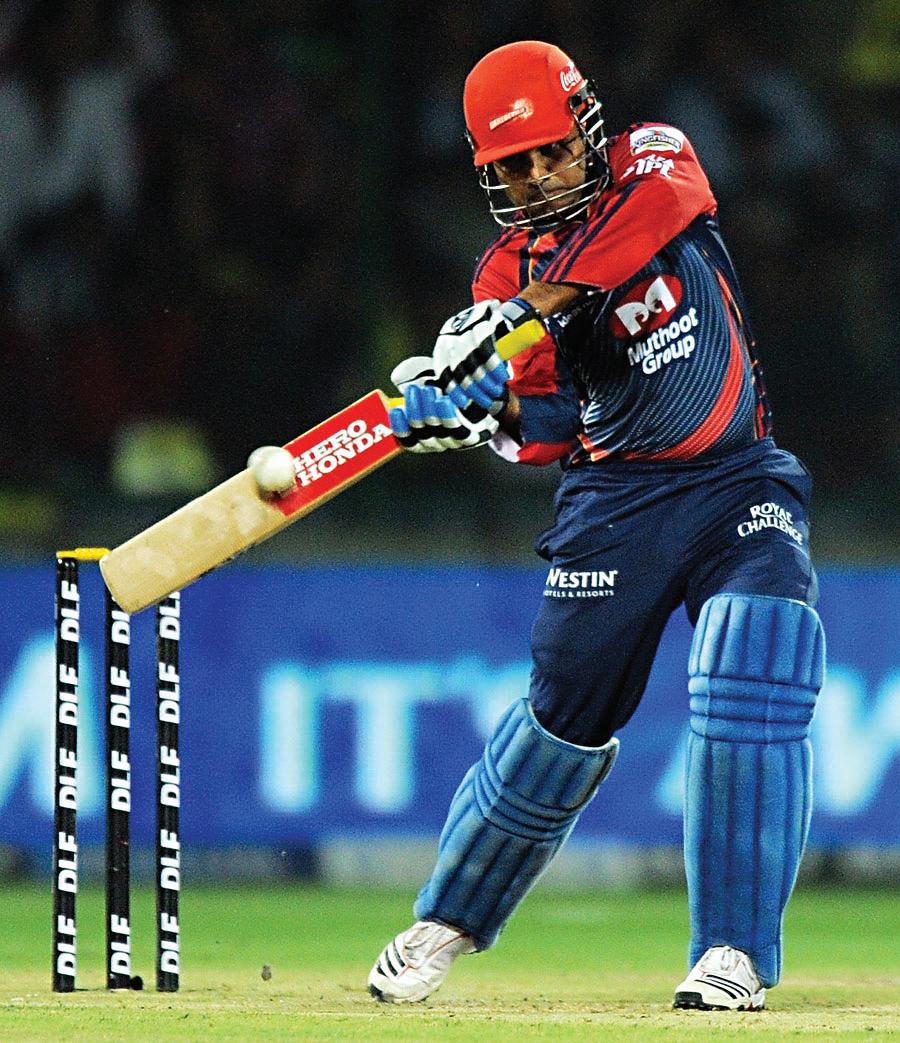

Adam Gilchrist is the eldest IPL centurion at 39 years of age, and he wound back the clocks with 9 sixes in 106 runs of sheer, obnoxious talent. His 206-run partnership with Shaun Marsh is a record for all T20 matches. The scary statistic: Gilchrist faced only 8 balls for 2 runs in the first 6 overs…

Sachin Tendulkar’s to-do list must be the smallest in international cricket, but even so he finds ways to better himself. Scoring a suitably rounded 100* against Kochi, Tendulkar brought up the landmark off the last ball of the first innings. Characteristically, Tendulkar’s ton was also the only one not to result in victory for his team. Some things never change.
The Players
Lasith Malinga continued his stellar run of form from the World Cup, taking more wickets than anyone else, at a better average, and with an economy rate second only to young legspinner Rahul Sharma. The Sri Lankan slinger was on the money from just his second ball of the tournament, sending David Warner’s bails off for a long-distance flight with a searing yorker. Malinga’s 28 wickets were paramount to Mumbai’s progression to the playoffs.

With 74 matches to be played in just under 2 months, there was always
risk of oversaturation,
Chris Gayle’s twin centuries – a somewhat traitorous 102* against his previous teammates at Kolkata followed by a typically murderous 107 against Punjab at a strike rate of almost 220 – were within two weeks of each other and each, unsurprisingly, resulted in an easy win for Bangalore. In the course of these two knocks, Gayle hit 16 sixes and 20 fours; the West Indian selectors
declining crowds and television audiences seemed to reflect this.
Chris Gayle won the orange cap, as the tournament’s highest run scorer, even though he played far fewer matches than the others who were in contention. On top of this, Gayle hit two centuries and three fifties on the way to 608 runs at an average of 67.55 and a phenomenal strike rate of 183.13 – outdoing even Sehwag. Add to this his handy off-spin earning his side 8 wickets at 6.77 runs an over, and Gayle takes the cake as IPL 4’s best player, even though he wasn’t originally expected to play this year.
Iqbal Abdulla was one of the main reasons Kolkata made the playoffs for the first time ever, with 16 wickets at an economy rate of just above 6. The

fatigue
lack
close
the recently memorable performances. Here’s a look at some of the highlights
the
and
stopping the IPL juggernaut!
concluded IPL season did see some highlights of the tournament.
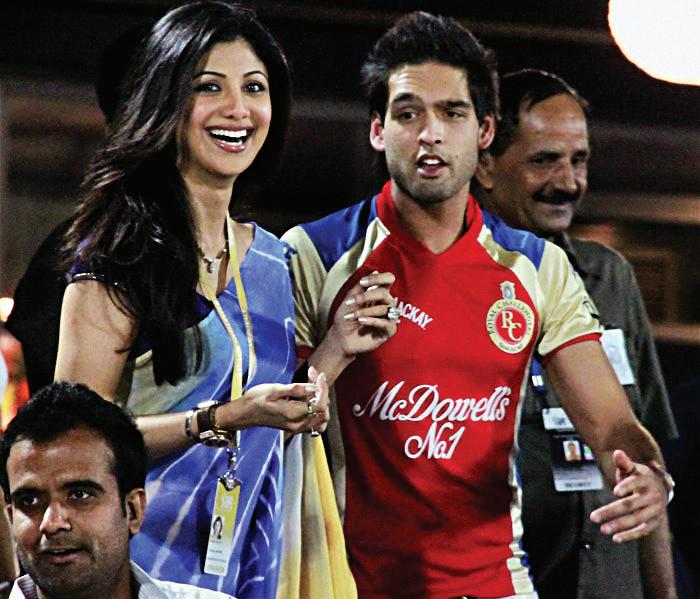


young left-arm spinner took the new ball four times this tournament – a clear measure of his courage and confidence. He was announced as the IPL’s under-23 player of the tournament, and won two man-of-thematch awards – both when opening the bowling.
The Teams
Chennai have been the most consistent team throughout all the IPL seasons, and within IPL 4 they were head and shoulders above the rest. Retaining several players and buying many back, Chennai kept the core of what was a proven winning unit, and indeed, as they showed in the Champions League last year, the best T20 team in the world. Unbeaten at home, and with homegrown local talents in Badrinath, Vijay and Ashwin that no other IPL side can boast, Chennai exude confidence from every aspect of their set up. Add to that the most influential and commanding leader of this generation, and MS Dhoni’s boys emerged as deserved victors. Dhoni also hit more sixes than anyone else whose name wasn’t Chris Gayle. Bangalore were coming off a threegame losing streak in the middle stages of the tournament and did not look like a strong unit at all until a marauding Chris Gayle made the tournament his own, taking the Royal Challengers onto a record 7-match winning streak.

Although Virat Kohli was impressive, de Villiers and Dilshan underperformed, and Saurabh Tiwary was a shadow of his 2010 self – Bangalore was thus considered by many to be a one-man army. However, one man does not make a cricket team and Bangalore pulled
IPL 4 may have been the least successful on television and at ticket offices, but the world’s best cricketers coming together for a 6-week exhibition of talent and prowess is always attraction enough to keep fans tuned in
together well to be runners up to a superior Chennai. Mumbai had the two leading wicket takers in the tournament in Malinga and Munaf Patel, along with the ever-miserly Harbhajan Singh. However, even though they have looked like a strong side for a couple of years now, their batting never seems to find its feet. Tendulkar was in a class of his own as usual, and as the third-highest run scorer in the tournament he backed up his orange-cap winning performance of 2010. Rayudu, the next-highest run scorer for Mumbai, was unfortunately 10 places below his captain. Mumbai continue to underperform, although by less critical standards, reaching the semifinalsis not the worst situation to be in.


Kolkata finally made the playoffs, having been the only one of the original
8 teams to have never been in the top 4 at the end of the group matches. They looked like genuine contenders for the title, and will be unhappy at falling early in the knockout stages. After doing away with Ganguly, the pressure was on to perform, but the Knight Riders were led fantastically by Gambhir, who was supported by a selection of smart and stweady performers, not least of whom were Jacques Kallis, Brett Lee and Shakib Al Hasan. Kolkata were probably good enough to go all the way, but a shocking final over from Balaji in a crunch-match against Mumbai in which he conceded 23 runs – completely derailed their campaign and sapped all visible motivation.

IPL 4 may have been the least successful on television and at ticket offices, but the world’s best cricketers coming together for a 6-week exhibition of talent and prowess is always attraction enough to keep fans tuned in. Whether it is, in this year, Gayle’s message to the selectors, the unearthing of Paul Valthaty, or the ruthless and flawless nature of MS Dhoni – the IPL continues to capture the imagination and it is hard to see this juggernaut slowing down anytime soon.

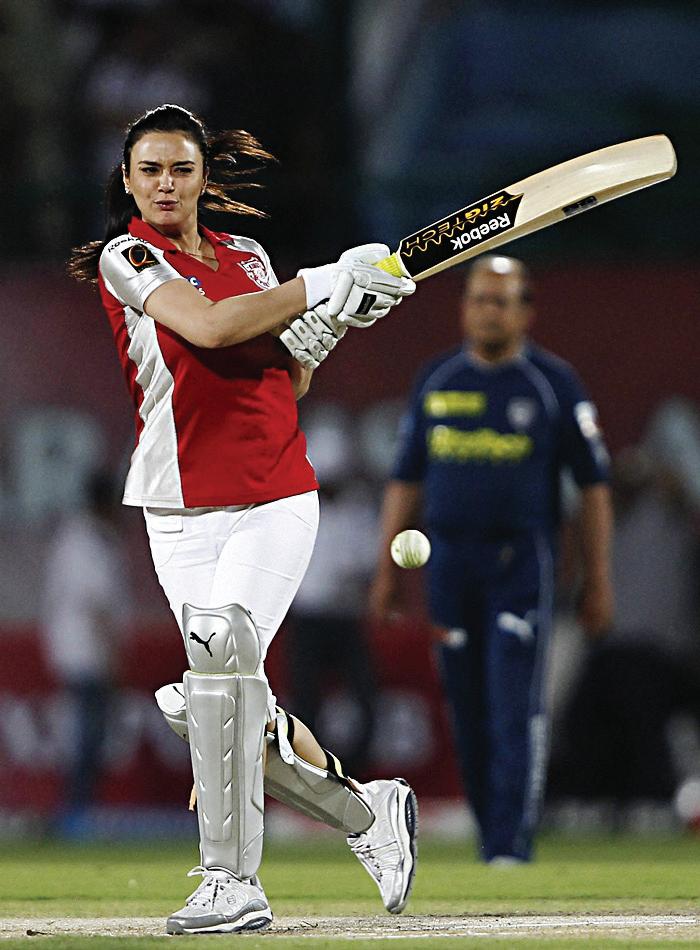
NATIONAL EDITION
Depression and the workplace
There is a need to improve the skills of managers to better respond to, and deal with, cases of depression and anxiety disorders
BY NOEL G DE SOUZA
The 2011 Federal Budget has earmarked over $ 1.5 billion for mental health; hopefully, this long-awaited gesture will go a substantial way to alleviate individual and family pain.
Beyond Blue is the main organization which focuses on awareness of depression in Australia. As part of an annual survey of professionals across Australia by Beaton Research & Consulting, Beyond Blue conducted research on awareness and attitudes regarding mental health problems in the workplace. Entitled the 2011 Annual Business and Professions Study, it was released just days before the budget.
This issue of depression is important to migrants as they can often feel, rightly or wrongly, left out or that they are not given their rightful due (by way of credit or promotion). As an example, well qualified Indian doctors and engineers have suffered in the past as their skills and qualifications were not recognised in this country, though this has begun to improve.
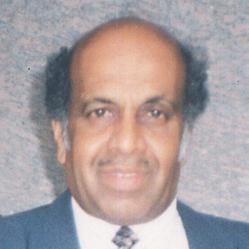
Depression in Australia cannot be underestimated. The survey points out that every year over three million people in Australia experience depression and/ or anxiety disorder. Untreated depression results in over six million working days being lost. This causes absenteeism and loss of productivity, resulting in substantial financial loss to industry.
reached have been publicised in US Government health websites as well as by ReachOut.com, an Australian organization.

Passive bullying can be subtle and covert but still hurtful, and might involve excluding someone from the main office group. The victim might then suppose this is because of something like race, religion or gender. Such alleged discrimination is difficult to prove. An individual who feels bullied in one place might find respite in another workplace.

The problems of a depressed individual might not get identified in the workplace as the managerial staff may simply not be aware of them. The Beyond Blue 2011 report found that a mere 17.5 per cent of respondents had completed any training related to dealing with mental illness in the workplace. How can any confidence be maintained in a fair working environment when depression cannot be identified by even a quarter of the managerial staff? Moreover such depression might have its roots within the workplace itself such as through bullying (overt or subtle).
Those professionals who did have some mental health training rated suicide intervention skills (40.6 per cent), the BeyondBlue National Workplace Program (39.6 per cent) and Mental Health First Aid (37.4 per cent) as being extremely useful. There appears to be no obligation for the managerial staff to undertake such programs.
Signs of depression are varied but generally involve low moods and a resulting inability to actively participate at the workplace.
Signs of depression are varied but generally involve low moods and a resulting inability to actively participate in the workplace. It can involve both insomnia and excessive sleeping. The affected individual can become overwhelmed with a sense of helplessness and worthlessness and lose interest in once-pleasurable activities. Indeed, such an individual could wallow in self-pity and thus get self-absorbed. Breaking out of this isolation is imperative.
Unfortunately, a major cause of depression in the workplace might be bullying. We have seen only recently that there has been quite a lot of furore in the media about bullying in the armed forces. Such behaviour has rightly been termed as “unAustralian.” It should not to be tolerated because Australia prides itself on being a land of the ‘fair go.’
There can be many and varied reasons why a person might get depressed in the workplace. The reasons can be active bullying which is overt and blatant or it could be subtle and passive. The result is the individual targeted can feel lonely, rejected, helpless and afraid. Some of the conclusions
The BeyondBlue 2011 report significantly notes that “Professionals with the highest levels of awareness regarding anxiety disorders were those who had undertaken training in dealing with mental illness in the workplace and those who had a previous diagnosis of depression or an anxiety disorder.”
It further adds that “Lawyers reported the highest levels of mental health training (22.0 per cent) [and that] lawyers were significantly less likely to agree with stigmatising views regarding depression.
Lawyers were also more likely (73.3 per cent) to agree that having a stressful job increases the likelihood of depression.”
The report concludes that professionals “generally felt their organization was not well equipped to manage mental health issues in the workplace effectively.”
Clearly, a lot more needs to be done to improve workplace awareness of employee depression. If managerial staff are unable to detect depression and instead blame the employee, that employee could instead get further stigmatised.
One bit of advice that the National Institute of Mental Health (USA) gives depression sufferers is “Try to spend time with other people and confide in a trusted friend. Try not to isolate yourself.” A supportive workplace should rightly be the starting point for therapy with managerial staff who can be trusted and confided in.
40 <> JUNE (1) 2011 INDIAN LINK
www.indianlink.com.au OPINION
New, clear wisdom
The recent Fukushima nuclear crisis in Japan has drawn new attention to the safety and viability of India’s nuclear plants
countries nuclear plants for use as bombs at their convenience is being far too hospitable.
 BY ROY LANGE
BY ROY LANGE
The nuclear developments in Germany over the few days on the heels of the Fukushima crisis have grave implications for India.
The German Chancellor recently did a 180-degree turn on her decision of last year to greatly extend Germany’s 17 nuclear plants’ lifespan and to initiate further construction. With overwhelming public concern for nuclear safety after Fukushima she now has proclaimed Germany will be free of nuclear power by 2022. Indeed, currently only 4 of the 17 plants are now on line. This was monumental as her policy of only late last year snuggly embraced the burning atom as the panacea of long, cold German winter power shortages.
Fukushima of course was largely influential in this about turn. The world watched with dropped jaws and crossed fingers industrious-looking little men in white overalls trying to contain nuclear radiation. For the better part I was convinced they didn’t have the foggiest idea what they were doing, or worse what was happening, but it was terribly reassuring.
What wasn’t reassuring, actually very destabalising, was this was happening in the most technologically advanced country in the world. The world sees the Japanese as very clever and insanely organised, if not a little humourless. If it could happen there it could certainly happen in Germany, indeed they even share traits.

This is why the rest of the world certainly shouldn’t have nuclear power. The rest of us are dimwitted, disorganised and always up for a laugh.
But what has not been reported widely is the findings of the safety inquiry commissioned by Merkel to assess the structural integrity of the plants. This was the decider. Regardless that the tests were conducted with 30 year old safety perimeters they have concluded that none of the 17 nuclear plants would withstand a crash by a large plane and seven would not withstand the crash of even a light aircraft!
This is terrible news for India. “You don’t have to take the bang to the enemy; the bang is already there when you take out his nuclear plants.” India is surrounded by some strange, idiot neighbours. Pakistan to her West should have been certified years ago and China to her north is madly ambitious. Giving these
As the late Matin Zuberi, a leading scholar of international relations, said, “The core of a typical nuclear plant contains about 1,000 times the radioactivity released by the bomb dropped on Hiroshima. A high explosive bomb used against it would acquire the attributes of a nuclear weapon without its blast effect.”

What worries me to my core is that India could suffer an incalculably catastrophic disaster not from powerful missiles from a highly militarised neighbour but from some dribbling at the mouth nutter with a Cessna or a Tata tempo laden with explosives in the car park.
With the US assassination of Osama exposing the porosity of air defense systems, with their brazen abuse of Pakistani sovereignty, India is mortally defenseless.
All it would take for an Indian nuclear plant to be breached would be a Pakistani helicopter with an almost effeminate explosive. If a German plant cannot withstand the impact of a small aircraft we can assume a plant in Kalpakkam would not repel a crazed, red-eyed Pakistani pilot high on patriotic tripe.
The terrorist attacks of the last few years would not have found a place in fiction. They have been too brazen and wholly implausible. Now the ridiculous notion of a terrorist attacking a nuclear plant must star highly in security agencies risk assessments, not in the grubby newsprint of pulp fiction. After 26/11 any satanic scenario seems wholly real.
If India cannot protect the heart of Mumbai, as indeed the Americans could not protect their New York from a handful of murderous zombies, then what hope can we hold for a dozen nuclear plants?
How could these plants be protected from erstwhile human beings who are dedicated, increasingly sophisticated and have, as the Headley trial has evidenced, State sponsorship? It is like the peacock desperately trying to save her white domed, delicate eggs from the village rats. The point of difference being that only one egg cracked will leave Hindustan a desolate, sterile nuclear landscape.
It is deeply ironic how delicate these plants are that harness such brutal power. But it is deeply moronic that those in India’s political establishment have swallowed the sales pitch of nuclear plant manufacturers with this very real risk of incineration.
JUNE (1) 2011 <> 41 NATIONAL EDITION
www.indianlink.com.au OPINION
If India cannot protect the heart of Mumbai, then what hope can we hold for a dozen nuclear plants?
It is deeply moronic that those in India’s political establishment have swallowed the sales pitch of nuclear plant manufacturers
Food grain distribution needs an overhaul

Some food should be better given away to the poor for free rather than allowing it to rot for want of better prices or more godowns
BY DILIP JADEJA
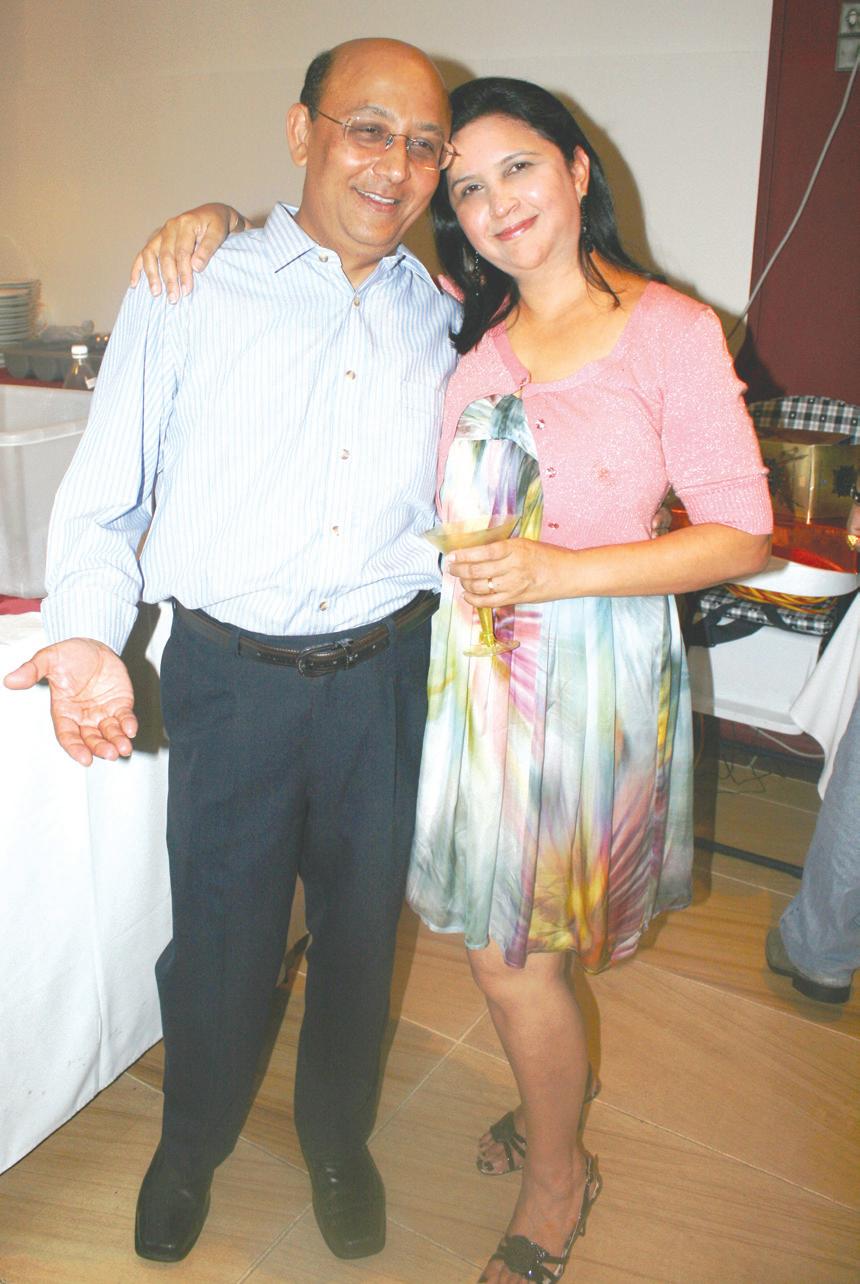
For most of the past 50 years I thoughtquite wrongly - that there was not enough food in India to go round. Now I know that is not the case. That begs the next question: why is hunger so rampant? State and central
So why is the world silent about the gross mismanagement of food - its pricing, storage
A large quantity of food grain stock that the Indian Government buys to create a buffer for the poor goes waste due to lack of adequate storage facilities
surprised if the Congress government in India is thrown out for mismanagement of food.
There is but also an opportunity for the Congress government, and for India’s opposition parties to address the critical food supply and storage issue. Let’s take the example of wheat. It is the staple food for majority of Indians. This year, in Madhya Pradesh (MP), bumper wheat crop was produced. However, there is no space to store that wheat. In India, government buys lot of wheat in the open market as a backdoor subsidy to prop up prices but partly also to create a buffer stock for the poor. It then stores the purchases in government godowns. But the godowns are full and the wheat, rotting uncovered, rots in blistering heat.
This makes one wonder whose fault is it. A recent TV report showed how 62,000 tonnes of wheat brought to Itarasi Mandi was flung on the bare ground. Other 303 godowns in MP are also overflowing after the state government reached its purchase target of 3m tonnes.
Considering that the wheat inflow was expected to reach 4.5m tonnes, the state government’s Civil Supplies Corporation now wants to store the surplus in unused jails and cinemas, notwithstanding the rat problem! It’s likely that tens of thousands of tonnes of this wheat will be destroyed but the governments – state and central – will not distribute it to those who desperately need food. This is a significant failure for both the Food and the Agriculture ministries. The report warned the government of inadequate storage space once the new

crop starts reaching government godowns. Ms. Vrinda Karat of CPM came to the Parliament with ration shop supplied wheat which had rat droppings in it to show to the Speaker her “evidence” on live TV!
Government godowns had 45.8m tonnes of grain against the buffer limit of 21.2m tonnes, and the new crop arriving in the godowns was expected to swell the figure by another 25m tonnes. Given that wheat production in 2011 was expected to be 81.4m tonnes compared to 80.8m tonne in 2010, the Government has no excuse for not anticipating the situation. Worse, Finance Minister Pranab Mukherjee said “we just accept we could not create storage facility,” as if that was enough! One MP rightly said in the Parliament that “the country is sitting on a grain bomb.”

Recent reports suggest that under the new Food Security Bill proposals, there will be a need to store 68.7m tonnes of wheat!
Biraj Patnaik, advisor to the Supreme Court commissioners on the right to food, said the government was minimising (direct) subsidy but was buying huge stocks to support farmers; however it failed to promptly distribute the food grains to the poor. To me, this begs the question: Why is the Manmohan/ Sonia Government not supporting the hungry?
Last year, a government Minister admitted on national TV that Rs. 22,000 crore (A$4.5billion) worth of food stock was lost due to rat infestation and during storage. The Government of India needs to completely overhaul its policy on purchase, storage and distribution of food grains. Its public distribution system is actually working against the poor, and helping black marketers.
The economists and the marketing experts of the world need to come forward, review India’s food control and distribution systems and come up with a better system. Control or decontrol, food cannot be allowed to be reduced to a commodity to collect election cash for ministers, which some say it has become.
42 <> JUNE (1) 2011 INDIAN LINK
India’s public distribution system is actually working against the poor, and helping black marketers
www.indianlink.com.au OPINION


JUNE (1) 2011 <> 43 NATIONAL EDITION Singh Food and Spices A spice shop with a difference 143 Stephen Street (cnr Sackville Street), Blacktown Phone 02 9676 4677 Fax: 9676 4688 enquiry@singhfoodspices.com.au : www.indianspices.com.au Blacktown Quantity Quality Service
Touching conversations
BY CHITRA SUDARSHAN
Some years ago Abraham Verghese, a doctor who graduated from the Madras Medical College, went to the US and worked at the University of Iowa’s outpatient AIDS clinic. He turned his experiences into a book, My Own Country, which was nominated for the National Book Critics Circle Award. Last year, Siddhartha Mukherjee wrote a book on cancer titled The Emperor of All Maladies, based partly on his experience as an oncologist and partly on his research into the history of the disease. Now Melbourne’s own Ranjana Srivastava, an oncologist who has worked at various city hospitals, has written a book about her experiences with some of her cancer
While providing basic medical aid and counselling to the afflicted population, Ranjana wrote about her experiences and attracted sufficient funds to buy the island inhabitants their first boat
patients. Tell Me The Truth: Conversations With My Patients About Life and Death (Viking, 2010), is now shortlisted for the Douglas Stewart Prize for Non-Fiction – part of the NSW Premier’s Literary Awards for 2011.
Ranjana Srivastava has had an exemplary academic record and a stellar career: she was educated in India, the United Kingdom, the

United States and Australia. She graduated from Monash University with a first-class honours degree and several awards in medicine; after which she undertook her internship, residency and specialist training at various Melbourne hospitals. In 2004 she won the prestigious Fulbright Award, which she completed at the esteemed MacLean Center for Clinical Medical Ethics at the University of Chicago. Ranjana was admitted as a fellow of the Royal Australasian College of Physicians in 2005, and started practicing oncology in the public hospital system. She is married with three young children. Yet somewhere between this extraordinarily full and busy life and career, she has found time to volunteer with the Missionaries of Charity whilst in medical training in Kolkata in India, where she provided street-based basic medical care; she was appointed by the Commonwealth Service Abroad Program to assist in the tsunami-ravaged Maldives in 2004. While providing basic medical aid and counselling to the afflicted population, Ranjana wrote about her experiences and attracted sufficient funds to buy the island inhabitants their first boat. Local philanthropists helped build the boat as the island’s first community-owned medical transport vehicle, which was used to ferry sick patients to the nearest hospital located on a different island. She has worked with the Asylum Seeker Resource Centre in Melbourne with refugees and helped them negotiate community and hospital-based care at a time when they were granted minimal access to these services. This would have been a lifetime achievement for anyone, but not for Ranjana Srivastava. This young doctor published her first article as a medical student in the Lancet and has since continued a productive career in writing, including in such prestigious publications such as Time,
the New England Journal of Medicine, the Journal of the American Medical and the Journal of Hospice and Management. In 2008 her story
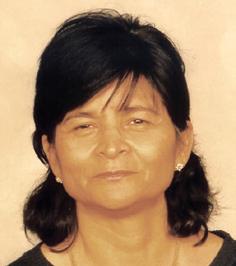
Patient won the Cancer Council Victoria Arts Award for outstanding writing. She writes a regular column for the Indian edition of the international magazine, The
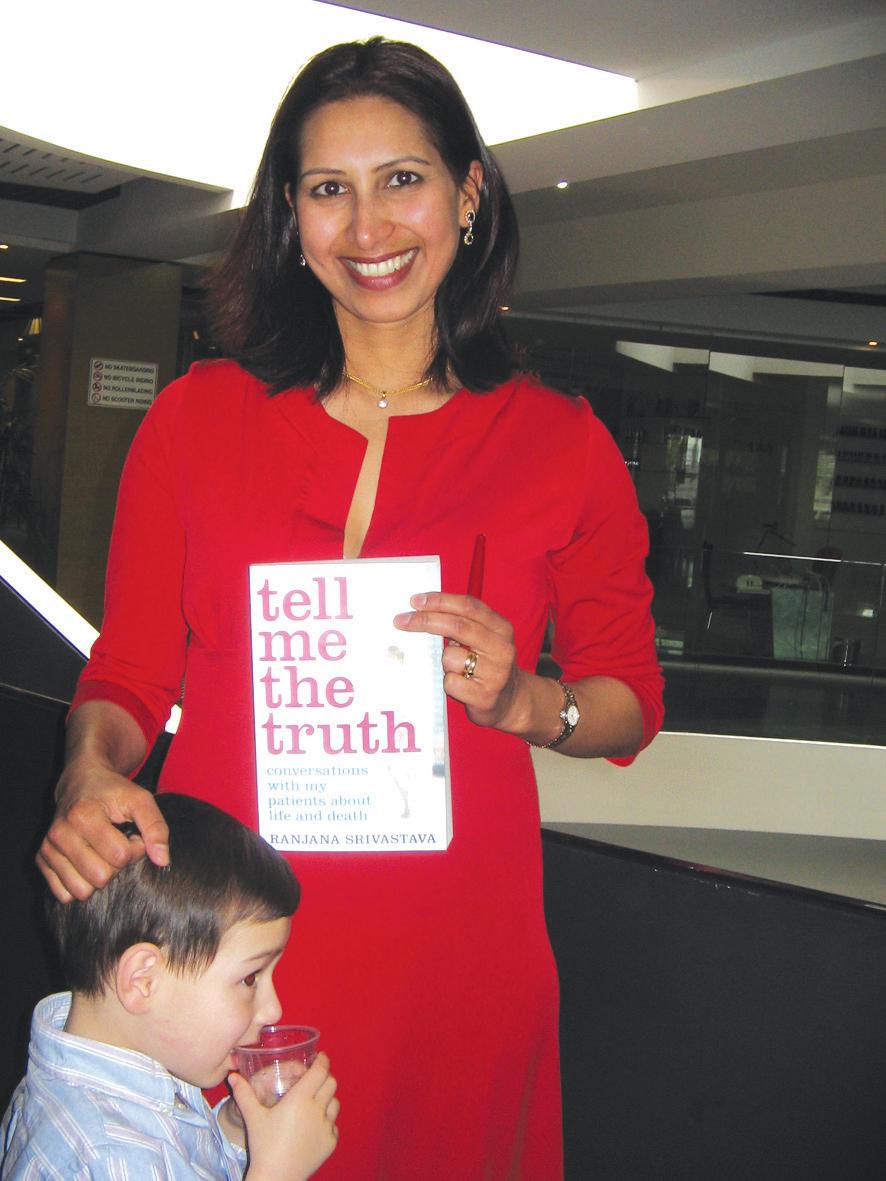
This young doctor, therefore, has accumulated such a magnitude of medical experience in her young life – and an even shorter span as a doctor or an oncologist – that she decided to share them with others. In some ways, the idea was sown several years ago as a child when her dear Nanima died of cancer in Bihar: the family had little idea of how long she would survive or what the prognosis was. She died suddenly, without giving her family time to come to terms with the disease or to grieve. This left an indelible impression on the young Ranjana, who realized early on in her career, the importance of telling
Indeed, the author shows us that in most of the cases, all that patients or the immediate family want is for an oncologist to simply listen to their stories or what they have to tell
the patient the truth. In her book
The Truth, Srivastava has, in each of the chapters, described a particular cancer patient who has somehow endeared himself or herself to her, or at the very least, left a deep impression. She reflects on the very human side of the medical profession - the moral dilemmas and the angst - and shows
Lessons on Life
and complain the least,” Ranjana says; and when doctors listen to them, their patients teach them a great deal about life, and help them see “the big picture”.
A self-help book that makes you understand the basic principles of leading a balanced and tranquil life
BY SHAILJA CHATURVEDI
That victory goes to the dedicated, determined and disciplined human beings who achieve it by their perseverance, intellect and wisdom is one of the powerful messages evident in Software for Your Soul by Dr Muthukrishnan. The book is almost an encyclopedia for happiness, contentment and fulfillment in life, which is the ultimate accomplishment for each of us. Be it through meditation, hypnosis, NLP or quantum science, the longing for peace and happiness has not changed in millennia.
Dr Muthukrishnan has formulated a condensed tool which should become a reference book for daily living. He has tried and tested it on himself, and from becoming healed, he is now a healer.
There is ample scientific evidence to convince us that our conduct, thoughts and actions have an impressive and lasting impact on our self-refining, neuroplastic brain. The same biological changes are brought about by medication, meditation, hypnosis and psychotherapy.
In this book, there are useful tips and recipes for managing your life and world to your satisfaction and freedom. The section dedicated to relationships is especially important, as it is the most significant chapter of human life.
It is a very readable book structured around chapters and themes. The message is simple and universal which will be as useful for the professional, as much as for seekers of balance in their life. The recent trend in the readership of motivational and self-improvement literature has been a positive change. Software for Your Soul in the human potential area will facilitate personal growth in order to accomplish the desired path in life with happiness
and a sense of contentment which naturally leads to strength, self esteem and productivity.
The courage of self-revelations in Chapter 2 is indeed thought-provoking, as is the need for personal healing by the simplest measures which reside within us and not outside, in many forms. Although an ardent follower of hypnosis, Dr Muthukrishnan has gradually incorporated many other human potential
Dr Muthukrishnan has been able to condense his lifetime experiences, both professional and personal, in this thoughtful and practical life manual which is indeed, a comprehensive account of good life.
options which evolve through hypnosis into his practice, and is the secret of his unrelenting success.
His prescribed patience for the ‘Latent Period’ with the analogy of a seed becoming a plant is one of the many strategies that he elaborates throughout the book.
Vedic philosophy and the Bhagawad Gita have remained timeless scriptures for an accomplished life. It is pleasing to see the emphasis he continues to make of their relevance to the generation of today and the future, with a belief in the most powerful person within yourself.
Dr Muthukrishnan has been able to condense his lifetime experiences, both professional and personal, in this thoughtful and practical life manual which is indeed, a comprehensive account of good life.
For the price tag of under $40 it is an economical ladder to help balance life at the very basic level.
44 <> JUNE (1) 2011 INDIAN LINK
www.indianlink.com.au BOOKS
The sympathy and understanding of a doctor is sometimes the best thing that a cancer-suffering patient truly needs
Photo: George Thakur


JUNE (1) 2011 <> 45 NATIONAL EDITION
Shrinking service
BY MALLI IYER
The name ‘service provider’ is associated with electricity, telephone and internet companies of whom there are several, since privatisation of public utilities has become the norm. Ask any member of the public and they will dub them as ‘service dividers’ instead. The ‘age of information’ has heralded advanced satellite-linked telecommunications, multimedia, voice-recognition software and real time data transmission, but if everyone expected service levels to go up by harnessing the power of technology, they were sadly mistaken. Most of us would be unanimous in our opinion that the level of customer service we receive has severely deteriorated. The absence of human interface in our day-to-day lives has deprived us of a basic right to send and receive communications as a customer. As far back as 1890, Mahatma Gandhi expressed his thoughts on serving customers when fighting apartheid in South Africa. He memorably said, “A customer is the most important visitor on our premises. He is not dependent on us. We are dependent on him. He is not an interruption of our work. He is the purpose of it. He is not an outsider to our business. He is part of it. We are not doing him a favour by serving him. He is doing us a favour by giving us the opportunity to do so.”
The relevance of this message seems to have been lost on businesses globally, judging by the ever-shrinking service levels in every walk of life. The increasing incidence of queues on telephones (sometimes for half hour or more) only to be directed to an automated menu which is programmed to confuse callers, is the order of the day – whether you are calling banks, restaurants, insurance companies, government departments or airlines. In most cases customers feel frustrated and cornered due to poor satisfaction from such sessions. The control of the conversation and the service provided is with the supplier, rather than the buyer. You start to wonder what has happened to “Service with a smile” – an oft repeated cliché from not so long ago!
In several cases, customers are bound by contractual arrangements, whether it is insurance, mortgaging institutions like banks, telephone companies or healthcare providers, and there are penalty clauses for breach of contract designed to prevent easy switching to another supplier if their services are unsatisfactory. The customer is no longer able to choose where or how they spend their hard-earned dollars to obtain the best value services for

their money. The government departments that provide essential services like water, electricity, municipal services are monopolies in any case, and have no ear for customer grievances. Poor public transport, road signage, the appalling state of some of our suburban roads, parks, public facilities such as pedestrian walkways, urban housing and town planning are areas that, the public feel, lack adequate thought and consultation. Business and real estate lobbies frequently govern the decisions of urban development.
Persistent complaints from customers and attempts to redress their grievances are blocked by reasons such as computer failure, security, power outages, even raw material shortage, all of which leave the customers with a Hobson’s choice. Sub-contractors of services are frequently blamed for poor service and upkeep of facilities by government departments.

Servicing aids such as ‘self service’ booths, scanners, automated teller machines, vending machines and parking meters provide the absolute minimum service when they are maintained properly. We hear about security failure in protecting public property from theft, credit card frauds and broken down machines all too often, to the extent that customers fear for their accounts and bills received at the end of each billing cycle. Most of us are not averse to paying a fee for a proper service, but when banks close branches and substitute them with ATMs it amounts to downgrading an existing service. They then have the audacity to charge an ATM fee, a fee for using the teller service and a cheque-issuance fee, all of which essentially pushes the customer towards stuffing their dollars in a pillow, or resorting to a cash economy instead. It would seem that expecting the banks to pay you interest for using your money is a thing of the past. Instead, they are more focussed on inflating their profits.
There is a trend among businesses to introduce a premium for even a moderate level of service which is sometimes tagged on to the product price. Hotels and travel companies are known to resort to this charge – a credit card fee is already a very common occurrence. Airlines introduced a premium for business and first class travel many years ago, but they have now gone ahead and introduced a premium for a preferred seat, a reasonable meal, refreshment and travelling with checked-in baggage.
KNOW THYSELF AS SOUL
Sant Mat is a practical spiritual path based on meditation, ethical living, service to others & love for all creation. Its goal is to enable the soul to return & merge into its source; the purpose of human life described by mystics of all traditions. Discipline & dedication are essential, as is the help of a competent living master. Entry is via a preparation program. There is no charge at any stage.
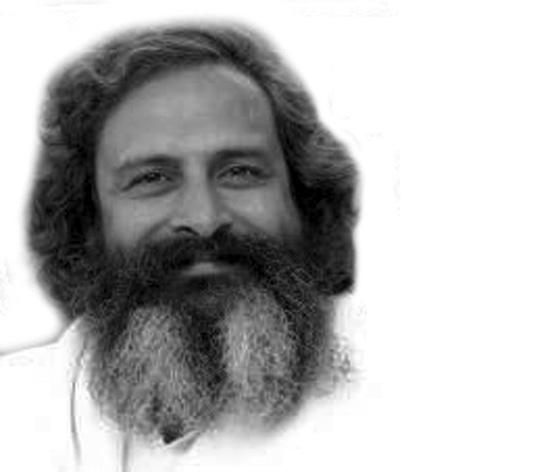

For more information...
Contact Sita 0408 880 155
www.santmat.net.au Know
overhead racks for hand-luggage. In some cases you could use an airport lounge of an airline for a price, since internet facilities and some refreshments are provided by them. This could be called “service with a hand in your pocket, but not necessarily with a smile”.
Governments are increasingly resorting to recover the cost of a contracted “visa and passport service” by increasing their fees for consular services provided to the public. Some of these measures have reached ridiculous proportions – a car hire company will not only charge you for the car hire, insurance and fuel, but they will levy a fee for providing you with a GPS or an electronically fitted navigating instrument. In the past, at least you were supplied with a Street Directory to help negotiate your way when travelling in a strange city. Now they do not feel obligated to provide you anything other than a car, but levy extras for everything else.
There used to be specialised training programs for customer service staff who were recruited for their friendliness and customer-oriented approach. We see little evidence of this and hardly any ‘eye contact’ when we visit service-oriented businesses such as banks, restaurants, insurance companies or even department stores. Lack of proper training and skills required for the job are a casualty, but this scarcely worries the owners of these businesses. Any semblance of a service is more the exception than the rule, but it is a sad state of affairs when we are confronted with an upfront fee for service, even before we have made a decision to buy a product or service!
46 <> JUNE (1) 2011 INDIAN LINK
VIEWPOINT www.indianlink.com.au
Technology may have advanced, but there’s no doubt that customer service has seriously deteriorated, leaving the consumer feeling bewildered and cheated
The absence of human interface in our day-to-day lives has deprived us of a basic right to send and receive communications as a customer.
Thyself As Soul
is a not
Foundation
for proft association incorporated in NSW
No Indian films at Sydney Film Festival
For more than half a century, the impressive Sydney Film Festival has been like an annual feast for Sydneysiders who craze for the latest in contemporary and artistic cinema from Australia and the world.
This year the 12-day film fiesta, from 8-19 June 2011, will showcase 161 titles: 75 features, 39 documentaries, 34 short films, 13 retrospective titles, 10 world premieres, 86 Australian premieres. The festival will feature films from 42 countries in 47 languages, including 29 Australian productions (1 retrospective, 6 features, 10 documentaries, 12 short films).
“Between our high-octane opening night premiere of Joe Wright’s Hanna starring Cate Blanchett and Eric Bana and our closing night premiere of Mike Mill’s delicious romantic comedy Beginners with Ewan McGregor and Christopher Plummer, you will find the very best cinema from around the world,” said Festival Director Clare Stewart.
However Sydney’s large Indian community is disappointed not to see any film from India, in Hindi or any other regional Indian language, in the list, despite the fact that India produces the largest number of films in the world.
So, what’s the problem? Aren’t Indian films any good? Can’t agree with that; at the recently concluded Cannes Film Festival a montage of footage culled from nearly seven decades of Indian films, titled “Bollywood: The Greatest Love Story Ever Told,” was showcased with the irrepressible energy and over-the-top exuberance of Bollywood, and India itself.
Sydney Film Festival, since its launch in 1954, has screened films from reputed Indian filmmakers such as Satyajit Ray, Mrinal Sen, Shyam Benegal and Buddhadev Dasgupta. Today eminent contemporary filmmakers such as Aparna Sen, Goutam Ghosh and Karan Johar are making outstanding films, such as Japanese Wife, Moner Manush and My Name is Khan, which Sydney cinema lovers would have appreciated.
In 1996, a special night of Indian cinema was organised for the first time at the Sydney Film Fest, featuring three films back-to-back. With Shabana Azmi flown down as special guest, the event had gone down particularly well, and not only because of the charms of India’s leading ‘thinking’ actress. A few years later, mainstream Bollywood movies (eg Zanjeer) were also picked for a once-off retrospective one year. But lately, India’s representation has been, sadly, miniscule. This contrasts sharply with the Melbourne International Film Festival last year, for which Aamir Khan’s Peepli Live was picked, and yes, the star himself came down to introduce the film. It brought Melbourne’s Indian community out in larger numbers than ever before to the festival. Indeed, there were probably interstate visitors as well, just to get their own photo of Aamir! This must surely be a message to the festival organisers – bring in a Bollywood film, and one of its stars, and you will have a whole new section of eager audience members buying up your tickets and filling up your seats.
Endorsed by Fédération Internationale des Associations de Producteurs de Films, the regulating body for international film festivals,

an official competition with the prize money of $60000 was introduced as a part of this festival in 2008. It has surely upgraded the status of the event. According to the festival organisers, the films were selected for their emotional power, resonance and the way the subject matter is treated. Sleeping Beauty from Australia and A Separation from Iran are the two films to watch out for in this year’s competition, which features ten other films. A highlight of the program this year is the screening of eight films made by Iranian film directors Jafar Panahi and Mohammed Rasoulf who was recently, in a move that rocked the foundation of what is believed as freedom of expression, sentenced to six years of imprisonment on the charges of making

films against their country.
The film festival is a major event on the international film calendar and one of the flagship cultural events for Sydney and New South Wales, attracting international attention and interest.
UNESCO last year honoured Sydney as “City of Film”, the only other city enjoying similar status being Bradford in UK. So no Indian participation in such a prestigious event perhaps raises questions, particularly at a time when enhancing Australia-India relationship beyond cricket curry and commonwealth into art and entertainment is at the top of the agenda for both nations.
JUNE (1) 2011 <> 47 NATIONAL EDITION
www.indianlink.com.au MAINSTREAM
Sandip Hor
Iranian film ASeperation
SUPER SPICES

A look at 10 traditional Indian spices and their health benefits
BY GEETA KHURANA

Indian foods have evolved over thousands of years, taking on the flavours of various cultures yet maintaining the aroma and benefits of condiments and spices that are the hallmark of Indian cooking. These come in different colours and flavours and just brighten up the food palette. Just a pinch here and there can make a big difference in our cooking. The word ‘spice’ comes from Latin species meaning a commodity of value and distinction. Traditional Indian cooking almost always uses fresh ingredients and involves making dishes from scratch using spices such as turmeric, cloves, cardamom, cumin seeds etc., all of which have medicinal and healing properties. Bark, leaves, roots, seeds, and bulbs of plants are used to create innumerable flavors and combinations. The beneficial properties of a few spices are listed below:
1.Ginger (Adarak)
disease-preventing, and health-promoting properties. Nutmeg has many therapeutic applications in many traditional medicines for its anti-fungal, anti-depressant, aphrodisiac, and digestive properties. It is also rich in many vital B-complex vitamins including vitamin C, folic acid, riboflavin, niacin, vitamin A

the intestines and the stomach. Infections, indigestion, and flatulence can also be alleviated by taking 2 pinches of salt
soups, curries and rice. Bay leaf has essential oil, tannins, and flavonoids and is helpful in treating diarrhea, flatulence, and indigestion. It is also used for treating scabies and itchy skin.
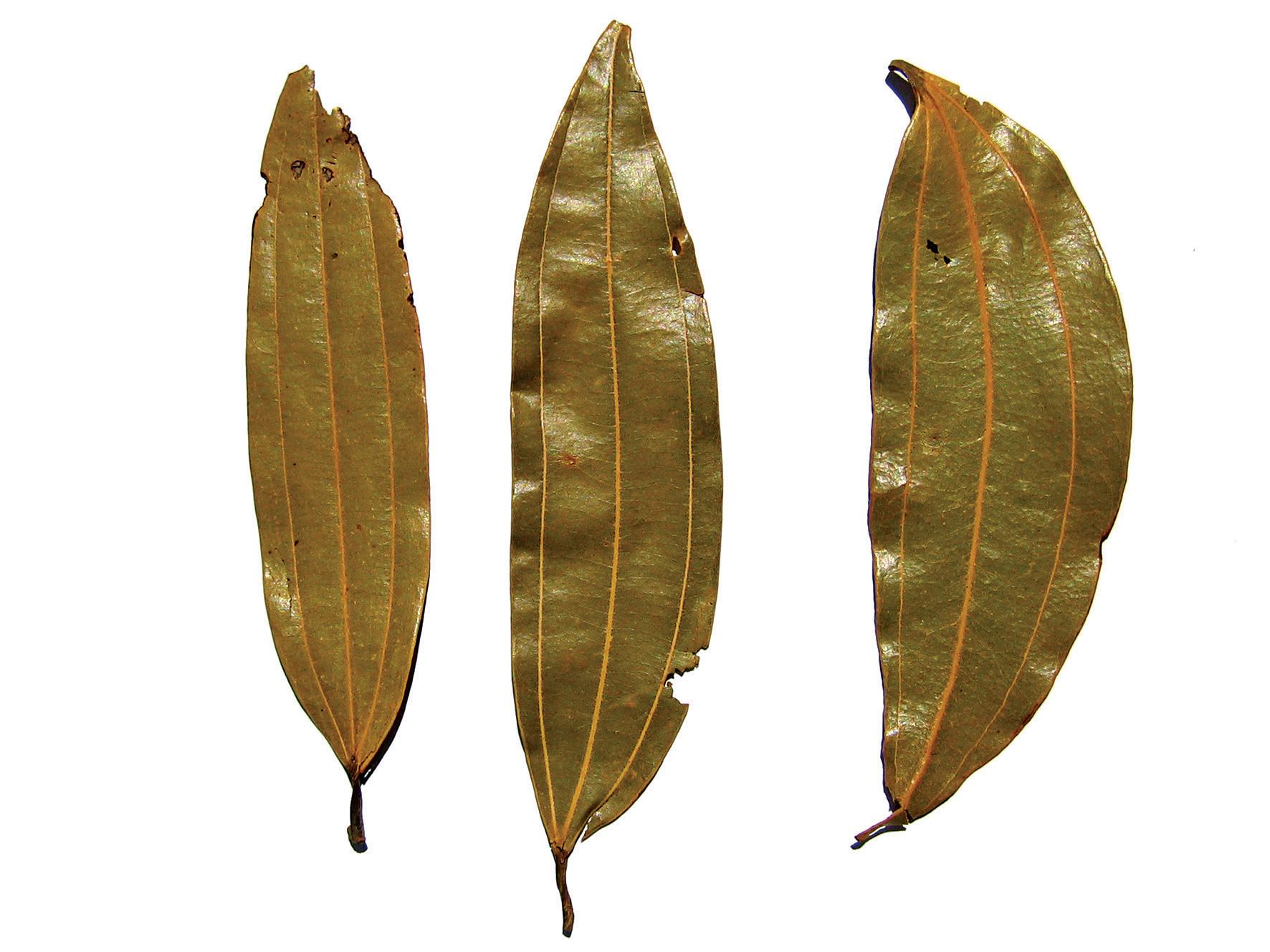
Ginger has been used for more than 2500 years as a flavouring to the food as well as a medicine and herb. Ginger has been used in many herbal decongestants and can help in minimising the symptoms of respiratory conditions such as cough, cold, and allergies. Ginger root is fast becoming a medicinal herb. Ginger is packed with many active compounds, including gingerols and zingibain. It helps in treating morning sickness nausea and nausea related to motion sickness without any side effects. The anti-inflammatory properties in ginger help ease muscle and joint pain.

2. Garlic (Lahusun)
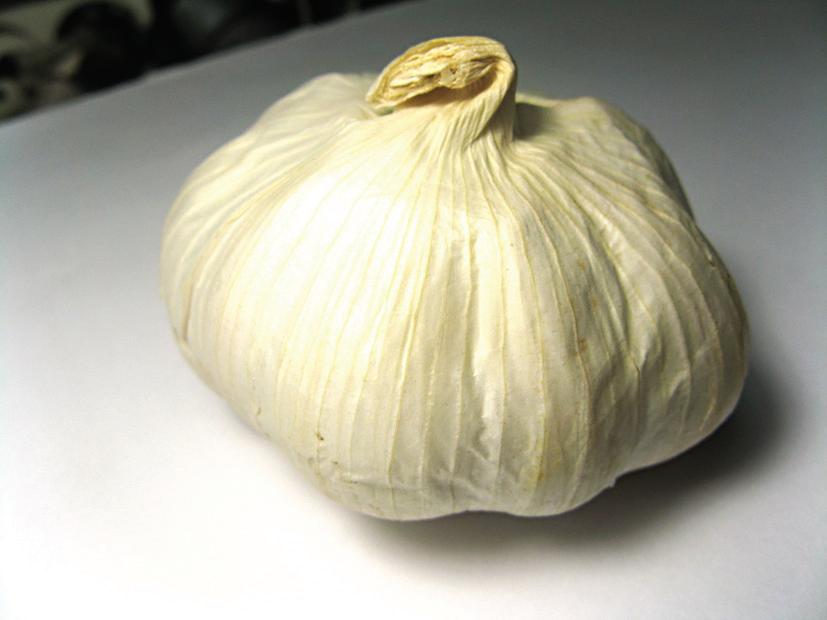
Garlic has been used in Ancient India and Eastern Medicine. Garlic is commonly used around the world for both culinary and medicinal purposes. It has been used as an antibiotic and as well as a cooking ingredient. It has generally been thought to stimulate the immune system.
the nutrient that has received attention in the media because researchers are interested in curcumin’s possibilities in fighting cancer and Alzheimer’s disease. The curcumin in Turmeric is thought to have anti inflammatory properties. Apart from curcumin, turmeric contains high levels of iron and manganese and moderate levels of vitamin B6 and potassium – all these are part of a healthy, balanced diet.

reduce congestion and stimulate digestion. Whole cloves are used as a flavouring in curries, meat dishes, and soups.

cure bad breath, and relieve gas and bloating. It contains the antioxidant cineole. These aromatic seeds contain oil that helps to stimulate digestion and relieve flatulence. It is thought to contain potent antioxidants and often used as a detox for the liver.


In addition to delivering antioxidant and other benefits, condiments and spices can be used in recipes to partially or wholly replace less desirable ingredients such as salt, sugar and added saturated fat in, for example, marinades and dressings, stir-fry dishes, casseroles, soups, curries and Mediterranean-style cooking. Vegetable dishes and vegetarian options may be more appetising when prepared with herbs and spices.

48 <> JUNE (1) 2011 INDIAN LINK
www.indianlink.com.au WELLNESS


JUNE (1) 2011 <> 49 NATIONAL EDITION


50 <> JUNE (1) 2011 INDIAN LINK


JUNE (1) 2011 <> 51 NATIONAL EDITION
Tales from the Golden West
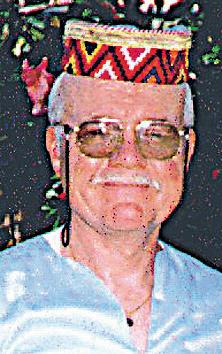 BY THOMAS E KING
BY THOMAS E KING
For thousands of years aboriginal people of coastal Queensland and northern New South Wales would trek along traditional pathways every few years to the lush cool hinterlands of the Bunya Bunya Mountains. Here in a spectacular wilderness domain – an isolated spur of the Great Dividing Range – they would converge amid rainforest peaks sheltering the largest stand of ancient Bunya pines in the world.
Surrounded by the sanctity of serene rainforest, a mild climate and sweet water streams, they gathered to exalt the bounty of the Bunya nut harvest. While feasting on these nourishing kernels they would proceed to swap stories, trade goods and celebrate marriage unions with age-old rituals, all in the shadow of the magnificent pines.
The proliferation of Araucarlia bidwillii as the Australian natives are botanically known is not by accident I learned, when a national park guide said I was standing on the remnant of an old volcano. Over the eons it eroded and weathered, creating highly enriched soil. Because of secluded gullies and micro climates, geographically isolated habitats evolved which continue to nurture a broad range plant and animal species. Some of them like the Bunya pine, are rare or threatened.
“Watch out,” cried the guide. I turned around just in time to see a large green basketball-sized pinecone thud to the ground only metres from where I was standing. If the 10 kg spiky ‘cannon ball’ had struck my head, someone else would have needed to pen these tales!
Bunya pines produce edible seed bearing cones from early January to March (there’s a bumper crop every third season.) It was late March when I visited Queensland’s second largest national park and the massive Bunya pines were heavy with cones.
A 19,600 ha. expanse of rainforest, eucalypt forest, woodlands and high altitude grasslands was declared a national park in 1908. Queensland’s second oldest national park welcomes around 200,000 visitors annually with 90 per cent of them arriving from the various compass points of
Australia.
Many visitors are intent upon escaping the throngs of people and the unrelenting pace of life in concrete cities back home. There are just 30 permanent residents living in the mountains, and visitors for much of the year can enjoy the rainforest clad-peaks in relaxed bliss. It’s only during school breaks and public holidays that numbers swell considerably and bookings must be made well in advance for chalets and campsites.
Other visitors come to the mountains with the sole intent of picnicking and camping in these pristine surrounds. Note that the steep and winding mountain roads are narrow and not recommended for caravans or trailers, however.
Three visitor areas, Dandabah, Westcott and Burton’s Well have been developed for campers and equipped with suitable amenities. Dandabah, as I discovered a few months ago, is most visitor-friendly. A large open area has a kiosk, craft shops, several small cafes and many swish chalets where grazing wallabies await arriving guests.
Wildlife abounds in the Bunya Mountains. I watched crimson rosellas flitting from one soaring pine to the next while savouring a gourmet picnic lunch of delicious regional specialities. Later, during an oxygen-infused stroll on the short Bunya Bunya track, I listened to a brush turkey – or was it a black-breasted button quail? – forage for food on the forest floor.
Unlike the latter creature which is considered nearly extinct, swamp wallabies are commonplace. I saw them upon arriving as well as departing this rural retreat set high above rich farmlands on the edge of the Darling Downs.
It was the fertility of the land that predominately lured early settlers to this part of Queensland, an area long regarded as one of Australia’s most productive regions. Known for its ability to hold moisture, the area’s deep black soil was found to be perfect for growing grass for livestock.
Back in the 1850s, large flocks of sheep roamed enormous stations that stretched beyond the horizon. The largest of these farm properties was Jondaryan Estates. At
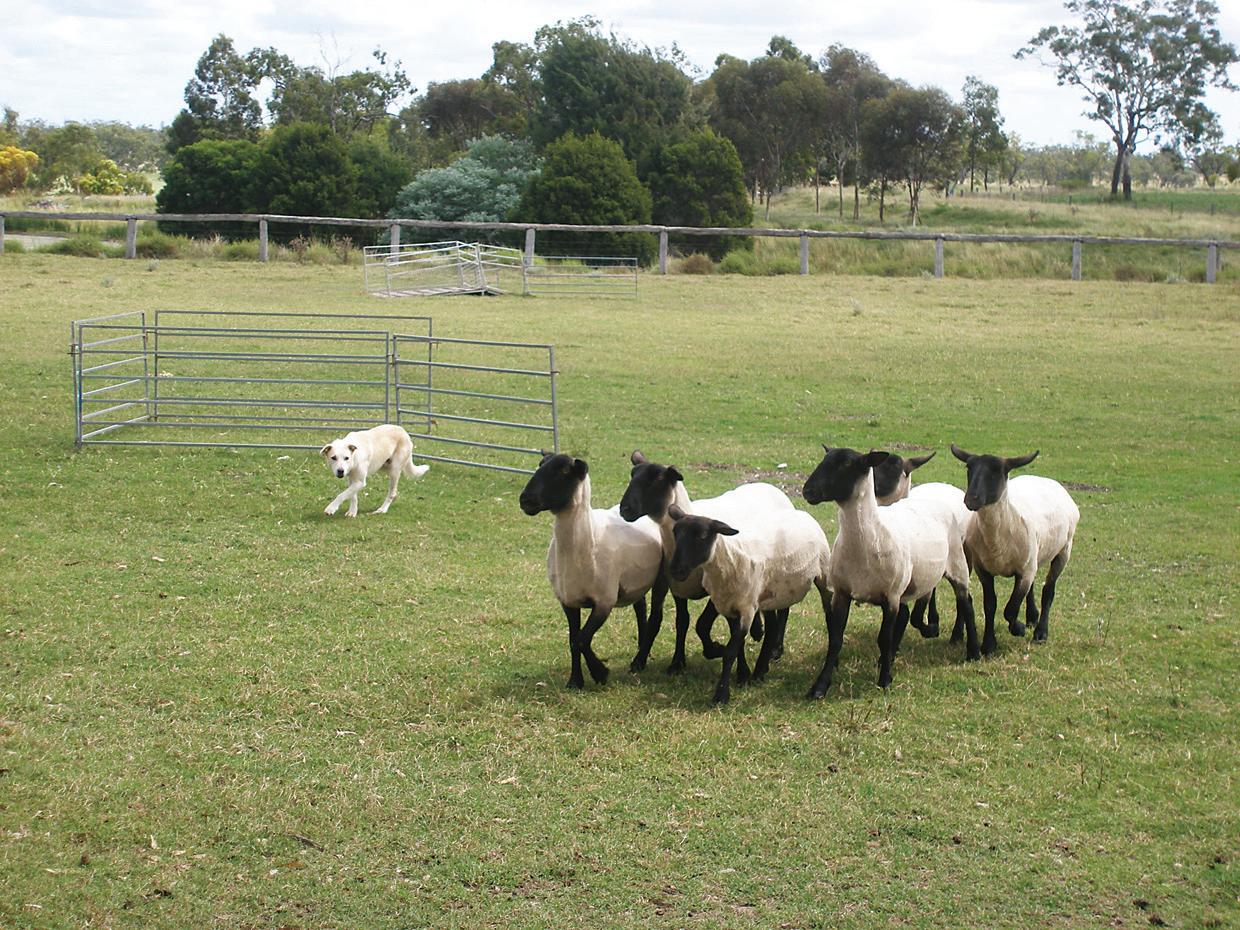
its peak in the 1890s it encompassed over 300,000 acres of lovely Darling Downs countryside, and was the largest freehold station in Queensland at that time.
The property back then supported up to 600,000 sheep. All required periodic shearing in order to obtain their valuable wool. One of the earliest shearing sheds to be found in the Downs was constructed on Jondaryan in 1861. I stood before what was once the largest woolshed in the world, admiring the talents of those responsible for building this rural masterpiece. Much of the original building from 150 years ago still exists, although it has been extended as the demand for wool increased.
The 80 m long wooden shearing shed is the focal point of the Jondaryan Woolshed Open Air Working Museum. Established in 1975, the museum features historic buildings as well as vintage machinery and equipment, items that have direct links with the station and early life on the land.

Jondaryan is an Aboriginal word for ‘a long way off’ and to the many shearers working on this remote property, this certainly was true. Toowoomba, 45 km to the east, was the largest population centre in the area. Supplies were brought in from Toowoomba as needed, but it was too far for entertainment-starved shearers and other farm folk to casually visit the fledgling town unless they had sufficient leave to undertake lengthy horseback journeys.
Those living and working at Jondaryan consequently were residents in a largely self-sufficient community that continued to grow for many years. As I walked around the open air museum and past the original shearers’ quarters and a relocated homestead, I began to understand some of the hardships these rugged pioneers had to endure.
While there are interactive and educational exhibitions and displays located within many historic buildings on the site, informative and affable guides like Snow Potter have a wealth of real-time tales to tell about an era when sheep were the mainstay of the local and national economy. He related more stories of this bygone time when he grasped shears and deftly gave a ‘haircut’ to a wool-laden sheep.
52 <> JUNE (1) 2011 INDIAN LINK
TRAVEL
Discover a retreat where nature is at its rural best and where the vestiges of a sheep-rearing community have been effectively preserved
1 2
Later, he offered still more insights into rural Queensland life a century ago, while a work-wise sheepdog slowly shepherded a flock of skittish animals into a fenced enclosure.
If I could have been at the same place around a million years ago, the scene would not have involved a sheep dog mustering a flock of ‘woollies’. Instead, I would have observed giant wombats and even larger kangaroos, animal oddities that existed when mega fauna roamed this part of Queensland.
No one, of course, knows what these prehistoric creatures looked like but excavations have revealed fossils that provide vital clues. Lifelike representations have subsequently been created and I gazed at them with fascination while ambling through well-presented galleries at Toowoomba’s Cobb & Co Museum. This wondrous repository of Australiana traces a path through an incredibly broad spectrum of time from the mega fauna of millions of years ago, through some 12,000 years of aboriginal history and on to the days of Cobb & Co coaches.
The museum, a major tourist drawcard for Queensland’s largest inland provincial city, pays tribute to Cobb & Co.’s
sulkies on display.
Everything I saw was in impeccable condition, but it was only when I viewed the well-furnished workshop did I learn that carriage rebuilds and restorations are actually undertaken within the museum. A newly opened section of the museum known as the National Carriage Factory is a “purpose built open plan training centre where a wide range of heritage sill workshops are conducted”.
One to two day workshops are designed for individuals interested in creating unique items employing heritage trades. Workshops are offered to teach skills from blacksmithing and silver smithing to leather craft and glass art. One upcoming heritage craft workshop has particular appeal and may well lure me back to Toowoomba later this year. Successful completion of a short course in ‘Creative Bookmaking’ would provide the essential skills to permanently preserve the many wondrous yarns I heard during a tale-trimmed tromp through Queensland’s Golden West.
Travel notebook
Queensland’s Golden West
FLIGHTS
Qantas has numerous jet services from capital cities and major metro centres to Brisbane. See your travel agent for more information or visit www.qantas.com.au
ACCESS
Toowoomba, a 90-minute drive west of Brisbane and 2 hours from the Gold Coast, is the burgeoning hub for the Toowoomba and Golden West Tourism Region. Rent a car and visit the Bunya Mountains and the Jondaryan Woolshed during daytrips, or include these major attractions in a leisurely motoring holiday of the region.
ACCOMMODATION
The diverse region offers a varied range of lodgings from cosy motels and boutique retreats, to alpine chalets and historic guesthouses. My overnight stay on the Bunya Mountains was in a stylish 3 bedroom chalet. See www.bunyamountains.com In Toowoomba, I stayed at the heritage-listed Vacy Hall, a historic guesthouse built in 1899. See www.vacyhall.com.au
EVENTS
The Toowoomba Carnival of Flowers, the longest running floral event of its kind, will again burst into bloom from September 16 – 25. While a cavalcade of events is planned including a colourful street parade and a week of entertainment, the real stars are the city’s beautiful floral displays. Call 1 800 331155 or see www.tcof.com.au
INFORMATION
Further details about the area are available from Toowoomba & Golden West Tourism, tel (07) 4632 1988, e-mail: enquiries@ tgw.com.au. See www.westerndownsholidays.info and www. queenslandholidays.com.au Call 1 800 688 949 for a free information pack containing details about regional attractions, festivals and accommodation.
Informative websites have also been developed for the Bunya Mountains (www.derm.qld.gov.au/parks), the Jondaryan Woolshed Open Air Working Museum (www.jondaryanwoolshed.com) and the Cobb & Co Museum (www.cobbandco.qld.gov.au)
1. Tour guide Snow Potter pauses before the iconic centrepiece of the Jondaryan Woolshed Open Air Working Museum.

2. Apart from sheep shearing demonstrations another highlight at Jondaryan is the display of sheep mustering.
3. Vast expanses of fertile farmlands spread out beyond elevated vantage points in the Bunya Mountains.

4. Dozens of bush walking tracts lead visitors through highly scenic areas of the Bunya Mountains.
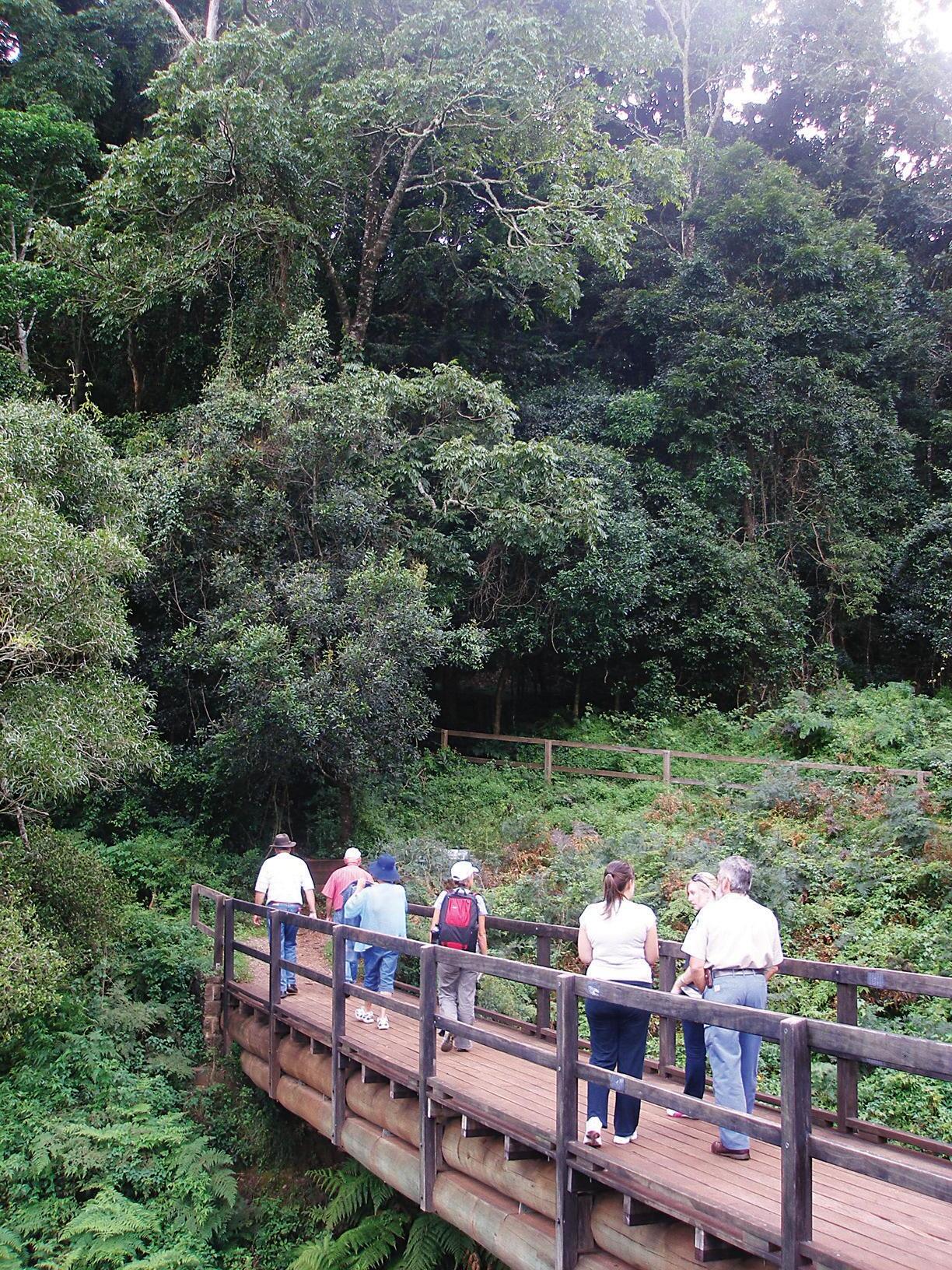
5.Toowoomba’s Cobb & Co Museum contains Australia’s finest collection of horse drawn vehicles.

JUNE (1) 2011 <> 53 NATIONAL EDITION
3 5 4
Photos: Thomas E. King


54 <> JUNE (1) 2011 INDIAN LINK


JUNE (1) 2011 <> 55 NATIONAL EDITION
Learning from
My mother had made up my mind when I was in Year Two that I would do the Duke of Edinburgh’s Award program in high school. Looking back I have no idea why. Neither she nor I knew what exactly the program was, only that I was to complete it. So, last year, when I was given the opportunity I took it, having no idea what I had signed myself up for. Now of course, I know better.
The program
Duke of Edinburgh’s Award is an international program that was introduced in 1956 to motivate young people between the ages of 14 and 25 in a range of selfdevelopment activities. These include hikes, a sport, a skill and a community service activity of the participants’ choosing, in an allocated length of time.

The program offers three levels: Bronze, Silver and Gold, in that order of difficulty. Having already completed Bronze last year, for a reason unknown to me, I started working towards my Silver Duke of Edinburgh’s Award.
The Silver Aaward requires participants to do 26 hours over 26 weeks of a skill, a service and a physical activity as well as two hikes lasting three days each, and involving route planning, navigating through the bush and canoeing.
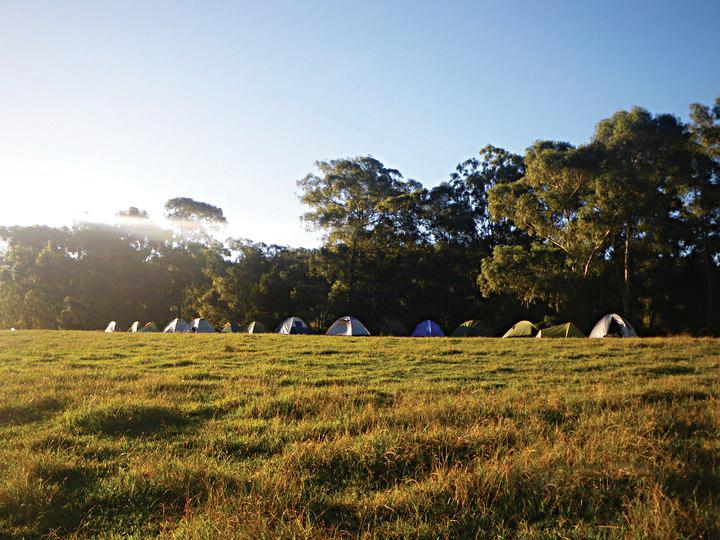
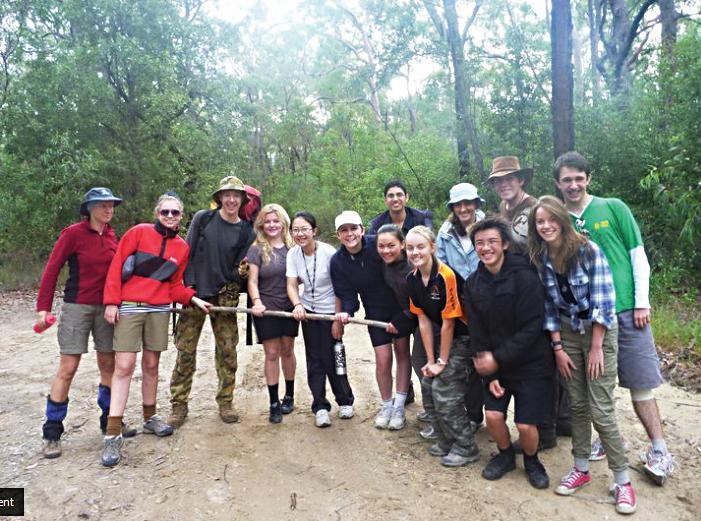
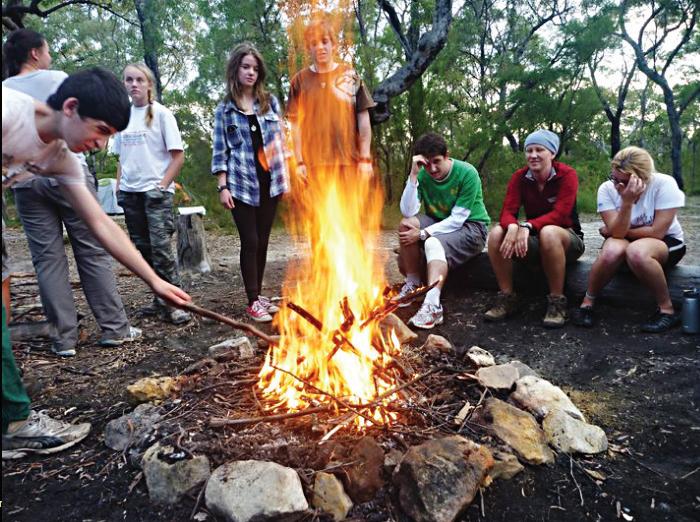
In comparison, the Bronze Duke of Edinburgh’s Award had involved only 13 hours of physical recreation, skill and service, and two hikes lasting only two days.
The thirteen hours of skill, service and sport had been easy, as I had already been doing most of it. However, in my opinion, the human body is not made to carry 16 kilos in a pack while hiking up a mountain so steep it should be called rock climbing!

Having never done Scouts or Cubs, I was unprepared for how long and tiring the hike was going to be. By
The Duke of Edinburgh Award is an international program that was introduced in 1956 to motivate young people between 14 and 25 in a range of self-development activities.
the end of that trip I was sure I would never be able to move again. I was hurting where I didn’t even know I had muscles and I was ready to burn my rucksack as payback for the pain it had caused me.
So signing up for Silver program was not one of the easiest things I have done. In fact it was after much debating with my program partner and my parents that I reluctantly joined the significantly smaller number of people who were continuing to the next level.
Skill, community service and physical activity
At first, the program seemed easy. I already did more than 52 hours of physical activity and skill a year, largely due to the insistence of my parents. The skills acceptable for the program range from cooking to public speaking, and even stamp collecting. I chose to play a musical instrument –the clarinet.
For my physical activity, I chose a Saturday sport, basketball.
I’ve been doing a Saturday sport for years, thanks to my mum. (It’s funny how everything I do and love doing now, is because of her insistence). I’ve played softball, hockey, netball and tennis, and now looked forward to basketball. For Community Service I decided that I would go to the nursing home opposite school and, with a few of my friends, play my clarinet for the elderly.
I played songs such as Danny Boy, Greensleeves and Over the Rainbow as well as songs from the well-known musicals Carmen and Scheherazade
Once when we were there, the whole nursing home seemed to be in a bad mood. As we started playing there
56 <> JUNE (1) 2011 INDIAN LINK YOUTH
people and Nature
Year Ten student Radhika Bhatia tests her mettle in a range of activities undertaken as part of a school credit program

were shouts of “What’s that noise??!” and “Turn it off!” so we quickly packed up our instruments and went home. But most of the time they enjoyed it, and even hummed along to the more famous tunes.
By playing for the elderly I have both improved my playing and nearly completed my service requirements for the Silver Duke of Edinburgh’s Award.
The hikes
The hikes could be defined as the most dreaded part of the Duke of Edinburgh’s Award program.
The Bronze hike had lasted two days, and that experience had nearly killed me! The Silver program course requires two hikes, lasting three days. As you can imagine, I was not in the least looking forward to the experience.
During the two-hour drive to base camp, I spent my time worrying. My partner and I obsessively discussed whether we had packed enough food, whether we had brought an extra jacket, whether we really needed to carry the extra tent peg, whether we had brought too much food. Throughout the trip, I would silently consider forgetting it all and driving back home. But before long, the car was parked and with a heavy heart I dragged my 16.5-kg rucksack towards the group of people I would be spending the next three days with.
There were two groups of 12 boys and 12 girls respectively but we were to canoe and camp as one.
On day one, we canoed 9 km, and after that I was no longer apprehensive about the boys or the hike. There’s something satisfying about cutting through still water with a paddle and feeling the canoe beneath you propel forward. Trees surrounded the river, almost hiding the mountains behind them. Sometimes it was completely silent, and all you could hear were the paddles dipping in and out of the water. Sometimes it was loud, as group members yelled across the water to each other. It was during the canoeing that the introductions began. We learnt that the boys came from Sydney Grammar Year Ten and most seemed to enjoy cricket and Latin. In turn they learnt that we came from Abbotsleigh, also Year Ten, and had no interest in either Latin or cricket! However, apart from the minor differences, we realised that the boys were actually quite nice.
Once my partner and I got stuck on a sand bank and our canoe refused to move. Determined not to get wet, we stayed in our canoe and attempted to push ourselves out of the bank with our paddles. However, after seeing our distress, one of the boys hopped out of his canoe, into waist-deep water, and came to our rescue.
We finished canoeing nine km easily and quickly set up tents at the campsite. The evenings were the best part of the hikes. We’d circle the campfire and play games, swap food, tell scary stories and learn more about our fellow hikers.
In the morning we’d get up, freezing and hungry, to wet tents and a cold breakfast. Unless of course, you decide, like one boy did, that you were going to make pancakes for breakfast. Then you’d end up with nothing to eat.
Trangias are portable stoves used by campers on overnight hikes. They consist of a brass burner, two pots for the food to cook in and a windshield to support the pots and protect the fuel from the wind. In short, a trangia is not made for cooking pancakes, and the boy, after a valiant effort, ended up with a half burnt and half raw mush that took him half an hour to clean.
From my experience I’ve learnt that at a Duke of Ed. hike you meet all kinds of people. Some come just for the extra ATAR points; some want to test their boundaries or improve their fitness; and some come because they actually enjoy the hikes. My group, all girls, consisted of the first and second kind, some a mix of both, and the other group, mainly of the third kind.
On the second day, the actual hike began. We navigated our way along the trail, our only tools being a compass and a map, as we attempted to find our way to campsite number 2.
At a Duke of Ed hike you meet all kinds of people: some come just for the extra points; some want to test their boundaries; and some come because they actually enjoy the hikes.
This part is where you can easily pick out what type of person you are with type one will be at the back, incessantly complaining and asking for breaks. Type two will be at the front, charging through with an attitude similar to the famous Little Engine “I think I can, I know I can”, and type three will be forever marveling at the beauty of the world and the creation of every rock in the bush. Belonging to type two, I have trouble understanding the other kinds. I do love Nature and have a healthy appreciation of native flora and fauna. However, while attempting to survive a 20-km hike through the wilderness, I do not have the time, nor the energy to marvel at God’s creation, especially when it seems like every loose rock is plotting my death, and every tree branch or prickly plant is reaching out its ‘knarly’ hand to scratch my arms and legs or to rip out my hair.
Day two was the worst for several reasons. One, it was the longest; two, it was the hardest; and three we had to ‘bush bash’. For some reason, our navigator at the time suggested that instead of following the trail along the ridge of the mountains, we were going to save ourselves time and effort and bush bash up and down the mountain. By
doing this we saved neither time nor effort, but instead nearly broke every bone in our body. There is a reason people do not make tracks in certain places, and by the end of day two, we all knew what it was!
Nevertheless, I have to admit that nearly sliding down a mountain, and rock climbing up the next one, gave our group a sense of accomplishment, and brought us together as we helped each other get to the top. We arrived at camp an hour and a half after the boys.
The last day was by far the best. By this time, we were all on first name basis and felt as if we could conquer the world. We were finally able to count with our fingers the number of kilometres left until we got on the bus trip back to base camp, and then home. Now, I too began to appreciate the pretty flowers along the way, and not even one complaint passed my lips. Perhaps as a result of being cut off from the outside world for so long or maybe due to lack of food and water, we began to sing songs,
name sticks and even run parts of the way back home. But perhaps the best part was beating the boys back – only to find out that it was because they had, for part of their hike, been travelling in the wrong direction. And people say girls don’t know how to read a map!
Looking back, I find it strange that I was dreading the camp. Because of the program, I have a considerably larger number of Facebook friends, I am a lot fitter, and have gained memories and skills that will – as clichéd as I know it sounds – last a lifetime.
I haven’t finished Silver Duke of Ed. yet. I still have 14 hours of skill, service and physical activity to complete, and my test hike, but I’m nearly there. And once I finish this one, I’m signing up for Gold!
JUNE (1) 2011 <> 57 NATIONAL EDITION www.indianlink.com.au
This article was written by Radhika Bhatia of Abbotsleigh Girls School as part or her week-long Year Ten work experience program with Indian Link.
Radhika is all set for the 3-day hike at Colo Valley
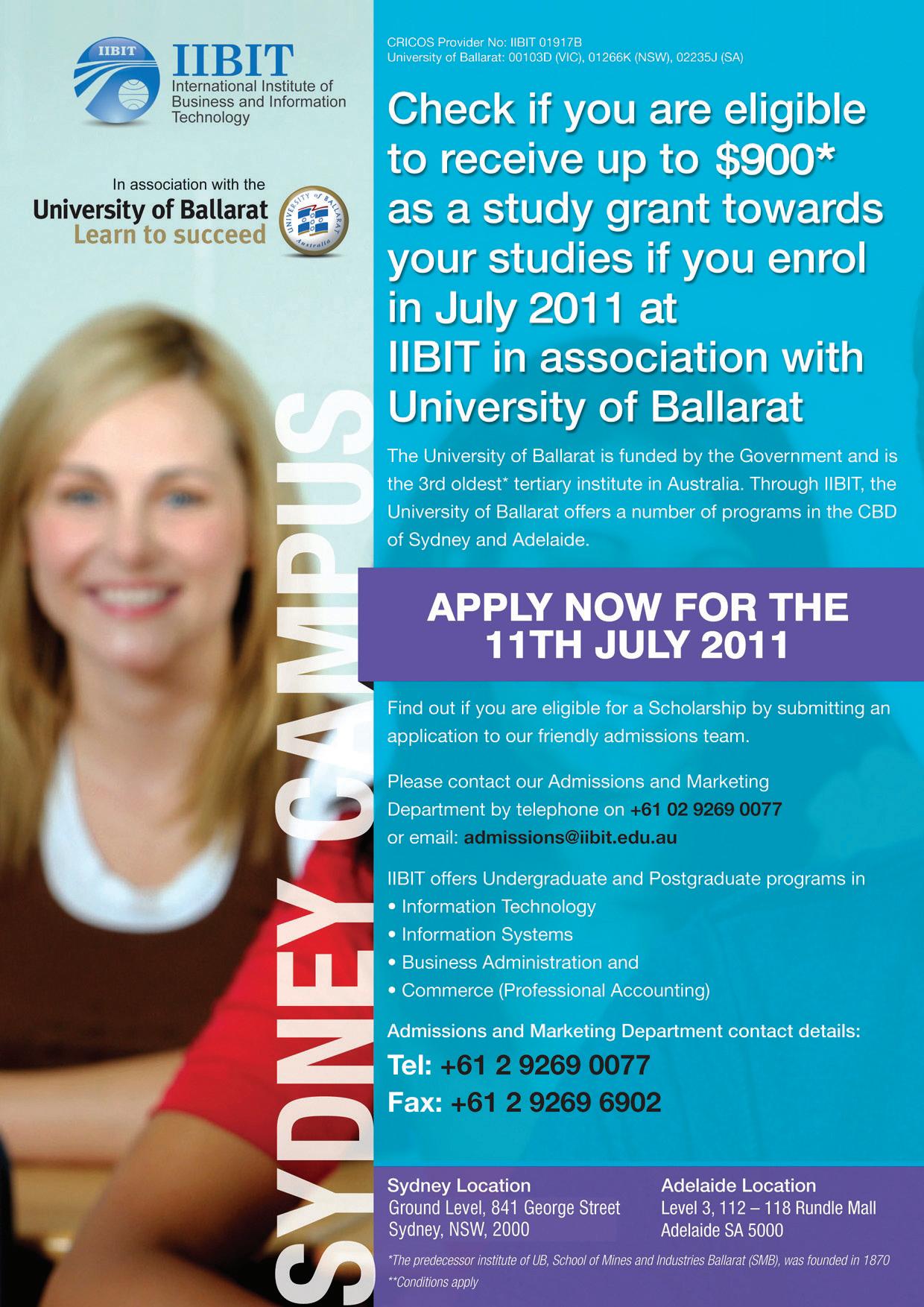
58 <> JUNE (1) 2011 INDIAN LINK
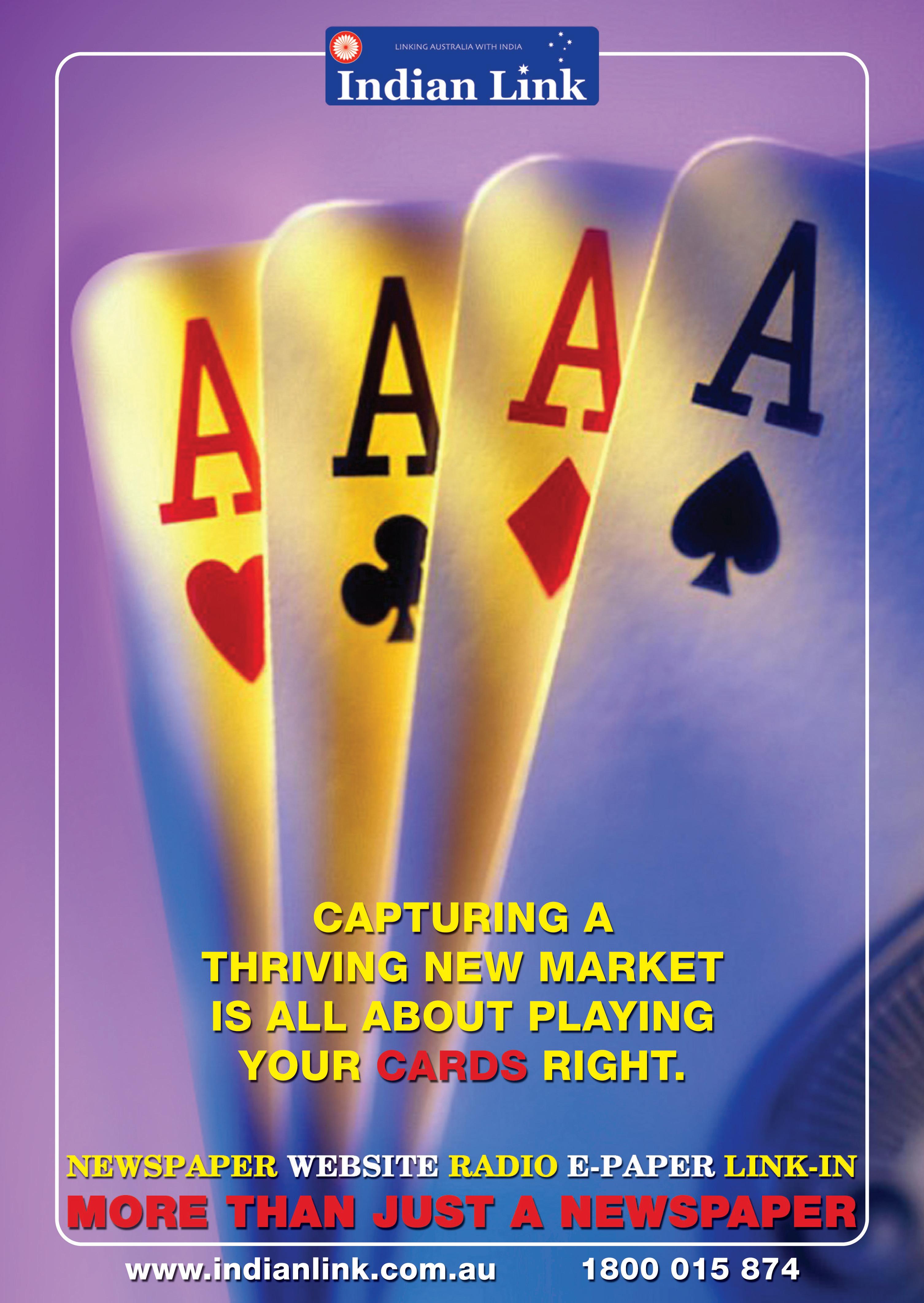
JUNE (1) 2011 <> 59 NATIONAL EDITION

60 <> JUNE (1) 2011 INDIAN LINK
The flights of a prodigy
Like him or not, it cannot be denied that Shane Warne’s skill and charisma made for fascinating drama both on and off the field
BY GAURAV PANDEY

Pure talent in action is one of the most compelling sights. When Shane Warne bid farewell to his cricket career at the Indian Premier League – a tournament he was associated with for the last four years as a player and coach of the Rajasthan Royals team – he left behind a list of accomplishments only well-refined talent can achieve.
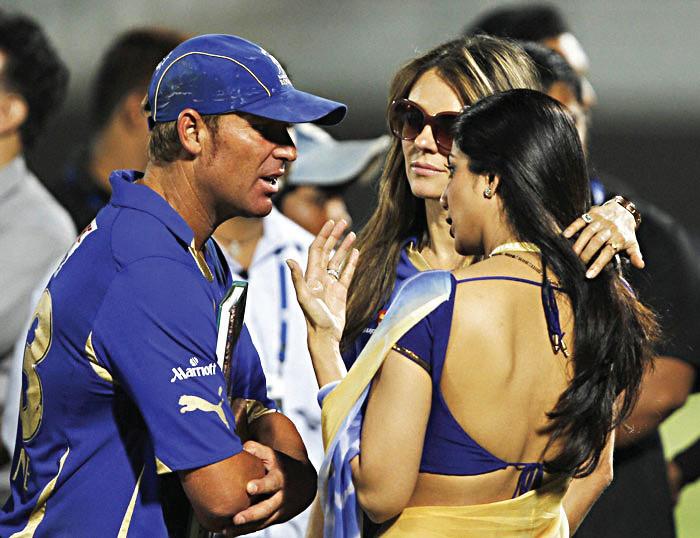
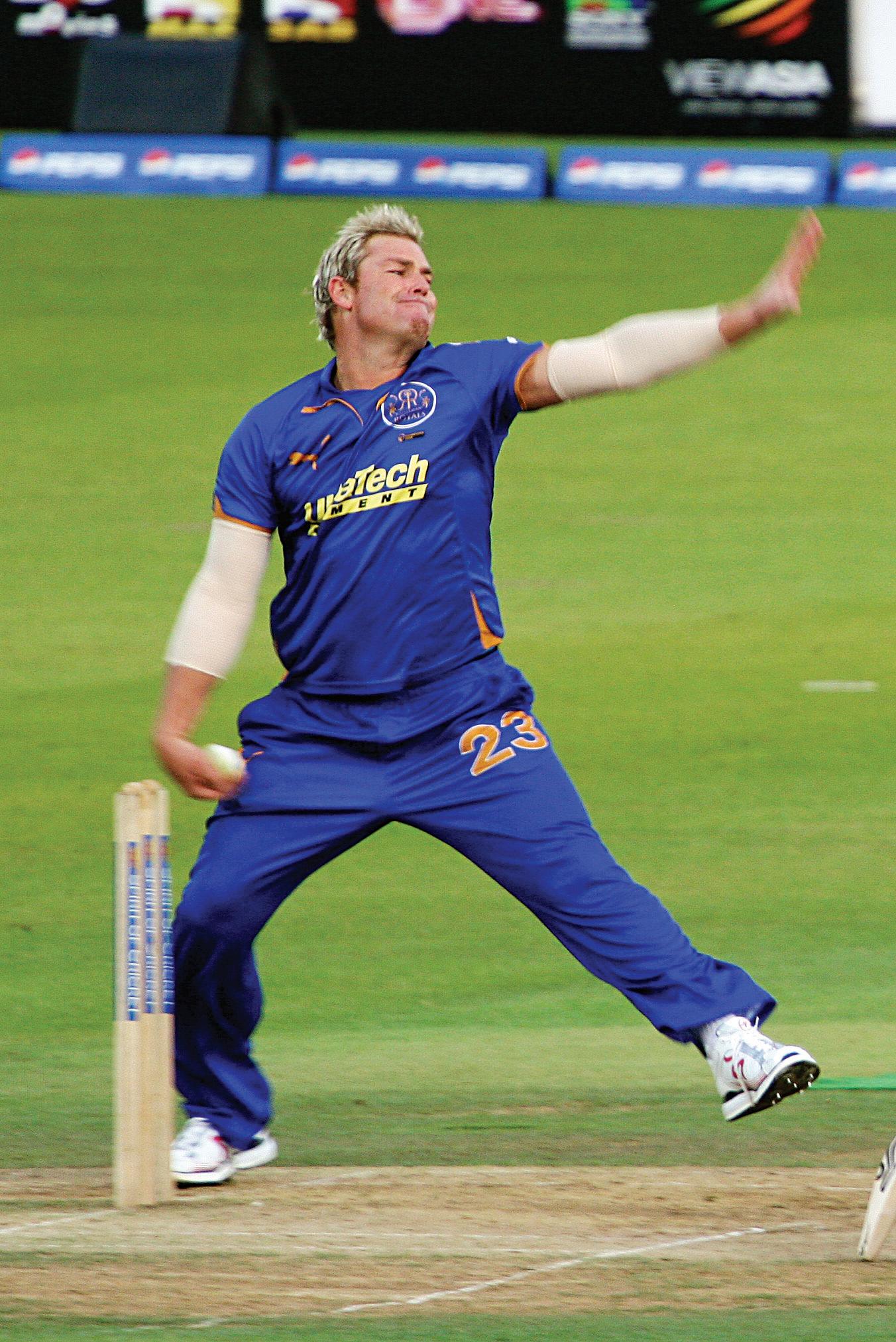
Warne’s longevity has challenged the notion that decline is a part of life. Even at the age of 42, he was hardly a pushover on the cricket field. Warne’s 4-year IPL stint brought together, and added to, his experience as a player and his larger-than-life image. It was apparent from the very beginning that he was going to be the sole commander of an untested bunch of players, who he went on to lead with aplomb to victory in the inaugural IPL tournament in 2008.
Warne’s 16-year-long international career was a fullthrottled journey, rising from the idyllic Victorian beach life and ending in the epicentre of the madness of a cricket crazy nation. His magical fingers turned the dying, neglected art of leg spin bowing to one of cricket’s most riveting aspects, bringing hordes of fans to the stands in the process. Even in times when a spinner’s loop and spin were fading by the day, victims of T20’s ruthless slogging, Warne never shied away from giving the ball a real rip, reminding us of the difference between a spinner and a slow bowler. His bowling repertoire had astonishing variety including the ‘zooter,’ a ball that dipped suddenly before landing and hurried on to the batsman; the ‘flipper,’ which kept deceptively low after bouncing; the ‘googly’, which turned
He turned out to be the best brand ambassador for Australia in India, reciprocating the almost infantile obsession of fans with a genuine contribution in honing the skills of youngsters
disguised as a leg spinner; and of course the leg spinners of varying degrees and the top spinners.
The vicious spin and deception in his bowling made even highly accomplished batsmen look utterly ridiculous, provoking in some a crisis of confidence so severe that they were reduced to his ‘bunnies.’ Warne’s English contemporaries – especially Alec Stewart, Nasser Hussein and Mike Atherton – feature prominently in the list, along with perhaps the most derided batsman of them all, the otherwise-prolific South African Daryll Cullinan.
Warne’s coach and mentor, Terry Jenner, who passed away recently, had a deep influence on him. Jenner’s advice to Warne that the primary role of a spinner is to turn the ball, stood him in good stead throughout his career, and as his ball-of-the-century-victim Mike Gatting would confess, he could turn them a mile.
He made mistakes – plenty of them – and paid the price for his indulgence: he lost his Australian vice-captaincy after publicly admitting to lewd phone conversations; was fined for accepting money from a bookmaker; had to undergo an extended ban for taking banned diuretics; and his marriage ended in a messy divorce after his marital infidelities were exposed.
However, grave as they were, controversies never pegged him back. In fact, he seemed to thrive on them, for beyond the women and the recklessness, he was essentially a man of supreme ability. In 2006, returning from a 12-month ban, he produced the most outstanding year of his career, grabbing a staggering 96 wickets with the control and precision that belied human ability.
Warne turned out to be the best brand ambassador for Australia in India, reciprocating the almost infantile obsession of fans with a genuine contribution in honing the skills of youngsters from little-known regions of the country – an objective that the bottom-line-driven IPL had seemed to lose sight of.
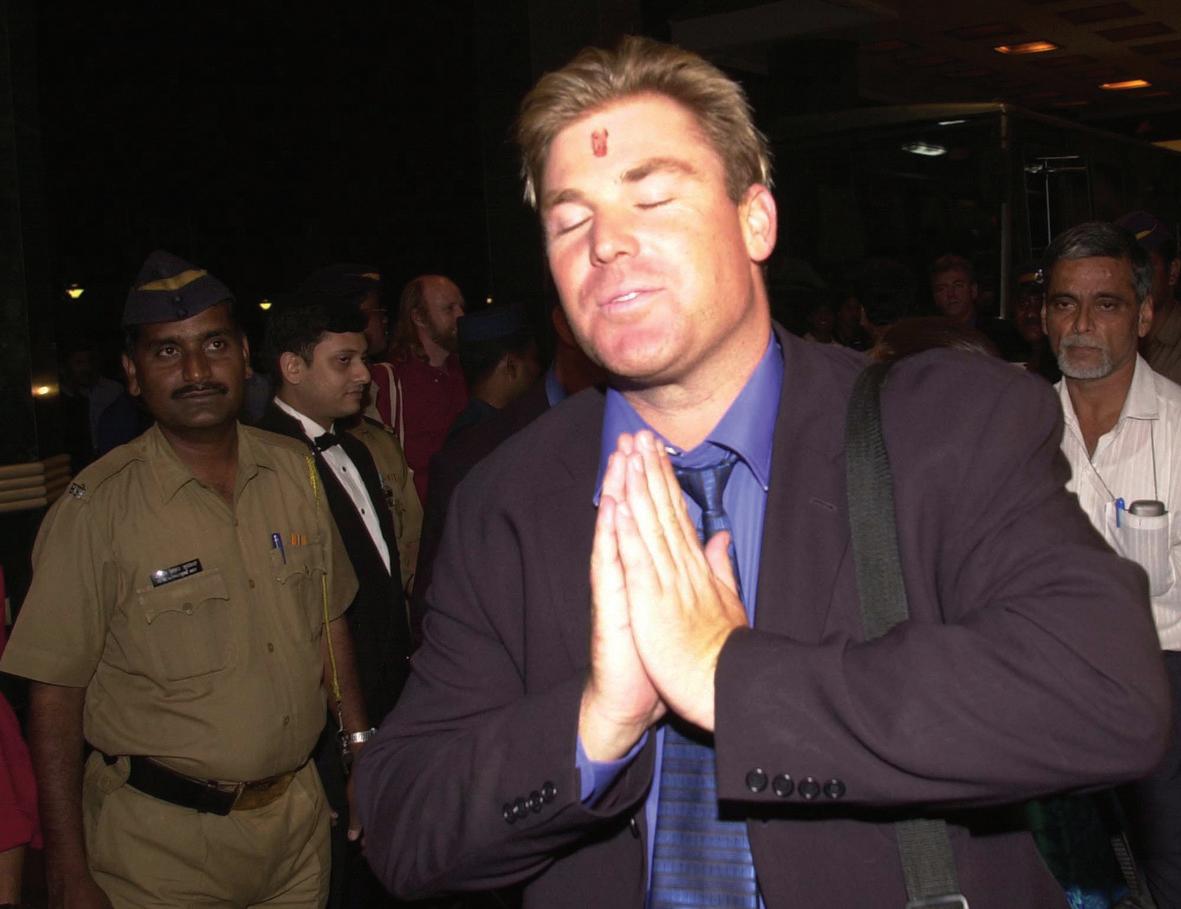
His understanding of India’s culture and its people also helped him play an important role in soothing the tensions between the two nations during the time when reports of attacks on Indian students in Australia had threatened to snowball into a larger conflict. “They live in our country. We have so much in common. Our cultures have a great love of cricket, music, families, good friends and strong communities. We are all human beings; let’s move forward together and rise above this,” he had stressed then, acting as
Warne’s career was a full-throttled journey, rising from the idyllic Victorian beach life and ending in the epicentre of the madness of a cricket crazy nation.

a much needed bridge between Australia and India.
Now, with the IPL responsibilities all but gone, he is reported to be considering a career in Bollywood - an industry well suited for him given his chutzpah and the surprisingly-good reputation he enjoys in India. And if the media attention he continues to receive with Liz Hurley is anything to go by, he should be getting used to the trappings of a film-star’s life.
Perhaps the primary attribute that has kept him afloat is his innate honesty – the kind that could withstand all the hype around it for years without being affected. Known to have a big heart, he has been involved in celebrity matches and various other activities for charity, including those held for his organization, The Shane Warne Foundation, which endeavours to collect funds for seriously ill and underprivileged children. He also supports other causes such as human rights, fight against AIDS, and disaster relief.
In a world of clichés, his candour has always stood out. He could be guilty of many things but pretence won’t make that list. To his numerous fans, despite his diametrically competing impulses, Warne is not only one of the greatest bowlers to have ever played the game but also an admirable human being.
JUNE (1) 2011 <> 61
www.indianlink.com.au SPORT
Refugee
And knowing that your ultimate destination was going to be chosen by the luck of the draw, only true refugees would find their way to the offshore sites.
corpses in a foolish attempt to give them a dignified farewell. I say foolish for I only lost three fingers as I made my trek across that perilous area.
had left hell and come to paradise. I smiled as I lifted my daughter to take in the beautiful view.
Our breakfast arrived with the morning paper. Hot tea! When had we last had that? Neither of us could remember. And bread, white and soft, not dusty and hard, that bakers would sell to us for a small fortune.
go of our haunting past and those associations that had long been severed. I too now am a social worker, helping refugees who are granted visas with their assimilation process.
We did not come on one of the boats that so often break through international borders and bring an alien population to an even more alien land. We did not jump over barbed fences or squeeze through gaps into un-manned domains.
No! My family and I were plucked from a war zone and transferred for safe keeping into a country that promised us security. We did not ask for the war, nor did we ask to be moved; relocated by destiny’s hand we found ourselves in a land where bombs did not kill and mines did not maim.
My daughter was four years old when we reached the shores of the new land.
As our group of seventy-five was ushered towards the waiting coaches, we noticed a group of protestors
And then my wife read the papers. Yes, we could read and write! I had been a professor and my wife a journalist. Prized professions until war make a mockery of our qualifications. In a land that battled to survive, education was no longer of value. As she spread the newspaper on the table we saw ourselves on the front page – all huddled together as we rushed to the coach. The caption below said, ‘Carrying the child in so alien a fashion’. Alien? How did it become alien to hide a fearful baby and cocoon her within what little security we could offer? We knew then that not one of us was wanted in this new home. Our souls were destroyed by those that brought war, our hearts by those that offered peace.
“Can we not go back?” my wife asked
“To what? To abuse and death?” I asked.
“Is abuse not greeting us here?” she questioned again, and I had no answer. I was a husband unable to protect his wife. I was a father unable to defend his child but even defenceless, I could sense safety.
That group of protestors were our first and last encounter with what we feared was an unfriendly nation, for soon after, we met our social worker, a
If I have one suggestion to give to the nations of the world, it would be this. Set up islands in various parts of the world and let the refugees get there quickly so they have a chance at survival. Then let the central body clear their papers, one made up of staff nominated by the Refugee Council of the world. Let them man it while all developed nations contribute to the cost. Let each nation take a certain number of refugees, each drawn by lottery and chosen by luck.
Maybe in knowing that each country was taking their fair share after security clearances, nations would not resent the influx of refugees. And knowing that your ultimate destination was going to be chosen by the luck of the draw, only true refugees would find their way to the offshore sites.
Ask most refugees and they will say that they would have preferred to arrive as migrants. They would have liked to have the immigration officer say ‘Welcome to our country’. But sometimes life does not offer those choices. The wars are not of our making. Our title is not of our choosing. But until a solution is found, ‘the word ‘refugee’ will remain synonymous with ‘unwanted’. And it will continue to propagate fear. And we all know, fear is the root of all evil.

62 <> JUNE (1) 2011 INDIAN LINK
We did not ask for the war, nor did we ask to be moved; relocated by destiny’s hand we found ourselves in a land where bombs did not kill and mines did not maim.
www.indianlink.com.au FICTION



JUNE (1) 2011 <> 63 NATIONAL EDITION



64 <> JUNE (1) 2011 INDIAN LINK
Hearty and healthy
Adding a few high-protein, low-carb food options to your diet will help you stay healthy and keep diabetes at bay
I learned recently that migrant Indians, particularly in Western countries like the USA, UK and Australia have a higher preponderance of Type 2 Diabetes, insulin resistance and coronary artery disease than other ethnic groups. Now although we can’t change the fact that we’re Indian, we can change our lifestyle especially as we now live in Australia.
Nunchinundé
Here is a traditional Karnataka dish from my grandmother that is delicious and nutritious as a snack. It is full of lentils and best of all, it is steamed, not fried. So you can eat almost as much as you would like, guilt-free!

1 cup toor daal (pigeon pea)
½ cup moong daal
½ cup channa daal (split chickpeas)
3-4 green chillies, chopped or according to taste
Pinch of asafoetida
½ tsp turmeric
1/3 cup fresh coconut
½ tsp grated ginger
Salt to taste
1/3 cup fenugreek leaves
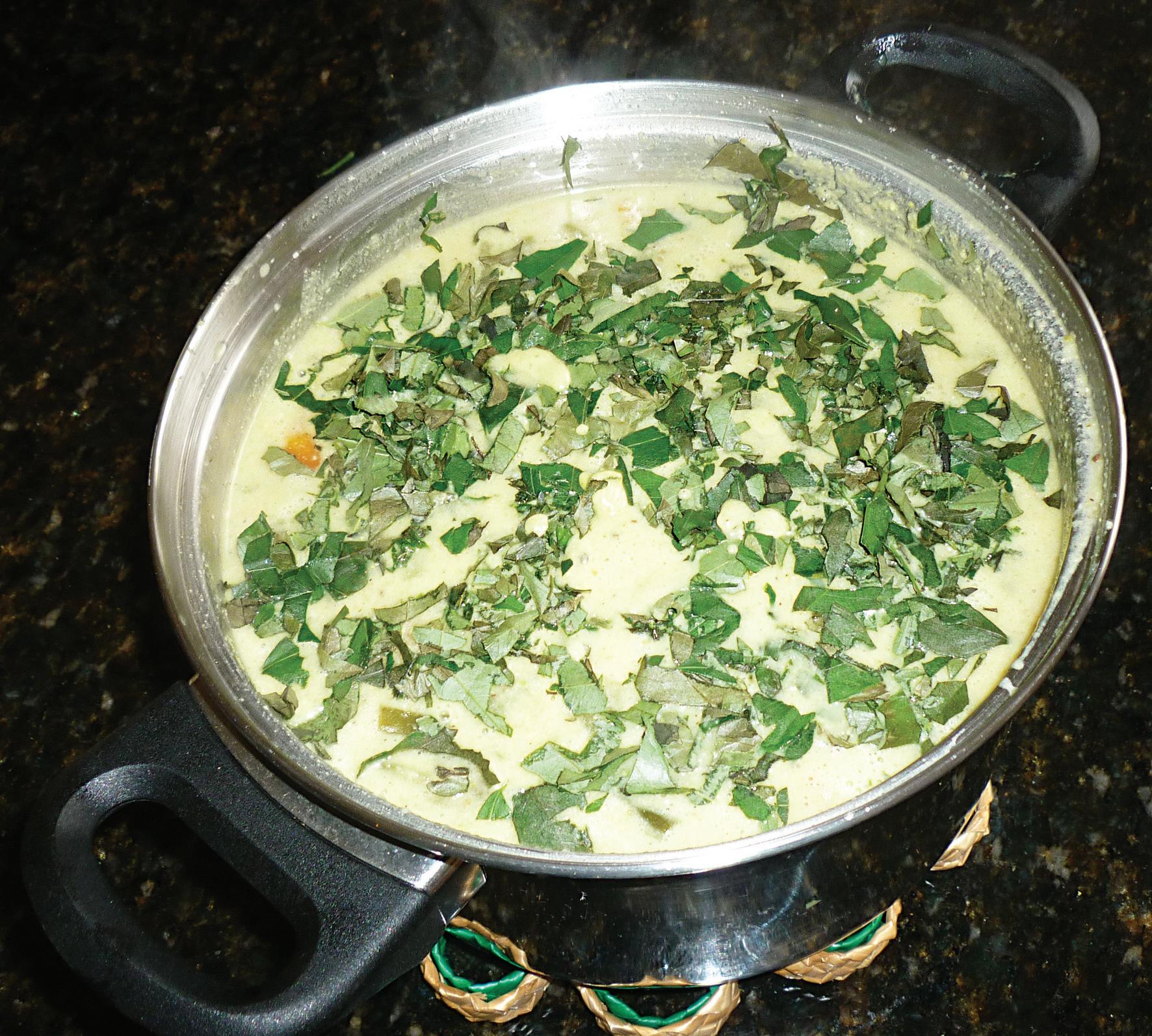
1/3 tsp mustard seeds
1 tsp olive oil
Apart from getting more exercise, we need to change our diet for the better too. Switching to low GI foods such as multigrain bread, oats, low-fat milk and yoghurt, and most fruits can aid in reducing the risk of diabetes. We should also eat less carbohydrates, and more protein and nuts. Lentils do have cabohydrates in them, but these are good
Soak all three lentils in a dish for two hours. Drain and add salt to soaked lentils. Add green chillies to taste. Put the mix in a grinder and grind coarsely. Keep aside. Chop fenugreek leaves finely, add ginger and fresh coconut. Add to coarse mix with a pinch of asafetida, turmeric. Next, heat the oil in a small vessel and add mustard seeds. Add to the coarse mix when they crackle, mixing well with your hand. Shape the mix into small ellipse-shaped balls.
Fill the bottom of a large vessel with water and boil. Place a colander on top of this dish. Place the balls gently into the colander and close with a lid. Cook for six to seven minutes. To check if the balls are cooked, wet your fingers slightly with water, and then touch the ellipse-shaped balls. If none of the contents stick to your fingers, it means the nunchinundes are ready. You could also use an idli cooker to cook the nunchinunde.
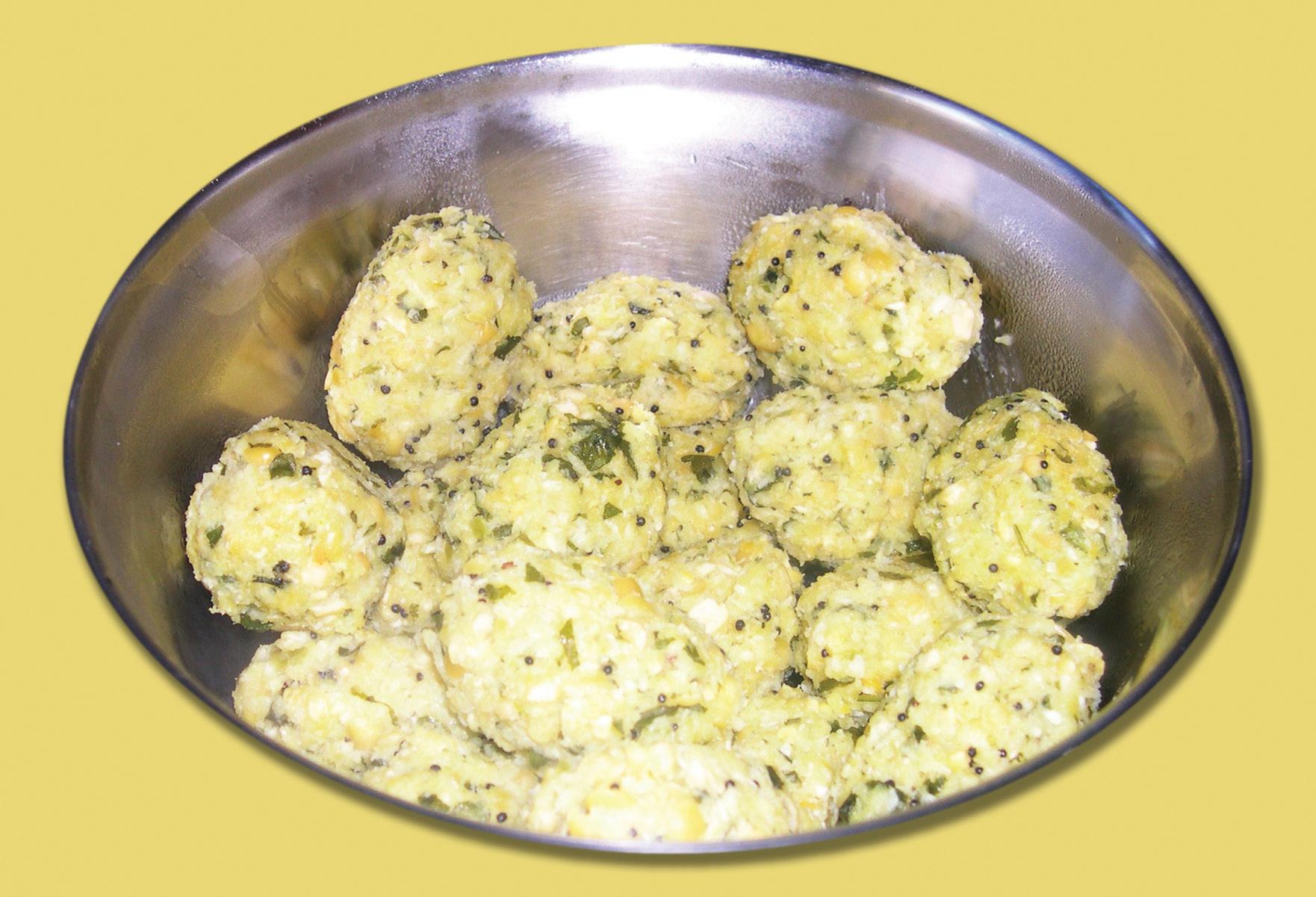
Rotti

My mother is always on the look out for recipes that don’t call for a lot of carbohydrates and oils, as she is quite health-conscious. Here’s another recipe she picked up from a family member in India which is high-protein as it has been made purely from pulses.
1-2 handfuls green gram
1-2 handfuls brown chickpeas
1-2 handfuls of black eyed beans
1-2 handfuls of brown beans
3 onions
1 tbsp cumin seeds
Salt to taste
½ cup coriander
1 large potato and freshly grated coconut (both optional)
Place all the pulses/legumes in a large dish and soak in
Saagu
This recipe is a traditional one and my personal favourite as it is filled with fresh vegetables and flavoursome spices. I learned this one from my grandmother, although my mother makes it as well.
½ kg beans
4 carrots
1 large potato
1 turnip
½ kg fresh peas
1 chokos
1 tomato
For the masala
½ tsp white poppy seeds
4 half inch pieces of cinnamon
1 tsp cumin
1 medium onion
6 cloves garlic
2 pieces of ginger, 2” each
4-5 green chillis
1 tsp fresh coriander leaves
1 pinch turmeric
1 pinch asafoetida
12 almonds, soaked in water for 2 hours
1 tbsp grated coconut
½ tsp powdered jaggery
1 small cup water
Salt to taste
For the tadka/tempering
1 tsp olive oil
¾ tsp mustard seeds
Pinch asafetida
Chop all the vegetables evenly into half inch size, so that they are all roughly of the same size. Grind together poppy seeds, cinnamon, cumin, garlic, chopped onion, ginger, green chillis, turmeric, asafoetida and grated coconut. Drain the almonds and peel off the skin. Add to grinder mix. Grind the ingredients without adding water until the mix is a coarse, slightly wet powder. Next, add a small cup of water and coriander leaves to the coarse mix in the grinder, and grind once more. The consistency should be a bit more runny than chutney, and it should remain coarse.
BY MALAVIKA SANTHEBENNUR
carbs, needed by the body.
It might be surprising to learn that the traditional recipes I am sharing below are healthy, tasty, filling and a good option to deep fried, high-carb foods that dominate the Indian palate.
water for 3-4 days. Make sure you change the water every day, draining thoroughly and refilling. After this time, drain all the water from the pulse mix and sieve through a colander, making sure the pulses are dry. Place the pulses in a separate bowl in the fridge for 2 days. When ready to cook, grind all the pulses in a dry grinder. Don’t add water when grinding, so it is important to grind it in a dry blender. Empty the mix in a dish and add finely chopped onions, and finely chopped coriander. Add cumin seeds and salt to taste. If you don’t have cholesterol issues, add fresh grated coconut to the mix. Next, take a large handful of the mix and pat it flat onto a pan until the mix covers the pan in a layer. Spread oil evenly over the flat mix on the pan. Cook on stove until crisp and golden brown. Flip over and roast.
Serve with a fresh vegetable salad. End the meal with yoghurt or buttermilk, either by itself or with rice, to aid digestion.
Fill a large dish with water and boil beans and turnip for about a minute. Following this, add all the other vegetables. There should only be enough water to immerse the vegetables. Pour out any excess. Add the ground coarse masala to the vegetables. Next, add salt to taste and powdered jaggery, and mix well. Cook the mix, stirring until boiled well and you see bubbles. The consistency should not be too thick, nor should it be too runny. Garnish with cut curry leaves. Add oil to
NATIONAL EDITION
www.indianlink.com.au
FOOD
Bob Christo: Bollywood’s Aussie star
He was the bald foreign baddie who would get beaten to Bob Christo’s life was perhaps as daring as his stunts on screen - he once cut off a vulture’s head and drank its blood in a fit of rage on home turf in Australia.
In a memoir published posthumously, he turns the pages of his life.
“There were happy times, and sad times, but it was a life fully lived,” Christo writes in his autobiography, Flash back: My Life and Times in Bollywood and Beyond (published by Penguin-India). He died March 21 this year at the age of 72.
For the civil engineer-turned-screen villain who adopted India as his homeland, the tryst with Bollywood began with an encounter with yesteryear actress Parveen Babi at the launch of The Burning Train in 1977.
On his second day in Mumbai, the actor saw some people filming on the streets.
“I started to talk to them and found out that the director’s name was Prem Kapoor...I asked him if anybody could help me meet Parveen Babi,” he said.
“I described how I had found the Time magazine in Rhodesia with a big write-up about the Indian film industry and Parveen Babi,” Bob remembered.
A few days later, a cameraman told him that there “would be a mahurat for The Burning Train and Parveen Babi was one of the heroines”. The villain met Babi at the Bombay Central Railway Station where the movie was being shot.
He recalled: “Zuber (the cameraman) ordered me to stand where I was, in front of a pillar, and said ‘Parveen
Babi will come here’.”
“After about 15 minutes, a lady appeared in front of me and said, ‘Hello, I am Parveen Babi’. I looked at her for a moment and then answered, ‘You are not Parveen Babi,” he wrote.
“Pulling the Time magazine out of my pocket, I pointed at it and said, ‘this is Parveen Babi’. The lady laughed and retorted, ‘In the magazine, I am with makeup and full get-up. Normally, I don’t wear make-up,” the actor reminisced.
Born in Sydney in Australia in 1938, Bob has appeared
For the civil engineer-turned-screen villain who adopted India as his homeland, the tryst with Bollywood began with an encounter with yesteryear actress Parveen Babi at the launch of TheBurningTrain in 1977.
in at least 200 movies in 20 years and in 15 television serials, including The Sword of Tipu Sultan Bob’s metamorphosis into a villain from a unit hand is interesting. At an outdoor shoot of the movie Abdullah starring Sanjay Khan, Raj Kapoor, Danny Danzongpa and Zeenat Aman in Rajasthan, Bob impressed the actors with his “skill as a masseur”.
He gave a massage to Sanjay Khan, who went on to give him a role.
“While Sanjay was talking about the day’s shot with Zee
(Zeenat Aman), which was the picturisation of a song between the hero and heroine, he mentioned that the previous night he had decided on the casting of an evil tantrik (occultist) who keeps advising the robber (Danny) in Abdullah,” Bob said.
“Sanjay looked at me and asked if I would like to play the character. I asked how much work it entailed?” he wrote in his memoirs.
Sanjay said, “Three important scenes and climax fights”. And for that Bob “had to shave his head and grow a full beard”. Bob agreed and the villain was born.
If language was a barrier, weekly lessons in Hindi by Qadir Roomi helped Bob bend the block.
“As soon as I started taking tuitions in Hindi, I tried to translate everything I could see written in Hindi script,” Bob said.
By then, he had also married a local Parsi woman, Nargis, and settled down in Mumbai.
A stream of movie offers followed till the beginning of the 20th century. Bob played Bollywood baddie scores of times, including in hit movies like Qurbani, Namak Halal, Mard, Mr India and Agneepath.
“I was ready to give up working in Indian films as an actor,” Bob said.
He left Mumbai for Bangalore to join the Golden Palms Resorts and Spa as a gymnasium manager and yoga master.
But a series of spinal injuries and a surgery in 2006 changed his life. Bob returned to his calling - building until his death.
Madhusree Chatterjee
Baap re baap!
Apparently the star added his personal style to his screen style, but sad to say, the promo visuals that have recently been released indicate a certain lack of style. Now perhaps we’re biased. Perhaps we’re too used to seeing the Big B in dignified casual or formal wear, tastefully designed to suit his 6ft+ lanky frame. We accepted his face foliage, we thought it suited a man of his age and stature, and added to his charm. The hair, we thought, a subtle salt-and-pepper falling over his forehead in a subtle cowlick, doesn’t he look wonderfully distinguished?
And now, there go all our visions and ambitions as our Bbuddah turns up in a flashy, flamboyant avatar, which, I’m sorry to say, doesn’t seem to suit him at all.
Okay, so it’s just a movie, one may argue. But hey, if one is to believe that the Big B writes his own blogs, he’s certainly taking some of the lessons learned on screen into his personal life. After riding a ‘beast bike’ in the movie, he’s thinking of getting himself nothing less than a Harley Davidson. Yep, he’ll fit right in there with the leather and studs, but please, please do stop at the tattoos!
avoid looking foolish or tripping over himself.
And a final word on the singing. Yes, the Big B has done a good job on Rang barse and Main yahaan tu wahaan, but what’s going to be the outcome in Bbuddah-Hoga Terra Baap? He sings the title track in ‘a Capella’ style, which means solo or a group singing without any instrumental sound. Amitabh has added vocal beats to create the sound of instruments. Hmmmm….
The brainwave of music director duo Vishal-Shekhar, they did the basic setup and the Big B replaced every track with his voice, recreating the sounds of approximately 10 to 12 instruments, from drum to bass to the snare to the chorus.
Amitabh shared his experience, once again on his blog, saying: “So Shekhar, of Vishal and Shekhar, have composed something that caused each one that heard it, the goose phenomena. And now that it is done, comes the improbable part. They want me to sing it! And this is where things shall go horribly wrong.”
Oh dear! He may be India’s most prolific superstar with megahits to his name, but perhaps its time Amitabh Bachchan toned it down just a teeny-weeny bit.

Bbuddah Hoga Terra Baap is the star’s latest homeproduction, and no guesses for who’s in the lead. This time the Big B plays an old man who feels young, but his wardrobe leaves much to be desired. Trendy eye gear, colourful scarves, bright shirts, designer denim, two watches may seem a bit much even for his die-hard fans.
Of course, it’s not all fun and games for this 68-yearold, and I quote from his blog: “Running at 70 is a bit of a bother! You feel you can move with some fluidity, but no! The legs do not respond to what the mind is telling it to do and you suddenly realize that the weight of your body is not that lithe anymore.” He penned this cushioned with hot water bags and electronic heating devices to ease out the numerous folds of muscles, that had remained dormant and in retirement for a very long time.

And dancing was no joke either, admits the star. “My knowledge of dance has been excruciatingly minimal. And now with the modern day choreographers and dancers that have developed a style of their own, it is tough going for me!” Amitabh posted on his blog www.bigb.bigadda.com. Matching the dance steps of the younger lot has been a nightmare, with the actor desperately rehearsing to try and
“I am trying to resist this compulsion from them and find myself losing at the moment, but I know for sure that I will remain in that state and lose. May god help all the music purists in bearing up with me and for overlooking this great farce that is about to take place over the weekend,” he posted.
Well, he may have lost it a bit, but fortunately Amitabh’s sense of humour still seems to be firmly in place. Now once we’re up against the movie, we’ll know for sure if the Big B has finally admitted to senility!
Produced by Viacom18 and AB Corp, Bbuddah-Hoga Terra Baap will release on July 1. The movie is written and directed by Puri Jagannath, and features Amitabh Bachchan, Hema Malini, Raveena Tandon, Sonu Sood, Sonal Chauhan, and southern actors Charmi and Prakash Raj.
Sindhura Vyas
66 <> JUNE (1) 2011 INDIAN LINK
ENTERTAINMENT www.indianlink.com.au
Amitabh in BbuddahHogaTerraBaap
Cine Talk
Being human in a way only Salman can
Film: Ready

Cast: Salman Khan, Asin, Paresh Rawal
Directed by: Anees Bazmi
She’s a runaway bride. He’s a runaway rogue, a little rough around the edges but a good hearted lovable soul. Salman Khan can play this character over and over again with his eyes closed. In Ready he is back to playing the lover-boy clown.
“Mr. Fix-it” and “Ms Hum Apke Hain Conwoman” flirt and get naughty in exotic locations. They don’t generate chemistry. They are just being around.
Jeez, these two never tire of saying cheese! And when the going gets cheesy there’s always the family to fall back on. There are three families, living in homes that appear to have been built to accommodate over-sized families. The setting is almost laughably anachronistic.
Salman Khan and his director Anees Bazmi pay a hefty comic homage to Hum Aapke Hain Koun. The Salman-Asin romance unfolds against the backdrop of a commodious joint family where every family-member seems determined to have a good time even at the expense of good taste.
True, Asin lacks the gamine charm of Madhuri Dixit. But then the Salman Khan in Ready is not quite the Salman Khan from Hum Aaapke Hain Koun. He hasn’t aged. He’s just become more smug and self-confident. Many times we catch him looking bored on camera. But that is this iconic star’s style statement.
When you are Salman Khan, you can slip out of a character when you want. No one is complaining.
Bazmi’s script, a shoot off of a Telugu hit, accommodates more characters than Goa during the tourist season.
Every character is over-dressed and overthe-top. Then men are constantly looking for reasons to say goofy corny things to one another. That’s the required mood of this panga-’mirth’-lena comedy with an attitude that stretches from one end of the lengthy narration to the other with hardly a break for the plot to gather together its thoughts.
Bazmi keeps the proceedings neatly on the side of good taste. Innuendos are avoided, and partly so because Salman has an image of the good-bad boy. He never offends refined sensibilities with his wildly bratty antics, though he never shows any inclination to be one of those refined types himself.
He is happy being human in a way only Salman Khan can be. He gets able support from some solid performers like Akhilendra Mishra, Sharad Saxena, Manoj Pahwa, television comedian Sudesh Lehri and Mahesh Manjrekar whose hilarious act as Salman’s dad is lifted from Sanjay Chhel’s Khubsoorat.
Strangely the women performers are all vapid to the point of seeming sedated. This is a men’s comedy with women welcome to join the fun.
But nobody minds. And not because this is a mindless comedy. The quality of the gags is often higher than what we usually get in Bollywood comedies. But the film suffers from an overloaded narration. There is too much effort to cram in “entertainment” at every possible level. There is also a rather lame attempt to define the status of women in feudal households. But the attempt is so hurried and cursory, it’s almost farcical.
Replete with tongue-in-cheek references to many earlier blockbusters including Sooraj
Barjatya’s Hum Aapke Hain Koun, Ready is like one of those familiar tunes sung to a new set of lyrics that you may not approve of but you empathize with because it offers the comfort of the familiar.
Having said that, the film, it must be confessed, doesn’t really offer even diehard Salman fans the fun-quotient expected from the mega-star. Too many people colonise
this domestic comedy. Boisterous uncles, over-dressed aunties, under-intellectualised gangsters and irksome henchmen are all greedy to be noticed. The trouble is, they aren’t doing anything that is terribly exciting or engaging, except playing the foil to the star of the show.
Taking the horror genre the x-tra mile
Film: Haunted3D
Starring: Mahaakshay Chakraborty, Tia Bajpai
Directed by: Vikram Bhatt
The best thing one can say about this riveting romp into the kingdom of the eerie is that it really didn’t need the 3D format to make an impact Haunted works just as effectively without the 3D. It takes the horror genre in India as far as it can go. And then it goes that extra mile in search of the shivery feeling that most films in India from the genre seem to give the miss.
Vikram Bhatt reinvented the horror genre eight years ago. In its intuitive amalgamation of Hindu mythology with horror Raaz was a threshold-crosser. In Haunted Bhatt goes full-throttle in search of that language of supreme scares that somehow we furtively enjoy even when we
pretend not to.
Haunted brings back some of Bhatt’s patent horror motifs… The scenic Ooty landscape shot with panoramic panache by Pravin Bhatt. The tranquil location perpetually secretes untold terror and horror. And here, if the terrible truth be told, the terror is untold. The fear of the unknown is explored to the hilt, as the screen explodes into a series of episodes where the boy and girl try to escape Satan’s latest reincarnation, a piano teacher with lust on his mind. Aarif Zakaria as the ghoul has little playingtime on screen. But his eerie sordid imprint is all over the plot.

In the tradition of Vikram Bhatt’s other horror films there are very few incidental characters claiming our attention. Brent Robinson’s screenplay restricts itself to the predicament of the main characters. There’s an interesting attempt to play with time passages as the hero Rehaan (Mahaakshay) goes back 80 years to save the dainty damsel from the perverse pianist. Mahaakshay Chakraborty shows a certain composure for
a chance to dance.
The narrative flows smoothly and some of the special effects are to die for. If you are a fan of the horror genre you really can’t afford to miss this one.
JUNE (1) 2011 <> 67 NATIONAL EDITION
Subhash K. Jha
ENTERTAINMENT
www.indianlink.com.au
Subhash K. Jha
BUZZThe
Sonakshi kicked!
Sonakshi Sinha is one smart girl. Following the runaway success of Dabangg, she’s now bagged a pretty meaty role in Kick, once again paired opposite Salman Khan. And this time, she’s going to get much more screen space to make her presence really felt!
“Kick is a remake of a south Indian film. The girl has a lot more to do. It’s a damn good role. I’m very kicked about it. Yeah, there’s definitely much more scope for me in Kick than Dabangg and I am going to make the best of it!” says the confident newcomer. And she’s not the only Sinha in the news. Brother Kush plans to assist Dabangg director Abhinav Kashyap. “Kush wants to direct films. He’s assisting Abhinav in directing ads. I don’t think Abhinav is directing another feature film right away. As and when Abhinav makes a film, I’d love to be part of it, provided he wants me to,” says Sonakshi, subtly pushing the point.
She also talks about how her father Shatrughan Sinha hosted Kaun Banega Crorepati in the Bhojpuri language. “I had never seen him talk in Bhojpuri. He did it very well. I’m looking forward to doing a film with my dad,” says the enthusiastic youngster who seems keen to take her career places.
And why not, with three films in the kitty?
“There’s Kick with Salman Khan, Rowdy Rathore with Akshay Kumar and Vishwaroopam with Kamal Haasan. Then there’s Dabangg 2 coming up,” reveals Sonakshi. For Vishwaroopam she will sport both, the Indian and western look, and she’s looking forward to seeing herself in lots of saris.

But for now, the new babe in Bollywood will have to wait a year before committing to any other projects, because Sonakshi’s just too busy. And wiser, she admits. “I’ve realised many things about myself. Like when pushed to the wall, I can fight back. I can handle all the pressure. Yes, there were lots of attempts to corner me. But thankfully, I could take the beating on my chin,” says this feisty girl. Well, there you go, Shatru, a real chip off the old block!
GUESS WHO
SRK backs a winner
her future as well.
(Find the answer under Caption Contest)
Kanika Dhillon is just 28, has written a book, is a London School of Economics (LSE) alumnus and has penned the screenplay and dialogues of Shah Rukh RA.One, touted to be Bollywood’s costliest film. And as creative content head of Shah Rukh’s Red Chillies Entertainment, she firmly believes that King Khan is among the few producers in Bollywood who nurture young talent. “SRK is among the few people who nurture young talent in the industry, without looking at the background, the experience, age and other such things. He is one of those few who is so clued in with what the younger generation likes and dislikes...and that’s what makes him what he is!” she says enthusiastically. The star magnanimously agreed to unveil her Bombay Duck Is A Fish, which traces the journey of small-town girl who leaves her cushy corporate job and comes to Mumbai to make it big as a Bollywood filmmaker. Shah Rukh is portrayed as a phenomenon in Kanika’s book, and it looks likely that he’ll be a guiding light in
Kudos to SRK for spotting talent and giving it wings to fly!
Desperately seeking Raj Kiran
Jog the memory to Bollywood in the mid-‘70s and ‘80s, and it’s quite likely that you’ll remember an actor called Raj Kiran. With his trademark thick moustache and traditional good looks, the actor appeared in movies like Arth and Karz, before suddenly disappearing from the filmi duniya

Friends like Deepti Navel made a concerted attempt to find Raj since the past few years, but with no success. Until Rishi Kapoor took on the job and finally found the missing actor in a mental institution in Atlanta, USA. It certainly was a relief, as rumours about Raj Kiran’s demise were making the rounds, and the industry had begun to accept that they were indeed true. Raj Kiran was remembered as a charming, polite and cultured actor, a persona that came alive on screen. And now, thanks to Rishi, it’s quite likely that we may, in time, see the
SENGUPTA
actor back in Bollywood.
On his trip, Rishi Kapoor met the missing actor’s elder brother who told him that Raj was still alive, and the news was a huge relief. Apparently Raj has been confined to an institution in Atlanta because of health problems. However, what’s also shocking is that his family seem to have given up on Raj, and they don’t even bother to keep in touch with him. His wife and son abandoned him a long time ago, and the shock was more than he could bear. Things went steadily downhill after that, and Raj’s career ended with being incarcerated in a mental institution. However, Rishi Kapoor confirms that the actor pays for his own treatment thanks to sensible investments in the past. But the story is just beginning. Rishi intends urging the actor to come home to Bollywood, to jumpstart his career once again. He feels it will be the best way to instill confidence in Raj, and let him know that the industry hasn’t forgotten, and still cares. Good luck Raj, here’s hoping to see you in Bollywood soon.
68 <> JUNE (1) 2011 INDIAN LINK
ABHILASHA
brings us up-to-date on what’s hot and happening in Bollywood
?
ENTERTAINMENT
These days, this actress is known for her strong mindset
SONAKSHI SINHA
Who’s got Delhi belly?
Aamir Khan, who doesn’t ever do anything without a style of his own, recently threw a party to celebrate the success of Bhag D K Bose, a song from upcoming flick Delhi Belly. Now methinks Aamir must be battling butterflies in the tummy, as it’s the first time anyone has had a party for a song! Perhaps it’s the hottest thing in film marketing, but it certainly seems to be doing the trick.

However, all’s not well for one particular item number for this long-awaited, muchpublicised movies. Katrina Kaif was originally roped in to do her oomph act in the item song, but she’s backed off citing date issues and other work commitments. Bollywood’s buzzing that the hot Sheila took one dekko at Imran Khan and got a sinking feeling in the pit of her stomach. Now it’s great to act opposite Aamir, but Imran…well, he’s not that popular and probably looks younger than Kat! So that was that!
Well, next in line was item babe and strong contender for Kat’s crown, Malaika Arora Khan. But for reasons unknown and not much speculated, she’s refused to do the item number of Delhi Belly too. A frantic search revealed that Deepika Padukone’s out of the running too, as she’s shooting overseas. And besides, Deeps doesn’t have the dum of a Sheila or Munni, so the matter wasn’t pursued. So what’s going on? It seems that Delhi Belly’s number is going begging. Any takers?
38 years of marital bliss for Big B, Jaya

Bollywood superstar Amitabh Bachchan and Jaya Bachchan celebrated their 38th marriage anniversary this month and Big B shared the memories of his wedding day and honeymoon.
“It’s the 3rd of June... and its our anniversary... 38 years since 1973!!” Big B posted on his blog bigb.bigadda.com. “Still remember the speed with which everything happened on that day. It was a quick decision. Marriages generally are”.
“And before long I was heading across to a common friend’s place with my family for a simple Bengali wedding ceremony. Not many people at all. Just family and a couple of personal friends. There was a gentle quiver in the skies and a few drops of rain fell just before setting off. Some of the neighbours exclaimed that it was a good omen - the Gods send their greetings they said - and we were off !” he added.
The two had worked together in movies like Abhimaan, Chupke Chupke and Zanjeer and after their quick wedding they went to London for their honeymoon.
“Off on a plane to London, for the very first time. In fact, for me and for Jaya too, the very first time out of the country - minus my short visit to Nepal in the mid ‘50s,” he posted.
“I remember being invited by Rajesh Khanna and his wife Dimple, also recently married, to the hotel they were staying in for dinner and a celebration, and some of us, so taken up by the city, going out to the balcony of his suite and playing L O N D O N … LONDON !! A very innovative

little game that we had all played when we were kids,” he added.
Our very best to the Bachchan jodi: more happy times!
Lata’s not ready to call it quits yet
At 81, the Nightingale of India is still to sing her swan song, and she assures fans that that day is nowhere in sight on her horizon.
Yes, Lata Mangeshkar has worked for seven decades, recorded songs for over a thousand movies and sang in more than 36 regional Indian languages, but she’s still a force to be
A newspaper recently reported that Lata was planning to retire, sparking a touch of outrage in the evergreen singer. Her passion for music was evident in her response, as she also Mera maanana hai ki mera janam gaane ke liye hua hai aur jabtak mere praano mein praan hain, main wahi ”.
Lataji’s repertoire is astounding as she takes light classical to film songs to bhajans and pop in her stride, since starting her career as a playback singer in 1942.
Lata’s move to Bollywood in 1945 marked the beginning of a career that has only spiralled upwards, and she is undoubtedly one of the most talented and respected singers in the industry. Some of her more memorable renditions include Dil mera toda from Majboor, Aayega aanewala from Mahal, Aaja re pardesi from Madhumati, Pyar kiya to darna kya from Mughal-eAzam and the title number from Satyam Shivam Sundaram Her versatility came through in romantic numbers like Tumhen yaad karte karte, Ajeeb daastan hai yeh to naughty songs Main kamsin hoon, Bahon mein chale aao, as well as devotional tracks like Payoji maine Ram ratan dhan pao and O palan hare. It is said in 1963, when Lata sang the patriotic song Aye mere watan ke logon, it brought tears into the eyes of India’s first Prime Minister Jawaharlal Nehru. Lata also featured in the Guinness Book of Records from 1974 to 1991 for having made the most recordings in the world.
Although the Bharat Ratna awardee has cut down on her singing projects, she remains the eternal favourite of Indian film song lovers. And we hope the Nightingale of India continues to spread the sweetness of her song for a long time to come.
between John Abraham and Hema Malini? Send

Last
What’s the chitchat between Imran Khan and Ranbir Kapoor?
Imran: Dude, you’ve got to do something about your Casanova image…
Ranbir: Sorry, I’m not the marrying kind like you!
Shreyansh Chadha Auckland NZ
Shreyansh wins a one-year subscription to Indian Link newspaper
Another good one Ranbir to Imran: “You are one step away from joining the league of Bollywood top heroes, grow a stubble”
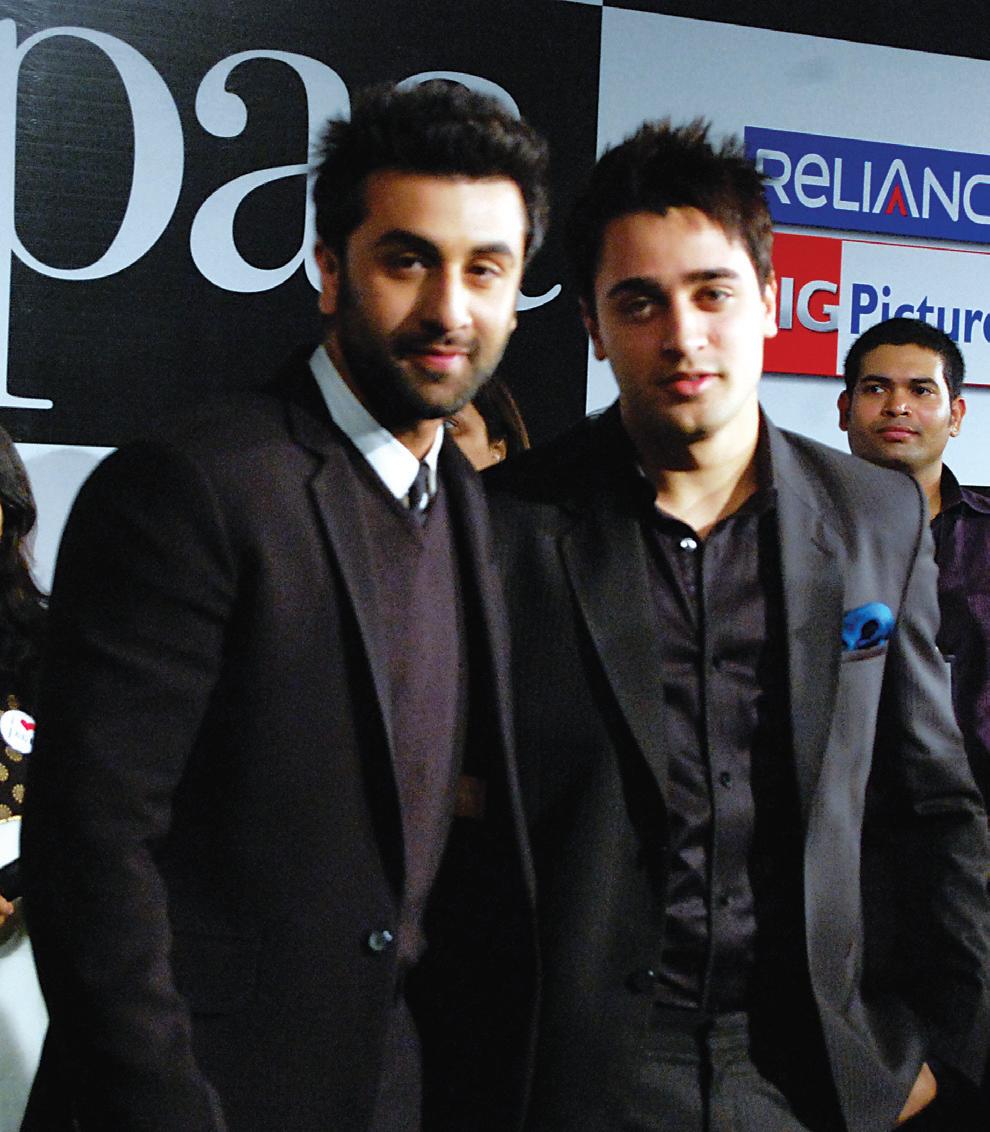 Raj Saneja Castle Hill
Raj Saneja Castle Hill
JUNE (1) 2011 <> 69 NATIONAL EDITION
www.indianlink.com.au
CONTEST GUESS WHO :ANSWER Sushmita Sen
CAPTION
in your responses to info@indianlink.com.au and win a surprise prize
issue Caption Contest winning entry
AMITABH-JAYA
SHAHRUKH KHAN
AAMIR KHAN
NSW
24/7, 365-day service from Gaura Travels
Gaura Travels was incorporated in 2006, and started operating in Melbourne from March 2007. It was founded by brothers Ashwini and Abhishek Sonthalia who were graduates from RMIT with Bachelor of Business Information Systems degrees, but had no travel industry background.
The idea to begin the business came about after finding a lack of quality service in the agents servicing the Indian Subcontinent sector. Gaura Travels focusses more on quality service than being the cheapest on price. Having said that, prices have to be competitive to be successful in any business.
Keeping in the mind the target audience who would want quality service, the decision was taken to open the office in Melbourne CBD to attract and service the professional office-goers who mostly work in the city. The location of the office is right in the heart of Melbourne CBD on Swanston Street.
“Another unique focus of Gaura Travels was in 2008 when we started using SMS technology to keep customers updated with special fares etc,” Ashwini Sonthalia reveals. “The power of this technology hit us when we sold almost 500 tickets in a single week in August 2008, when Emirates released a special fare to India for the first time. We were shocked with the overwhelming response and had 50-60 call-backs, in addition to attending to 200-300 calls every day, the whole week through”.
Every customer who books with Gaura Travels also receives a “Have a Good Trip”
SMS before departing and a “Welcome Back” SMS on returning from their journey. In Dec 2009, Gaura Travel took the next step of establishing a Call Centre and a unique dedicated 1300 FLY INDIA (1300 359 463) number to facilitate customers.
“It is so easy to remember, and the number can be called from any landline throughout Australia for just the charge of a local call,” Abhishek Sonthalia notes. The number was a great success and has now become an integral part of the branding of Gaura Travels all over Australia.
After marketing widely in Melbourne for 3 years, in 2010 Gaura Travels expanded by opening a branch in Adelaide which was welcomed by Indians living there who formerly used to book with travel agents in Melbourne or Sydney to get cheap fares. They now have a local presence in the heart of Adelaide’s CBD on King William Street.

And now, after the success of Melbourne and Adelaide, Gaura Travels has finally landed in Sydney in May 2011, announcing their presence in a very unique manner by opening a small office in Harris Park. The reason for this different strategy of location in Sydney was to have a presence before the eyes of the target customers as soon as possible.
“Sydney is a much bigger city compared to Melbourne and Adelaide, and a large proportion of the Indian community lives in the western suburbs unlike Melbourne and Adelaide where the community is quite fragmented,” Ashwini says. “It was our strategy to start operations with an office
in the western suburbs, and Harris Park proved to be the most suitable. There are plans to open a CBD office in Sydney as well, in keeping with the normal trend of Gaura Travels”.
The call centre of Gaura Travels has now increased its trading hours to 9am- 9pm, 7 days a week, 365 days a year.
“Needless to say, we have adequate teleoperators to keep waiting time on the phone to the minimum. We have been receiving a huge response from these extended hours and from having the facility operating on Sundays and public holidays. Many people
like to call in the evenings or on Sundays when they have more free time to make their travel plans, as the family can discuss and make travel decisions quickly and collectively”.
Gaura Travels is now the only Subcontinent specialist travel agent with offices in Melbourne, Adelaide and Sydney and is very upbeat about the future of the travel industry.
With plans to operate in Brisbane and Perth as well, Gaura is seeking to become a truly nationwide company.
Matrimonials
SEEKING GROOMS
Match for 30-year-old Manglik Hindu Khatri girl, 5’5”, fair, slim, well educated with moderate values. Innocent divorcee, has a son (no legal issues). Brother settled in Sydney. Looking for a well settled and educated boy, 32-38 years old. Min 5’ 6”. Caste no bar. Interested contact with bio-data and photo. Email: matrisyd@gmail.com or call 0418 770 827.
Punjabi Arora parents seeking well-settled/ professional match for beautiful, slim, unmarried, 37/ 165, IT professional, with strong family values. Brought up in India, settled in Sydney. Australian citizen. Status family. Caste no bar. Early marriage. Email with photo: ausgirl101@gmail.com
Punjabi Hindu Khatri, good looking, smart, homely girl, never married, 33, 5‘11”, looks very young, seeking tall Indian boy settled in Australia. Two brothers well settled in Sydney, caste no bar. Contact with photo and details on 0425 910 007 or ricky.bhalla@gmail.com
Seeking a suitable match for young looking, very fair Hindu lady, 53, 5’2, living in Australia for 25 years, works in a government dept. Groom must be between 47-55, well qualified, non-smoker, occasional drinker and vegetarian. Contact sydaus@hotmail.com.au

Seeking match for 39/165, unmarried, fair, slim, beautiful Indian Punjabi girl, family oriented and responsible, traditional values, IT professional, brought up in India. Australian citizen. Early marriage. Can relocate. Serious enquiries only. Caste no bar. Email with photo: sydgirl09@gmail.com
Alliance invited for a very fair, very beautiful, MBA, 33 years, Hindu Punjabi
issueless divorcee girl, Australian citizen, born and brought up in India. She is very caring, homely, responsible, loving and a sincere girl. Seeking a non smoker, teetotaller, Australian PR/citizen. Caste no bar. Contact with photo and details on perfectindianmatch@gmail.com.
SEEKING BRIDES
Hindu Punjabi business parents invite alliance for a beautiful educated girl for their highly qualified son 30/6’3”, a very well placed financial consultant with a leading MNC in UK. Will be in Australia in July. Caste no bar. Send bhp to ukshaadi@hotmail.com
Match required for an Australian citizen, Sydney resident, north Indian, 26 years old, 5’7”, slim, handsome and very fair engineer boy from Kayastha family. Looking for a suitable well educated Indian girl with family values. Caste no bar. Please send details to akhilsns@gmail.com or contact 0412 487 801.
Alliance invited for clean shaven Sikh/1972/5’11”/ very decent, responsible, handsome/BE/MBA boy, working as head of marketing in a software company in India, issueless divorcee. Kindly contact Manisha Bakshi on 0401 542 550 / manishabak@gmail.com
Educated Indian man, Australian citizen, financially secured, mid 40s, seeking honest Indian lady in view of marriage. Reply 0406 688 262 or email tamavu@hotmail.com
Aussie ocker Christian seeks Christian bride. I am in the fifties, 5’10”, 110 kg, own home, a full head of hair, pensioner. Tel: 0459 919 717. Email: nottattached@aol. com
70 <> JUNE (1) 2011 INDIAN LINK
www.indianlink.com.au ADVERTORIAL
Ashwini and Abhishek Sonthalia of Gaura Travels
ARIES March 21 - April 19
This month is going to be a highly emotive month for you, where the cards indicate that your patience and tolerance are going to be tested. There will be a lot of activity around you, and important decisions around work and finances are also suggested. There is significant news coming to you regarding a project or idea that you have been working on, which is going to make you feel more balanced.
TAURUS April 20 - May 20
The cards indicate here that you need to feel the positive vibes that surround you at the moment, making anything achievable around you. There are suggestions also that you may be feeling a little agitated and upset at times, as things are not moving as fast as you would like them to move. There are some changes around your work area which need to be addressed. Take time out to have your eyes checked.
GEMINI May 21 - June 20
The cards indicate that you are feeling more settled this month and more in control. The Ace of Pentacles also suggests a small increase in your financial situation. There is a sign also that you will be trying to sort out things with an emotional relationship which has been causing you some stress lately. There may be some positive developments where you will start making plans together for the future.


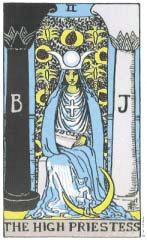






CANCER June 21 - July 22
The cards indicate that you are going to take a long hard look at your life. You have been worrying about life and how to go forward with plans and are worrying about the health of a loved one, who has not been feeling well for a while. Take a look at speaking to a spiritual healer to help them feel better and less stressed. Look at making some health changes too this month.
LEO July 23 - August 22
There is a strong indication with the presence of the Tower card here that major chances are taking place within the love, work and self-development areas of your life. A new force is around you to change things and focus on what is important. You have also decided to put some major purchases on hold for the moment. A work colleague may be leaning on you a bit more than you would like, so concentrate on yourself.
VIRGO August 23 - September 22
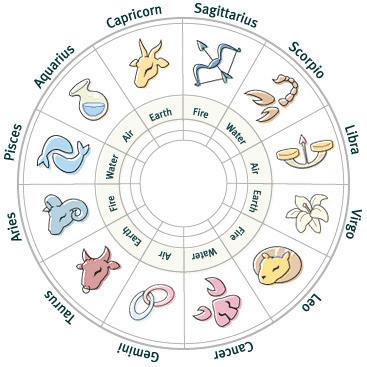
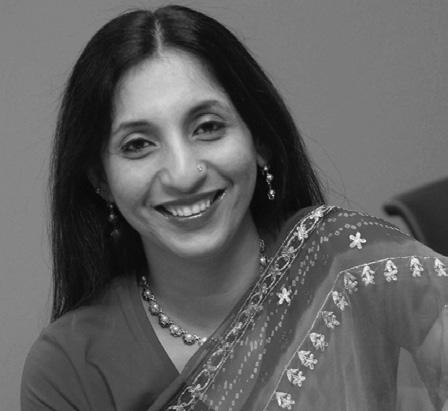

The cards indicate a time of increased energy and motivation. There is also a sense of focus around, and you are in the mood to deal with things on a priority basis. Of late, you have not been able to concentrate on matters relating to the home and work balance. Work has been a bit slow and you are looking at other ways of bringing in finances. Take care of yourself as headaches are being shown here.
Newly Opened. 482 Canterbury Rd Campsie
Natural Gemstones, Crystal Quartz, Freshwater Pearls, Sterling Silver, Metallic Accessories, Leather Strings

Ready made Necklaces, Bracelets, Earrings, Rings, Pendants, Brooches
Jewellery Making / Remodelling Available

Open 7 Days. 9:30am – 6pm. Ph: 0297878603 • JAY – 0416130688
Email: jjn688@gmail.com
Retail/Wholesale Welcome
LIBRA September 23 - October 22
The cards indicate here that you are concerned about the changes within a love relationship around you. There is a feeling of not knowing what to do, with the presence of the Two of Cups around you. A past influence seems to have come back, which is causing confusion and hesitation. There is also a feeling of increased energy around you and it is time to make some decisions and stick to them!
SCORPIO October 23 - November 21
There seem to be a lot of changes this month with the Two of Swords around you, with some matters leaving you a little confused. The cards are pushing you towards making some major decisions and having confidence in yourself, with the assurance that you can do anything in the coming months. You have kept yourself back for some time now and it seems that your confidence and self-belief is returning.
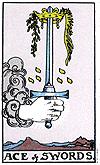

SAGITTARIUS November 22 - December 21
The cards indicate new beginnings for you, and you seem to be changing your attitude towards everything. Lately you have not been feeling that good around home and work. You will also see a change within your personal relationships, as there has been tension between you with the Three of Swords leaving you wondering what to do for the better. The cards indicate a phase of relaxation around you too.
CAPRICORN December 22 - January 19
The cards indicate a time of confusion and decisions. There are major changes coming up and the universe is forcing changes on most areas of your life right now. You have not been content for a while, and this is the time to make up your mind about work, love life and future. You have all the ingredients to change your life and the Sun card indicates success, once you take the leap into unknown territories.
AQUARIUS January 20 - February 18
The cards indicate a wonderful time to get your point across and show that you can make major changes around your life. You need to communicate with someone very clearly, as you have not been expressing yourself lately. Work has been full-on pressure, and you are feeling quite exhausted. Take good care of your health and make sure you are eating well and sleeping properly, as there are indications of irritability and small arguments.
PISCES February 19 - March 20
The cards indicate here with the presence of the Queen of Cups that you are about to spill the beans on something that has been troubling you for a while. There have been some tiffs with someone who has not been supportive of you and your needs, and you are about to put them right. Finances are about to become more settled and there is an indication that you will be moving into a more balanced time.
JUNE (1) 2011 <> 71 NATIONAL EDITION
STARSFORETELL Tarot
February 2010 Tarot ‘n’ You Tarot ‘n’ You By NANCY SOOD www.nancysood.com
June 2011 Tarot www.indianlink.com.au
predictions for
Tarol predictions for
For expert coaching in Lowest Fee Guaranteed IELTS ENGLISH GURU Suite -1, 71 A Macquarie St, Parramatta, Phone 0411 520 546, 9687 9741 www.englishguru.com.au • Power Packed Sessions. • One and Two Weeks Crash Courses Available. • Money completely refundable, if not satisfied with the first tuition session.
Thank God for American pie!
big guns in uniform said in unison, “We have now lost our trump card we used to yank a couple of billions a year from those dumb Yankees who think we are fighting on their side.”
With a wry smile the President said, “Don’t you worry, chaps; we can still milk them by threatening to let our all-weather friends in Beijing to get a dekko at the crashed helicopter tail with secret stealth shield”. “Wah”, the top brass applauded.
The PM asked what if the enemy on the eastern side did a copycat job, to which the ISI chief said, “The baniyas don’t have a backbone. I have threatened that we have identified targets to attack all their IPL grounds. And that should keep our own cricketers happy too…”
Next day, newspapers all over the world carried the big story of the vanquishing of the WMW, and rambled on about how the SEALS had smoothly sallied so far inland. A couple of weeks later the entire plot was panned out for the whole world by a baby-faced blonde Aussie guy Assange through his WikiLeaks.
The story went like this.
Usually the VP is a useless person sent around to attend funerals of heads of states. Was his presence a portent that this meeting had something to do with someone’s death?
Who flushed him out? Was it the CIA or its ‘trusted’ and ‘co-operative’ ally ISI? Neither. It was the KFC. No, not that fried chicken conglomerate founded by the genteel-looking colonel from Kentucky! What was it then? Patience, dear readers...
On that quiet Sunday morning when other parts of the world were celebrating May Day, a few nondescript cars arrived at short intervals at that famous house at 1600 Pennsylvania Ave. It happened so early in the day that even the usual suspects from the Fourth Estate, who keep an eagle eye on the building bearing an elaborate eagle on its crest, did not take much notice of the activity.
A day earlier the walls of the building’s Situation Room, where critical decisions affecting many parts of the world are taken, were washed and wiped for the May Day D-day.
“EKIA is a Swedish store; they must be sending new furniture for the old man. Haven’t you seen him watching videos on that decrepit desk for years…”
The first to arrive was SOS: no, nothing to do with May Day, but Secretary of State Hillary Clinton. The following vehicles brought Homeland Security Adviser John Brennan, Defence Secretary Robert Gates, the top military brass and Vice-President Joe Biden.
Now, the VP is a useless person who is sent around to attend funerals of heads of states. Was his presence a portent that this meeting had something to do with someone’s death?
The dedicated dozen watched every move and listened to every word sent over satellites from two dozen daredevils, several thousand miles away, as they stormed a high-walled mansion right in the middle of a military cantonment combing for the world’s most wanted – WMW – who was turning out to be as elusive as Iraq’s WMDs.

Watching this drama from his den at CIA
headquarters a few kilometres away, the mission’s mastermind Chief Leon Panetta was providing a running commentary to the Situation Room. When one of the MH helicopters hit the high wall and had to be scuttled, the White House watchers’ collective hearts almost collapsed, as did Obama’s reelection hopes. But a few moments later when the words “Geronimo EKIA” were relayed, they jumped with joy and did a jig.
A few blocks away, ISI operatives, monitoring this hide-out 24/7 at the command of some of their present and former bosses, puzzled over the cryptic message.
Junior operative Pasha asked his senior Gul what the word ‘Ekia’ meant. Gloated by his superior status, Gul replied, “It is a Swedish store; they must be sending new furniture for the old man. Haven’t you seen him watching videos on that decrepit desk for years…”
“Gul sab, what is ‘Geronimo’?”
“It may be a kind of chair. You know that store gives fancy names to their mundane flat pack stuff, all made in China”.
“I heard EKIA, not IKEA”, junior said.
“Arre bewakoof, we write everything left to right,” Gul wore a smile, satisfied with his smart replies.
“But how could seals get here? We are nowhere near the sea!”
This seemed to have stumped the normallyinventive Gul, who merely scratched his head, signalling no more questions.
In the capital, some 50 km south of this monitoring station, a much more serious discussion was going on in the Cabinet room among the PM, ISI Chief and the military moguls.
On entering the room, a surprised President queried why everybody looked so glum. The
Last August when the CIA got a tip about WMW’s possible hideout, it swung into action. CIA had truckloads of clues on their lean and mean target since he was created and crafted by them in the Cold War days to fight the Soviets in Afghanistan.
Senior sleuths specialising in South Asia, viewing reams of data cascading from laptops, looked for every detail from the turban to the toe of their tormenter – his temperaments, tactics and tastes. Ah, tastes! Something clicked in Chief Panetta’s brain and a plan to open a chain of KFCs all over the Indus plain was born.
During his salad days in Saudi, young Osama was brought upon al Kabsa, a traditional Bedouni dish of camel meat. During his nomadic years fighting the Soviets in Afghanistan, he developed a special liking for the Kabuli kind of fried camel patties.
Check-out chicks – all CIA trainees – in the new KFC outlets were asked to keep a keen eye on buyers of this special dish. Punjab, the culinary capital of the sub-continent, spurned this hard meat and the take-away venture didn’t take off.
However, at one particular outlet a couple of chaps kept coming every night for the takeaway Kabuli Fried Camel. Word was sent to CIA HQ. A tail was put on these two couriers; it led to a high-walled mansion in the midst of military bungalows.
On Sunday night, the manager of the KFC outlet in Abbotabad gave the couriers a huge bucket of nuggets as a gift for their patronage, besides the usual patties to the chief resident. A secret signal went westward. The bucket, mildly laced with sedatives, took care of the two dozen occupants in the first two floors. And a little later the stealth helicopters flew in. The rest, as they say, is history. So kudos to KFC!
72 <> JUNE (1) 2011 INDIAN LINK www.indianlink.com.au BACKCHAT
Osama’s death has revealed that even for the most hardened souls, a temptation is a temptation, VIRAMANI reports from Abbottabad.
Illustration: Prashant Dixit

JUNE (1) 2011 <> 73 NATIONAL EDITION


74 <> JUNE (1) 2011 INDIAN LINK

JUNE (1) 2011 <> 75 NATIONAL EDITION

76 <> JUNE (1) 2011 INDIAN LINK





 Rajni Anand Luthra
ASSISTANT EDITOR
Sheryl Dixit
Rajni Anand Luthra
ASSISTANT EDITOR
Sheryl Dixit































































































































 BY ROY LANGE
BY ROY LANGE




































 BY THOMAS E KING
BY THOMAS E KING











































 Raj Saneja Castle Hill
Raj Saneja Castle Hill






















